Introduction
Robotic Process Automation (RPA) is revolutionizing business efficiency by utilizing software ‘bots’ to handle routine tasks traditionally performed by humans. From data entry to interacting with digital systems, RPA enhances accuracy, productivity, and allows for a reallocation of focus to more complex tasks. To successfully adopt RPA, it is crucial to identify processes ripe for automation and understand the specific inefficiencies that RPA can address.
This article explores the key components of RPA, the benefits it offers, suitable processes for implementation, how it works, and the best practices for successful integration. Additionally, it delves into the future trends of RPA, including the integration with Artificial Intelligence (AI) and the emergence of hyperautomation. As organizations strive to navigate the digital era with agility and innovation, RPA proves to be a transformative tool for operational excellence.
What is Robotic Process Automation (RPA)?
Robotic Process Automation (RPA) is a transformative force in the landscape of business efficiency, utilizing software ‘bots’ to execute routine, rule-based activities that humans traditionally handled. These activities vary from data entry and processing to interacting with other digital systems, imitating human interactions with different user interfaces and databases. The strategic deployment of RPA across different sectors has proven to be a game-changer by enhancing accuracy, ramping up productivity, and allowing human workers to reallocate their focus to more complex, value-driven tasks.
When contemplating the implementation of RPA, it is essential to pinpoint the manual tasks that are ready for mechanization and comprehend the particular inefficiencies that RPA can tackle. This pre-automation assessment ensures a strategic approach, paving the way for a more seamless integration of RPA software.
In practical applications, the adoption of RPA technologies follows a structured path. An initial assessment is conducted to ensure the digital technology conforms to security and compliance standards. For example, in the healthcare sector, before a department can integrate a new digital tool, it must pass through a ‘digital-assurance process’. This ensures that any technology implemented is secure, suitable, and fully compliant with existing standards.
The field of industrial control is witnessing an increasing demand for skilled engineers to develop systems like robots and control technologies. This surge is driven by sectors such as manufacturing, oil and gas, and power generation, which are increasingly relying on automation to boost operational efficiency and mitigate supply chain risks exacerbated by global events like the Ukraine conflict.
A recent breakthrough by the Korea Institute of Machinery and Materials (KIMM) exemplifies the progression of RPA technologies. Their team has developed an AI-driven technology for robotic operations in manufacturing, employing Large Language Models (LLM) and virtual environments. This innovation allows robots to understand commands and independently perform actions, further optimizing production processes.
The process towards intelligent mechanization is characterized by various stages, beginning with recognizing activities appropriate for mechanization and engaging stakeholders in the analysis. As technology advances, creating a robust library of tools is essential. Starting with simpler tasks allows for a gradual move to more complex workflows, with continuous monitoring and documentation of results crucial for learning and future applications.
Adopting RPA is not just about leveraging new technologies—it’s about making informed decisions that align with the strategic vision. Forrester Research’s Total Economic Impact methodology emphasizes that intelligent mechanization can result in a 73% rise in net present value benefits and a 5.4% compound annual growth rate over three years, emphasizing the substantial financial advantages of integrating RPA into business operations. A worldwide survey of 1,639 professionals in the field of mechanization conducted by UiPath further reveals the current perceptions and openness among professionals regarding the integration of AI and RPA into their workflows. These insights are invaluable for hiring managers and CoE leaders navigating the evolving landscape of automation.

Key Components of RPA
Robotic Process Automation (RPA) is revolutionizing the way organizations manage repetitive duties. At its core, RPA consists of software robots or ‘bots’ that emulate human interactions with digital systems to execute specific workflows. These bots are highly programmable, enabling them to adhere to complex rules and logic to execute a variety of activities from basic data entry to more elaborate procedures involving multiple systems.
Central to RPA is the Control Center, a dashboard that oversees the bots’ performance. It serves as a command station where bots are deployed, scheduled, and monitored, ensuring smooth operation and quick intervention when necessary. Through this interface, users gain visibility into the workflow, track bot efficiency, and manage task allocation.
Another pivotal element is the Development Studio, a workspace where RPA bots are brought to life. This platform typically provides a user-friendly experience with drag-and-drop features and visual designers, streamlining the bot creation journey. Developers can design, test, and refine automation scripts here, making it the creative heart of RPA development.
Lastly, the Orchestrator plays a crucial role in harmonizing multiple bots across an organization. It serves as a conductor, orchestrating both activities based on priority and rules, and guaranteeing that all automated operations work cohesively. This component is essential for scaling RPA solutions and achieving optimal efficiency.
In the backdrop of these technical components, it is important to note the strategic approach towards RPA adoption. Prior to implementing automation, organizations must determine which activities are appropriate for RPA, comprehend the inefficiencies they seek to resolve, and take into account the costs associated with integration. A thorough initial assessment, like the ‘digital-assurance process’ undertaken by certain healthcare institutions, ensures that new technologies are secure, appropriate, and compliant.
The rapid evolution of RPA and Intelligent Automation (IA) highlights the importance of forward-thinking and adaptability in technology adoption. As experts recommend, the future of business lies in embracing not just RPA but also advanced services like Blockchain for enhanced security and transparency. With automation becoming a significant part of professional lives, reports indicate that users who frequently engage with AI and automation tools report higher job satisfaction, creativity, and efficiency, underscoring the transformative impact of RPA on the workforce.

Benefits of RPA
The adoption of Robotic Process Automation (RPA) is a game-changer for businesses seeking to enhance their operational efficiency. The integration of RPA tools ensures not only increased efficiency but also offers several other compelling advantages:
-
Increased Efficiency: RPA technology takes over manual and repetitive tasks, freeing up staff to engage in more complex and strategic work. With the ability to quickly handle processes, RPA reduces mistakes and drives productivity ahead.
-
Cost Savings: Automating routine activities leads to substantial financial advantages. RPA diminishes the necessity for additional personnel, trims operational expenses, and positively impacts the financial health of an organization.
-
Improved Accuracy: The precision of RPA systems is impeccable, which mitigates risks associated with human error. This precision leads to better data integrity and a reduction in the need for corrective actions.
-
Scalability: RPA solutions can adapt to fluctuating workloads, managing high volumes of operations without a dip in performance, thus providing businesses with flexibility.
-
Enhanced Compliance: By adhering to predefined rules and workflows, RPA ensures regulatory compliance and policy enforcement, offering a transparent record of bot activities.
As the technology landscape evolves, merging RPA with artificial intelligence (AI) has given rise to Intelligent Automation (IA), taking capabilities to new heights. The combination of RPA and AI technologies enhances the advantages, allowing businesses to address not only straightforward, but also intricate tasks through mechanization. This transformative approach necessitates an understanding of the current processes, identification of inefficiencies, and a strategic roadmap for implementation.
In the healthcare industry, for example, prominent electronic health record systems such as Epic and Cerner showcase the widespread adoption and reliance on technological advancements. Epic serves over 250 million patients globally and is used by more than 250,000 healthcare professionals, while Cerner’s systems are deployed in approximately 35 countries, showcasing the vast potential and scalability of automated solutions in critical industries.
To start the process of automating, organizations need to embrace a well-planned strategy, commencing with the establishment of an extensive set of tools, initiating the implementation of automated processes with small, manageable activities, and consistently monitoring and documenting the outcomes. This strategic approach not only ensures a smooth transition to automation but also lays the foundation for a digitally transformed enterprise.
The commitment to modernizing operations through RPA and IA is evident as companies strive to navigate the digital era with agility and innovation. As we witness the convergence of RPA and AI, it is clear that the potential for operational transformation is immense, offering organizations a pathway to a more efficient, accurate, and compliant future.
Suitable Processes for RPA
Robotic Process Automation (RPA) is a transformative technology that allows software robots, or ‘bots’, to automate routine and high-volume activities across various applications and platforms. Identifying the right processes for RPA involves considering several factors:
-
Rule-based activities: RPA is most efficient when applied to activities guided by distinct rules and organized data. These bots excel at following precise instructions, ensuring consistency and accuracy in performing activities such as transaction processing.
-
Repetitive actions: Manual activities that require repetition, like data entry and data extraction, are prime candidates for RPA. Automation in these areas not only saves valuable time but also significantly reduces the likelihood of human error.
-
High-volume operations: RPA excels in handling significant amounts of data or transactions. Its scalability and speed make it suited for handling tasks that would otherwise be overwhelming for human workers.
-
Standardized workflows: Processes that adhere to a consistent workflow, with well-defined inputs and outputs, can be seamlessly automated using RPA. These procedures do not necessitate intricate decision-making, rendering them perfect for bot execution.
When considering RPA, leadership must carefully evaluate which manual processes to automate, the inefficiencies RPA can address, and the integration costs. Moreover, they should calculate the potential return on investment to ensure that the mechanization aligns with organizational goals. Continuous monitoring and documentation of results are essential to measure effectiveness and guide future projects.
In the context of healthcare, for example, the McKenzie Health System leverages RPA to improve operational efficiency, enhance patient care, and support its community health initiatives. By identifying crucial procedures for mechanization and promoting a collaborative approach, McKenzie demonstrates the strategic execution of RPA.
As businesses modernize, understanding the benefits and challenges of automation technologies like RPA is essential. By beginning with smaller activities and building a strong collection of instruments, organizations can successfully combine RPA and AI to accomplish digital transformation, enhance workflows, and make well-informed choices. The synergy of RPA and AI has the potential to revolutionize industries by enhancing efficiency and productivity.
How RPA Works
Robotic Process Automation (RPA) is a transformative force in the realm of operational efficiency, acting as a digital workforce that adheres to a set of programmed rules and instructions. The procedure commences with mapping out the steps of the targeted operation, carefully identifying the user interfaces, applications, and systems the bots will engage with.
Developers then configure the bots using a development studio, scripting a sequence of actions that the bots will follow meticulously. With their tasks defined, the bots spring into action, engaging with various applications and systems to carry out their duties, which include logging into systems, managing data, performing calculations, and even collaborating with other bots.
What sets RPA apart is its capability for exception handling, equipped to manage unforeseen scenarios or errors. Bots can alert human operators, compile reports, or escalate issues as needed, ensuring smooth operations even when faced with anomalies.
The orchestrator or control center plays a pivotal role, monitoring the bots’ activities and providing real-time insights into their efficiency. This omission is vital for producing analytics and reports that aid in identifying areas ripe for improvement, thereby promoting the ongoing enhancement of efficiency.
To ensure the successful implementation and integration of RPA, companies must conduct thorough assessments. They should inquire about the appropriate queries to recognize manual procedures suitable for mechanization and comprehend the inefficiencies that RPA can tackle, alongside taking into account the time and cost implications of integrating RPA software.
In today’s fast-paced environment, staying ahead of the curve means adopting technologies that not only automate but also assure digital security, appropriateness, and compliance with industry standards. This strategic approach to adopting RPA can result in a streamlined, efficient, and proactive operational framework that is both secure and compliant, laying the groundwork for sustained organizational success.
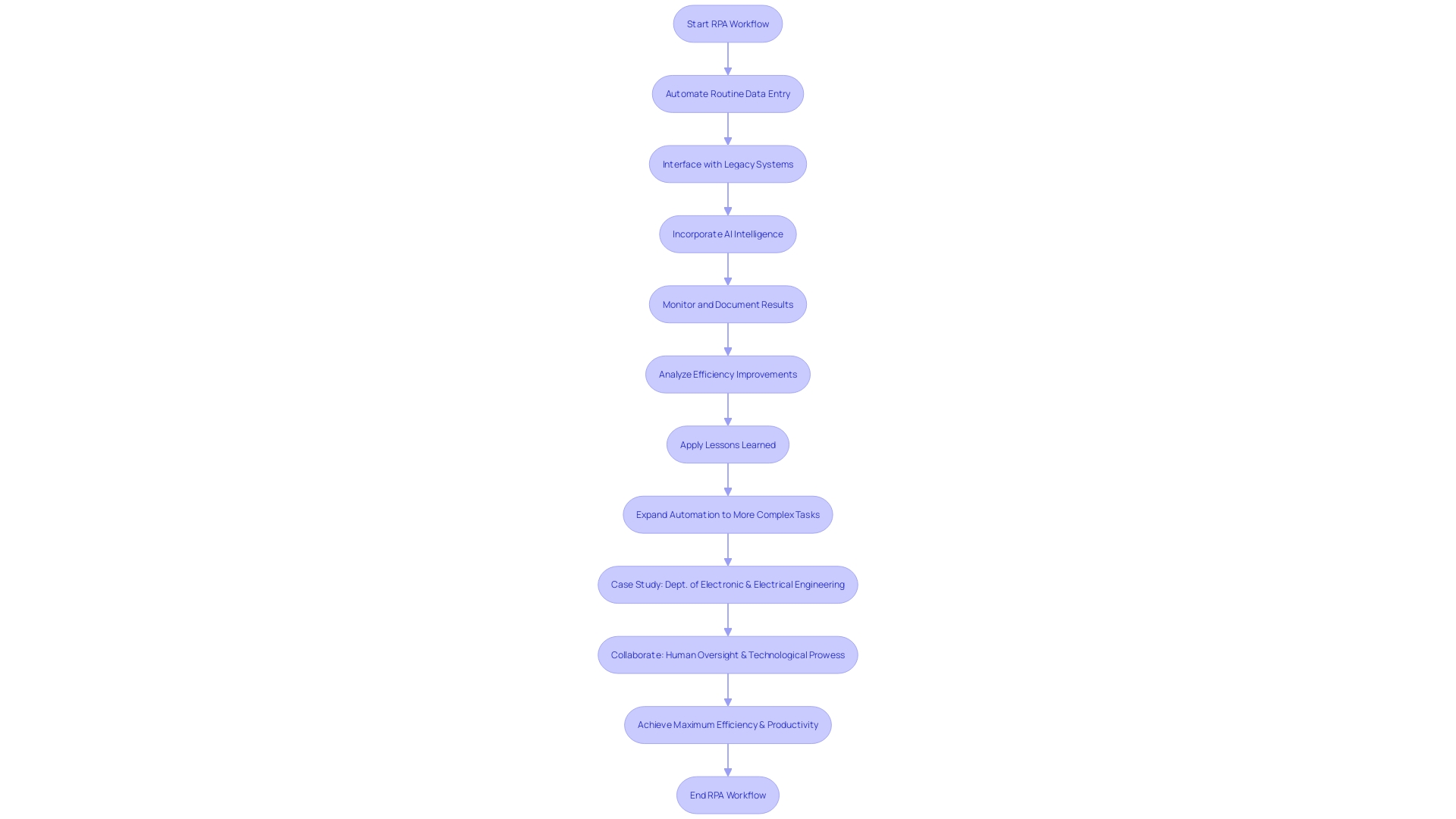
RPA Tools and Software
Robotic Process Automation (RPA) is changing how organizations manage repetitive work by deploying software robots that can emulate human actions across various systems. As RPA gains momentum, selecting the right tools becomes crucial for success. UiPath stands out as a leader in the RPA space, offering a robust platform that simplifies bot design, deployment, and management, complemented by a user-friendly interface and extensive integrations. Automation Anywhere provides an enterprise-level solution that supports both attended and unattended operations, enhancing task management with process mining and analytics of bots.
However, Blue Prism provides a secure RPA platform ideal for automating intricate procedures, showcasing a range of design and centralized bot administration tools. WorkFusion sets itself apart by integrating RPA with AI, allowing for the automation of cognitive tasks through advanced capabilities like data extraction and natural language processing.
To guarantee the efficiency of RPA implementation, organizations should adhere to a structured digital assurance procedure. This involves assessing whether the technology meets security, appropriateness, and compliance standards. For instance, a digital assurance process similar to the one used by the Digital Service Team in healthcare could be applied, where a request for new technology undergoes thorough evaluation to avoid redundancy and ensure alignment with organizational goals.
Recent advancements in checkout-free retail experiences, such as the Dublin Town To Go store, demonstrate the potential of technology to revolutionize industries. The store leverages a combination of cameras and sensor-equipped shelves to charge customers automatically, offering a glimpse into the future of automated commerce.
For businesses considering RPA, it’s essential to assess needs, identify error-prone tasks, and start with pilot projects to gauge impact. Continuous training and support from experts in automating can greatly improve the adoption journey. Recent discoveries from a UiPath study involving 1,639 professionals in the field of mechanization emphasize the increasing acceptance of AI in mechanization, underscoring the significance of community assistance and gatherings for knowledge exchange.
It’s crucial for organizations to not only embrace these technologies but to do so thoughtfully, as noted by industry experts who underscore the necessity of human oversight in ensuring the stability of automated systems. As we navigate the ever-evolving tech landscape, partnerships with innovative technology providers can be instrumental in leveraging RPA and AI to achieve greater efficiency and productivity.
Best Practices for RPA Implementation
To maximize the potential of Robotic Process Automation (RPA), a strategic and well-informed approach is essential. This includes a thorough evaluation, which acts as a basis for identifying the most suitable procedures for automation. Factors such as the impact on the organization and the feasibility of automating the task should guide the prioritization efforts. Engaging stakeholders is also a pivotal aspect of RPA implementation. Engaging owners, IT teams, and employees from the beginning encourages collaboration and facilitates the transition to new automated workflows.
Pilot testing plays a key role in the RPA journey, allowing organizations to conduct a smaller-scale trial that brings to light any unforeseen challenges and helps to fine-tune the approach for broader implementation. As automation reshapes the workplace, change management becomes indispensable. A strategy that tackles employee concerns, provides training, and enables a smooth adoption is vital for the successful integration of RPA.
The journey does not end with implementation; continuous improvement is crucial. Monitoring the performance of RPA bots and seeking ways to enhance procedures guarantees that the advantages of RPA keep expanding over time. While RPA is designed to operate with minimal intervention, it requires continuous human oversight to manage and upgrade systems, reflecting the timeless truth that even the most advanced technological assistance benefits from human partnership.
Taking lessons from established practices in various industries, such as the NHS’s ‘digital-assurance process’, can further enhance the implementation of RPA by ensuring new technology is secure, appropriate, and beneficial before widespread adoption. By adhering to these best practices, organizations position themselves to leverage RPA to its fullest, driving efficiency and innovation in their operations.

Future Trends in RPA
Robotic Process Automation (RPA) is revolutionizing the way organizations conduct business, with emerging trends that promise to enhance the complexity and scope of automated efforts. One trend is the integration of RPA with Artificial Intelligence (AI), incorporating machine learning and natural language processing to enhance the capabilities of bots. These AI-infused bots can now tackle more complex tasks, make informed decisions, and adapt through learning from outcomes.
Another important development is hyperautomation, which combines RPA with other technologies such as process mining, analytics, and chatbots, to enable full-scale automation of comprehensive business operations, including the management of both structured and unstructured data.
Cloud-based RPA solutions are also on the rise, favored for their scalability and cost-effectiveness. These platforms facilitate the deployment and management of RPA bots, leveraging cloud infrastructure to meet the dynamic needs of businesses.
Discovery tools are transforming how organizations identify and document procedures for mechanization. By utilizing AI and machine learning algorithms, these tools automatically identify and document procedures, simplifying the selection criteria for automation candidates.
Demonstrating the practical application of these trends, healthcare institutions have implemented digital assurance procedures to assess new digital technologies. This involves a rigorous assessment to ensure technology requests are secure, appropriate, and compliant, often uncovering existing solutions within the organization that were previously unknown. This approach mirrors the principles of RPA by automating the evaluation process and ensuring optimal resource utilization.
Upcoming events like the Intelligent Automation Conference 2024 shine a light on these trends, with industry experts sharing insights on how intelligent technology, including RPA, AI, and machine learning, can drive innovation within organizations. Reports from the field, such as the State of the Automation Professional, provide valuable data on job satisfaction and career intentions of automation professionals, further emphasizing the impact of these trends on the workforce.
In summary, the future of RPA lies in its increasing intelligence, integration, and scope, with these trends paving the way for even greater improvements in operational efficiency across various industries.
Conclusion
Robotic Process Automation (RPA) is revolutionizing business efficiency by utilizing software ‘bots’ to handle routine tasks traditionally performed by humans. RPA enhances accuracy, productivity, and allows for a reallocation of focus to more complex tasks. To successfully adopt RPA, it is crucial to identify processes ripe for automation and understand the specific inefficiencies that RPA can address.
The key components of RPA include the Control Center, Development Studio, and Orchestrator. Implementing RPA offers benefits like increased efficiency, cost savings, improved accuracy, scalability, and enhanced compliance. Suitable processes for RPA are rule-based, repetitive, high-volume, and follow standardized workflows.
RPA works by mapping processes, configuring bots, and orchestrating their activities. Thorough assessments are crucial for successful implementation, considering security, appropriateness, and compliance. Selecting the right RPA tools, such as UiPath, Automation Anywhere, Blue Prism, and WorkFusion, is essential.
Future trends in RPA include the integration with AI, hyperautomation, cloud-based solutions, and process discovery tools. These trends drive innovation and efficiency in various industries.
In conclusion, RPA is a transformative tool for operational excellence. By adopting RPA strategically and integrating it with AI, organizations can enhance efficiency, accuracy, and compliance, paving the way for a more efficient, accurate, and compliant future.
Introduction
Robotic Process Automation (RPA) is transforming the way businesses operate, revolutionizing routine tasks through the deployment of software bots. These bots, designed to replicate human actions, engage with digital environments and execute functions with unparalleled speed and precision. RPA goes beyond simple tasks, bridging the gap between systems and enabling seamless operations across platforms.
This article explores the capabilities of RPA, its key components, and the benefits it offers in terms of operational efficiency, cost savings, and compliance. By coupling RPA with AI, businesses can make data-driven decisions and gain a competitive edge in the digital landscape. The implementation of RPA requires careful planning and consideration of factors such as process automation, integration costs, and scaling strategies.
Through intelligent automation, RPA empowers businesses to enhance productivity, streamline processes, and foster growth, ultimately delivering improved customer satisfaction and loyalty.
What is Robotic Process Automation (RPA)?
Robotic Process Automation, commonly known as RPA, is revolutionizing the way businesses operate by deploying software robots to perform routine, monotonous tasks. These automated systems are created to imitate human actions, thereby enabling them to interact with digital environments and perform tasks such as data manipulation, report generation, and routine communications with unparalleled speed and accuracy.
These innovations are not limited to simple tasks. Progress in technology enables these bots to handle intricate workflows, connecting different systems and enabling smooth operations across platforms. The result is a significant reduction in the need for manual oversight, leading to fewer human errors and a marked increase in operational efficiency.
For instance, consider the transformative impact of RPA within the global hotel industry as illustrated by the partnership between Louvre Hotels Group and RobosizeME. The implementation of RobosizeME’s technology has transformed rate code maintenance, resulting in a significant decrease in man-hoursâsaving 188 hours monthly on rate code headers and 386 hours on rate code details.
Furthermore, the Korea Institute of Machinery and Materials (KIMM) has recently developed an AI technology that enhances robot functionality in manufacturing. This Large Language Model (LLM)-based technology allows robots to interpret user commands, creating a more intuitive and efficient manufacturing process.
As organizations ponder the integration of RPA, leaders must consider various factors to ensure successful implementation. Queries regarding which processes are ready for mechanization and the anticipated cost and time consequences of embracing RPA are crucial. Companies are advised to start small, automating less complex tasks before progressing to more intricate systems, and to maintain diligent monitoring and documentation to measure success and inform future initiatives.
The journey towards digital transformation through intelligent automation is marked by both challenges and opportunities. By coupling RPA with AI, businesses not only streamline processes but also gain the ability to make more data-driven decisions, ultimately leading to enhanced productivity and a competitive edge in an ever-evolving digital landscape.
How RPA Works
Robotic Process Automation (RPA) functions as an efficiency catalyst, harnessing software robots that interact with interfaces of current applications in a manner similar to human users. By following established rules and instructions, RPA robots can skillfully navigate data, fill out forms, extract information from documents, and perform a wide range of tasks. The versatility of RPA allows for the training and deployment of bots across diverse systems, promoting a fluid integration with the company’s existing technological framework.
These software robots boast the capability of operating on a schedule, activating upon specific event occurrences, or being manually initiated, providing flexibility in their use. Integral to RPA are its error management features, which encompass exception handling and audit trails, fortifying the accuracy and adherence to compliance within its operations.
From the perspective of leadership, the decision to implement RPA should be underpinned by a thorough understanding of the potential enhancements and the challenges that accompany technological modernization. Determining which manual processes are ready for mechanization, identifying the inefficiencies that RPA can address, and estimating the integration costs are crucial steps in the path towards automated operations.
Looking at case studies like NHS’s digital assurance process, one observes the methodical evaluation of technology requests ensuring security, appropriateness, and compliance. This reflects the critical nature of due diligence before adopting new digital technologies. For example, the NHS’s Digital Service Team conducts an initial assessment of technology requests to verify whether the technology aligns with existing solutions or introduces new, necessary functionalities.
In the broader market, events like the Consumer Electronics Show (CES) exhibit the remarkable speed of technological advancement, with companies like Boston Dynamics showcasing the latest in robotics, illustrating the potential of mechanization in diverse sectors. Furthermore, OODA’s team of experts highlights the need for advanced intelligence and strategy in managing digital transitions, underscoring the importance of strategic planning in the adoption of RPA.
The implementation of RPA has historical precedence; automation has long been the foundation of commercial progress, from the water wheel to AI. The evolution signifies not only an elevation in efficiency but also the necessity of human oversight to ensure the ongoing stability and refinement of these systems. As enterprises, especially small organizations, aim to expand their operations, RPA can offer substantial assistance by improving customer satisfaction through fast and dependable service, thereby strengthening customer loyalty.
While the allure of a sweeping technological overhaul can be tempting, evidence suggests that an incremental strategy of experimentation and scaling is more effective. This approach, backed by strong stakeholder support, sufficient investment, and adept change management, can result in significant gains. For instance, a semiconductor foundry’s targeted digitization efforts led to faster time-to-market, cost reductions, and improved quality by standardizing best practices and enhancing project management.
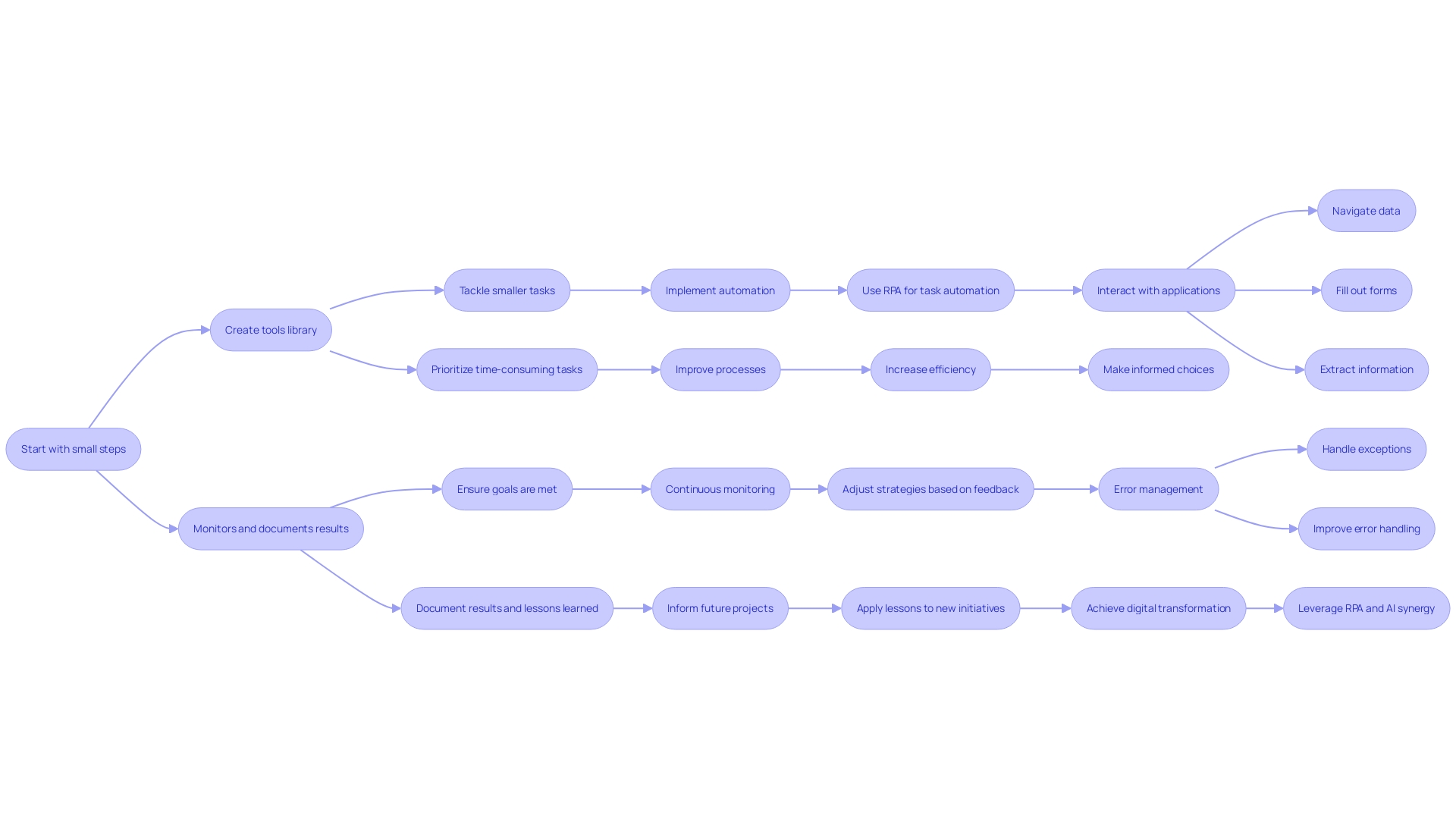
Key Components of RPA
Robotic Process Automation (RPA) stands at the forefront of business process innovation, offering a suite of components that work harmoniously to streamline operations. At the core of RPA lies the software platform, a robust foundation that facilitates the creation, management, and deployment of automation workflows, empowering bots—our digital workforce—to execute tasks with precision. These automated systems, similar to dedicated employees, can either work together with human users (attended) or carry out tasks autonomously (unattended), demonstrating their versatility in their application.
The coordination of these automated systems is carried out through the Control Room, a sophisticated command center that offers real-time insights into system performance, enabling precise management and optimization of workflows. In the Development Studio, the design of mechanization is crafted, offering a user-friendly interface for designing elaborate processes that define the operational logic of digital assistants.
The orchestrator component ensures that multiple bots work in concert, elegantly navigating complex tasks and maintaining system integrity when exceptions arise. This combination of elements not only improves operational effectiveness but also aligns with strategic objectives, as demonstrated by GrayMatter Robotics’ mission to enhance human productivity through AI-driven technology.
Incorporating RPA into an organization’s ecosystem is a strategic endeavor that necessitates thoughtful planning and preparation. Key considerations include identifying manual processes ripe for automation, analyzing inefficiencies to be addressed, and evaluating the integration costs. A thorough comprehension of RPA’s capabilities, as demonstrated by its influential role in data entry, transaction processing, and customer service, enables leaders to make informed decisions that drive innovation forward.
Recent advancements in AI, as seen in the UK’s public transport system and TSA’s facial recognition program, underline the transformative potential of technology in enhancing safety and operational efficiency while also raising important ethical considerations. Similarly, the use of robotics in conflict zones like Ukraine and Gaza signifies an evolution in military strategy and underscores the urgency for international dialogue on the subject.

Benefits of RPA
Robotic Process Automation (RPA) is revolutionizing the way businesses operate, providing a host of benefits that can dramatically enhance operational efficiency and productivity. RPA’s software automation works tirelessly, executing tasks with precision around the clock, which significantly speeds up processes that were once time-consuming when done manually. These automated systems meticulously adhere to established guidelines, virtually eliminating human error, thereby enhancing the accuracy and integrity of data.
Cost savings emerge as a direct result of RPA’s ability to automate routine tasks, reducing the need for additional personnel and allowing companies to reallocate resources towards more strategic, value-adding activities. With the scalable nature of RPA, organizations can adjust the number of bots in use to meet fluctuating demands, ensuring a responsive and agile operational model.
Furthermore, RPA aids in maintaining stringent compliance standards. It generates comprehensive logs of every task executed, guaranteeing that processes adhere to regulatory necessities and aiding enterprises in evading expensive penalties.
The practical application of RPA in healthcare, for instance, showcases its transformative potential. When clinicians request new digital technologies, a rigorous assessment is conducted to ensure security, appropriateness, and compliance. This process often reveals that the requested technology is already in use, highlighting the importance of thorough system reviews to avoid unnecessary duplication and optimize existing RPA solutions.
In the field of smart mechanization, RPA is no longer restricted to basic tasks. The integration of AI and generative AI has expanded its capabilities, allowing it to process unstructured data and complete more complex workflows. This collaboration between RPA and AI is propelling the digital transformation of organizations, resulting in well-informed decision-making and enhanced efficiency.
Successful implementation of RPA requires a strategic approach. Beginning with small tasks enables companies to slowly adjust to mechanization, while ongoing supervision and record-keeping of outcomes guarantee the accomplishment of goals. By creating a library of tools to support intelligent automation and focusing on customer satisfaction, businesses can leverage RPA to foster growth and maintain strong customer relationships, as evidenced by the significant revenue increases reported by companies that have embraced this technology.
Conclusion
Robotic Process Automation (RPA) is revolutionizing businesses by deploying software bots that replicate human actions, improving operational efficiency and streamlining processes. Coupling RPA with AI enables data-driven decision-making and a competitive edge in the digital landscape. Implementing RPA requires careful planning, considering factors like process automation, integration costs, and scaling strategies.
RPA functions as an efficiency catalyst, using software robots to interact with applications and execute tasks with precision. Versatile and adaptable, RPA integrates seamlessly with existing technological frameworks, ensuring accuracy and compliance through error management features.
The key components of RPA include the software platform, control room, development studio, and orchestrator. These components harmoniously streamline operations and empower bots to execute tasks accurately.
RPA offers numerous benefits, including increased operational efficiency, cost savings, and stringent compliance standards. By automating routine tasks and reallocating resources, businesses can achieve cost reductions and focus on strategic activities. RPA’s integration with AI expands its capabilities, enabling the processing of unstructured data and complex workflows.
Successful implementation of RPA involves starting with minor tasks and continuously monitoring and documenting results. By leveraging RPA, businesses can foster growth, maintain strong customer relationships, and drive digital transformation.
In conclusion, RPA is transforming businesses by revolutionizing routine tasks through software bots. Coupling RPA with AI empowers data-driven decision-making and a competitive edge. Implementing RPA requires careful planning and consideration of various factors.
RPA enhances operational efficiency, saves costs, and ensures compliance. By leveraging RPA, businesses can drive growth, maintain customer relationships, and achieve significant gains.
Take your business to the next level with RPA and drive digital transformation today!
Introduction
Robotic Process Automation (RPA) is revolutionizing the business world by automating mundane tasks and streamlining processes for enhanced efficiency and accuracy. From healthcare to retail, RPA is making a significant impact across industries. However, successful RPA implementation requires careful planning and ongoing monitoring to ensure stability and maximize the benefits of improved productivity.
Recent studies highlight the tangible advantages of intelligent automation, with companies investing in RPA seeing significant revenue growth. By leveraging RPA’s capabilities, organizations can save time and resources while setting the stage for continued innovation and competitive advantage. In this article, we will explore the role of RPA in modern businesses, the benefits it offers, common applications, tools and technologies for implementation, and best practices to ensure successful integration.
We will also delve into advanced techniques, cognitive automation, and the future trends and predictions for RPA. Join us on this journey to discover how RPA can transform your organization’s operations and drive success.
The Role of RPA in Modern Businesses
Robotic Process Automation (RPA) is reshaping the landscape of business operations by automating mundane and repetitive tasks. From data handling to generating reports, RPA bots can transform a multitude of procedures, streamlining them to enhance efficiency and accuracy. The key to successful RPA implementation lies in thoughtful planningâidentifying the appropriate manual processes for robotization and discerning the inefficiencies that RPA can rectify.
Case studies from the healthcare sector illustrate the significant impact of RPA. For instance, Epic and Cerner, leaders in electronic health record management, rely heavily on RPA. Epic serves over 250 million patients and is trusted by more than 250,000 healthcare professionals, reporting impressive annual revenues. Cerner’s reach extends to 27,000 healthcare facilities globally, indicating the vast potential of RPA in scaling operations and managing complex data across borders.
However, the shift to mechanization is not a set-and-forget affair. According to the CTO and Co-Founder of Reveille Software, continuous monitoring, management, and upgrades are necessary for the implementation of AI and other technological advancements. This human partnership ensures stability and maximizes the benefits of improved efficiency and productivity. Intelligent synergy, a combination of RPA and AI, propels companies toward digital transformation, as it allows for the enhancement of processes and more informed decision-making.
Recent studies highlight the concrete benefits of intelligent technology. A Forrester Research study revealed that companies that put resources into smart mechanization observed a 73% expansion in income of overall net present value (NPV) advantage and a compound annual growth rate (CAGR) of 5.4% over three years. This data highlights the critical role of RPA and AI in driving economic growth.
In conclusion, RPA is not simply a tool for automating tasks but a strategic asset for modernizing business operations. By leveraging RPA’s capabilities, companies can not only save time and resources but also set the stage for continued innovation and competitive advantage.

Benefits of RPA
Robotic Process Automation (RPA) has become a transformative force for businesses worldwide, offering a multitude of benefits that extend far beyond simple cost savings. By integrating RPA, organizations in various industries, such as healthcare, have reported significant enhancements in productivity. For instance, with the adoption of RPA, healthcare professionals can shift their focus from managing electronic health records to providing better patient care, as evidenced by the widespread use of Epic and Cerner systems which collectively manage a substantial portion of health records globally.
Additionally, RPA is not only focused on automating tasks; it’s also aimed at enhancing business procedures. Before putting it into action, it is essential to carefully assess which manual operations are ready for automation and to identify inefficiencies that RPA can tackle. This ensures a strategic approach that maximizes time and cost efficiency when integrating RPA software.
The precision and uniformity delivered by RPA are unmatched, with the tool reducing the chance of human mistake, resulting in more dependable outcomes in operations. This has been a game-changer, particularly in document management, where technologies like OCR have been complemented with AI to extract data more effectively, thereby streamlining processes regardless of whether they are executed by robots or humans.
The future of business lies in the symbiosis between digital and human workforces, creating a collaborative ecosystem that leverages the strengths of both. While mechanization enhances efficiency and productivity, it is the human touch that ensures stability, creativity, and emotional intelligence. Small businesses, in particular, can leverage RPA to maintain strong customer relationships by expediting responses and delivering accurate information, thereby fostering customer satisfaction and loyalty.
Statistics reveal that companies embracing intelligent automation experience considerable revenue growth and a compound annual growth rate (CAGR), underscoring the tangible value that RPA can contribute to an organization’s bottom line. However, achieving these results requires a nuanced approach, avoiding common pitfalls such as overhauling tools without clear objectives or poor stakeholder engagement. Instead, a successful RPA implementation involves setting achievable goals, choosing the right tools, and managing change effectively. By doing so, businesses can unlock the full potential of digitization, as demonstrated by a semiconductor foundry that standardized its best practices to accelerate market readiness, reduce costs, and improve project management and technology.
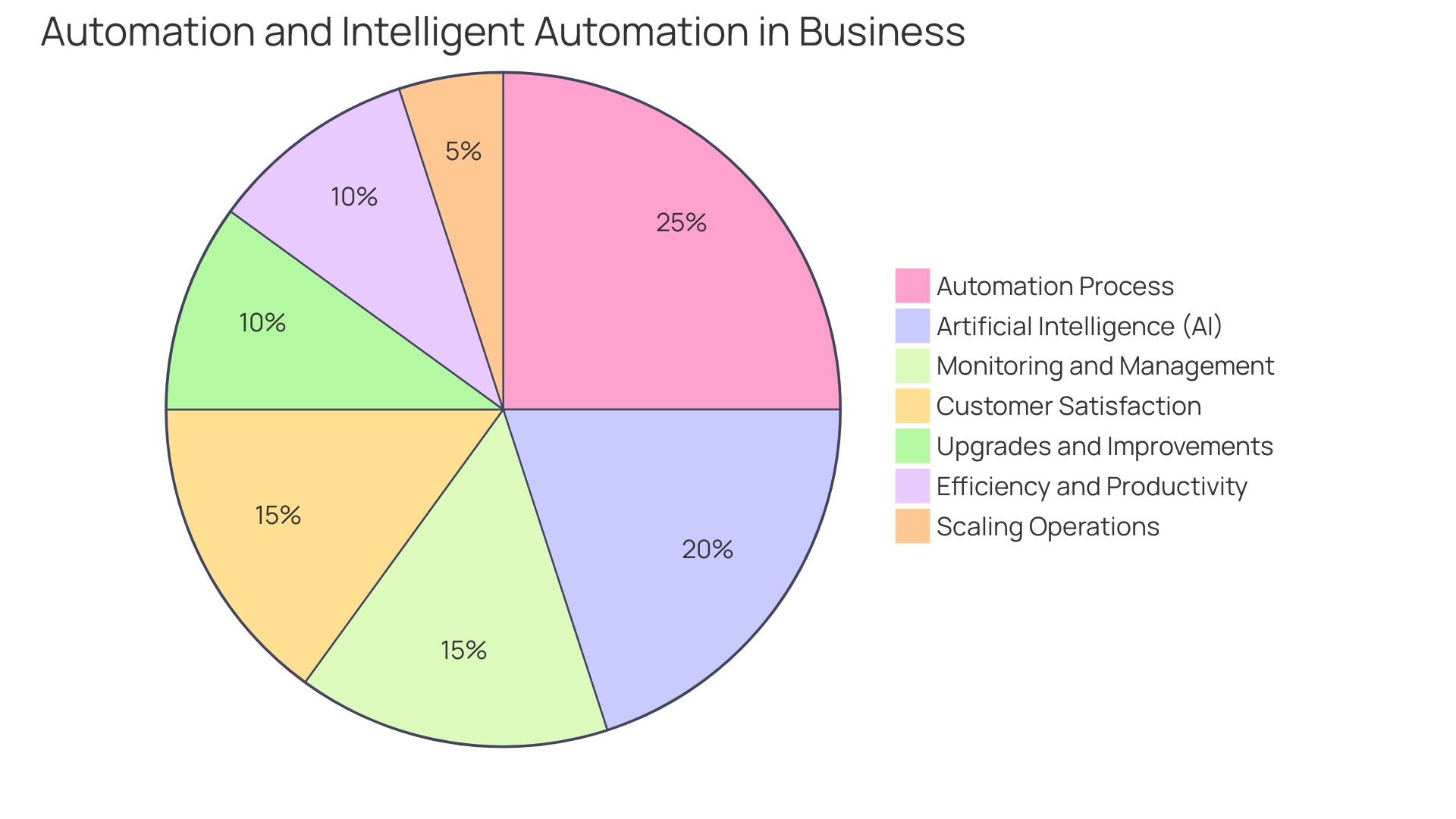
Common Applications of RPA
Robotic Process Automation (RPA) is revolutionizing the way businesses handle routine tasks across various sectors. A prime example is data migration, a task that can be cumbersome and error-prone when done manually. RPA provides a smooth substitute, as shown by Check Technologies, which utilizes the Check Data Platform to conduct intricate data analysis, improving their decision-making with tools like Airflow.
In customer service, RPA is instrumental in handling repetitive inquiries, allowing staff to focus on more complex issues. Delivery Hero, a global delivery platform, utilized RPA to address the challenge of account lockouts among its vast employee base. By automating the identity verification and account recovery process, the company significantly reduced the downtime experienced by employees, enhancing overall productivity.
The retail sector is also benefiting from RPA, with innovations such as the checkout-free store in Dublin Airport, which uses a blend of cameras and weight-sensored shelving to detect purchases for a frictionless shopping experience. This application of RPA not only improves customer satisfaction but also streamlines inventory management.
RPA’s impact on the HR domain is equally transformative, particularly in onboarding new hires. It streamlines administrative tasks, allowing HR professionals to engage more meaningfully with employees. The integration of RPA in supply chain management is another testament to its versatility, where it optimizes inventory levels and facilitates timely delivery of goods.
Statistics from a global survey of 1,639 automation professionals highlight the growing acceptance and integration of AI with RPA, indicating a shift towards more intelligent automation. The survey, conducted by UiPath, emphasizes the importance of RPA in the current business landscape and its potential to enhance operational efficiency.
Automation is not just about embracing innovative approaches; it’s about making strategic choices that yield high returns on investment. While undertaking the path of digital transformation, leaders should thoroughly evaluate which procedures to automate and the possible advantages, guaranteeing that RPA aligns with their overall objectives for efficiency and productivity.
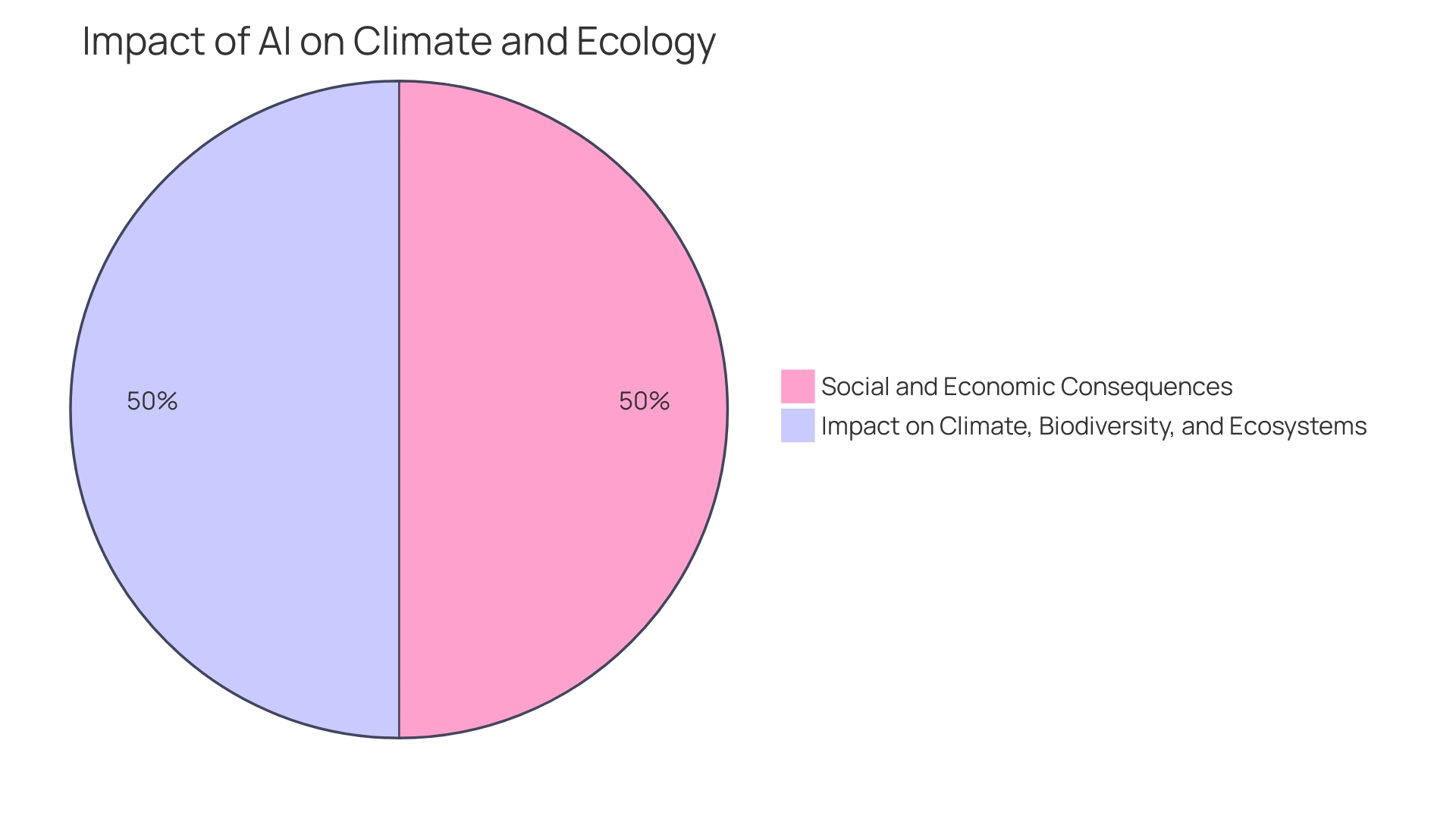
Tools and Technologies for RPA
Selecting the optimal tools for Robotic Process Automation (RPA) is a critical step towards modernizing operations and enhancing productivity. With a plethora of software platforms available, it’s essential to choose ones that not only facilitate the creation and management of bots but also integrate advanced AI technologies to amplify RPA capabilities. Considering the current business landscape, where 70-80% of companies still rely on spreadsheets for a variety of tasks, the transition to more sophisticated tools can be both an upgrade and a challenge.
To successfully navigate this journey, organizations must conduct a comprehensive evaluation of their manual procedures to determine which are ready for automation. This assessment should identify inefficiencies that RPA can target, and consider the integration time and costs for each procedure. For example, within the NHS, a digital-assurance procedure ensures that new technologies meet stringent standards before adoption, including verification that the proposed solutions are secure, appropriate, and compliant.
As the cooperation between human and digital workforces becomes more crucial, it’s essential to strike a balance between mechanization and human involvement. This balance is key to leveraging the full potential of a combined workforce, where creativity and emotional intelligence complement the precision of digital tools.
In the realm of development, AI tools are revolutionizing the way code is crafted, offering virtual assistance that can detect errors early and even generate code. This change in perspective is backed by a worldwide study of 1,639 professionals in the field of automated technology, which emphasizes an increasing willingness to incorporate AI into work procedures.
In conclusion, the journey to effective RPA implementation is paved with strategic decisions, from selecting the right tools to ensuring they fit into a well-balanced human-digital collaboration. Organizations are encouraged to delve into comprehensive assessments, embrace the evolving role of AI, and adopt a mindset of continual adaptation to stay at the forefront of operational efficiency.
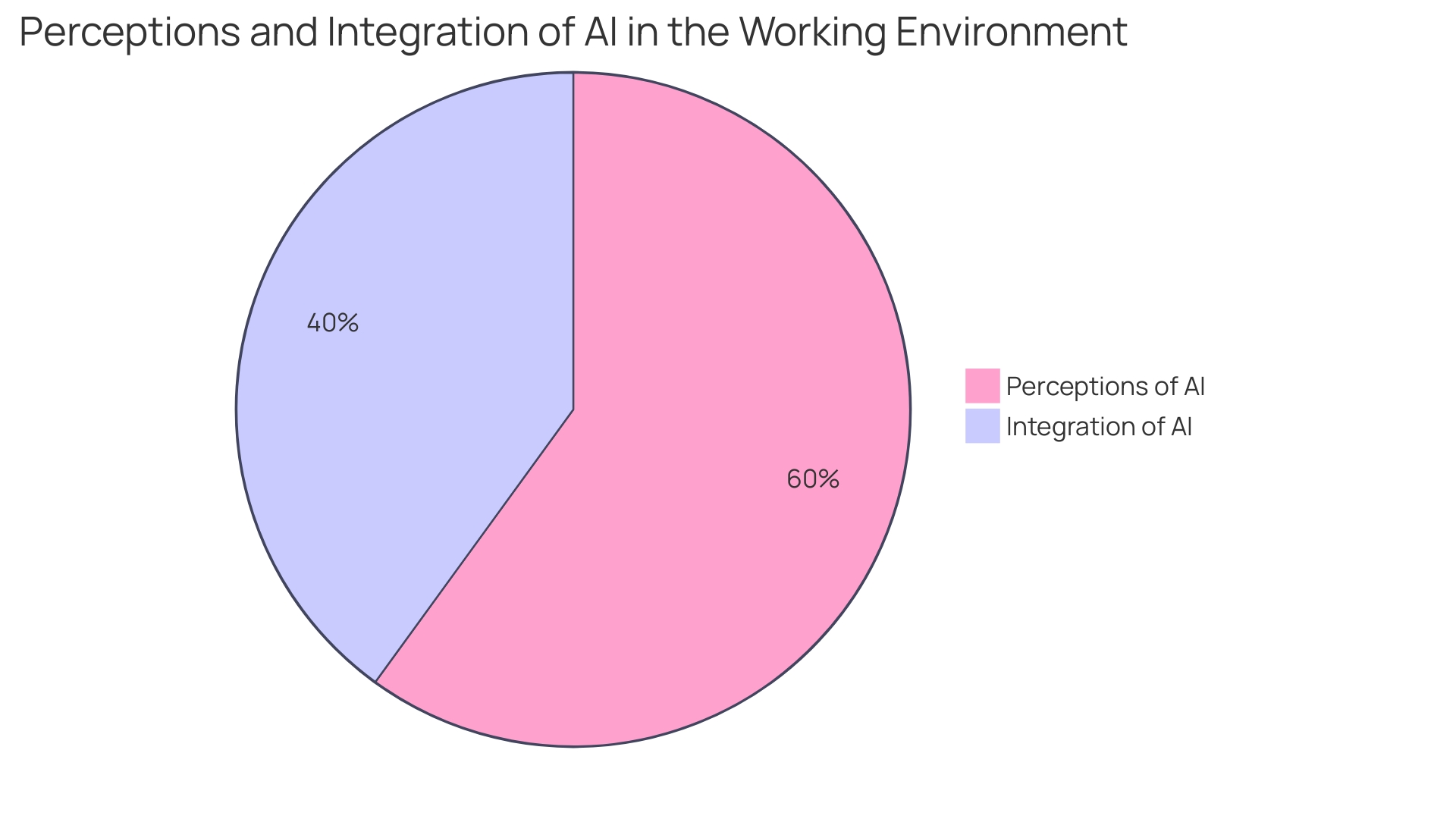
Getting Started with RPA: Basic Steps
Embarking on Robotic Process Automation (RPA) necessitates a strategic methodology, commencing with an in-depth exploration of the procedures you intend to automate. It’s crucial to identify which manual tasks are ready for mechanization and to identify the inefficiencies they hold. The act of discernment is not just a simple checklist; it requires a thorough analysis of time and financial investment to effectively integrate RPA software.
After identifying the tasks that need to be automated, the subsequent stage involves creating the bots that will execute the tasks. But it doesn’t stop there. As the CTO and Co-Founder of Reveille Software puts it, the process of automating tasks is not a ‘set it and forget it’ system; it requires continuous monitoring, management, and updates—a true partnership between humans and advanced systems to ensure ongoing stability and efficiency.
In the healthcare sector, for example, the introduction of digital technologies follows a stringent ‘digital-assurance process’ to ensure new tech meets high security and compliance standards. This meticulous approach is a fine exemplar for any RPA implementation, reinforcing the necessity of thorough assessment before deployment.
The integration of AI in public services, such as UK’s transportation systems, has shown the potential of using AI to enhance safety and operational efficiency. However, it has also highlighted the importance of addressing ethical considerations and upholding privacy standards.
Data from a worldwide survey of 1,639 professionals in the field of automated processes, conducted by UiPath, disclose the community’s perspectives, emphasizing the significance of support initiatives and gatherings to nurture development in the field. For leaders in operations, these insights are invaluable for understanding workforce dynamics and integrating AI into work activities.
In brief, establishing the foundation for RPA entails recognizing suitable procedures, assessing inefficiencies, creating bots, and a dedication to continuous supervision. With a strategic vision and alignment on expectations and timelines, your organization can embark on a journey towards becoming an AI-enabled enterprise, ready to reap the benefits of advanced technology while navigating its complexities.
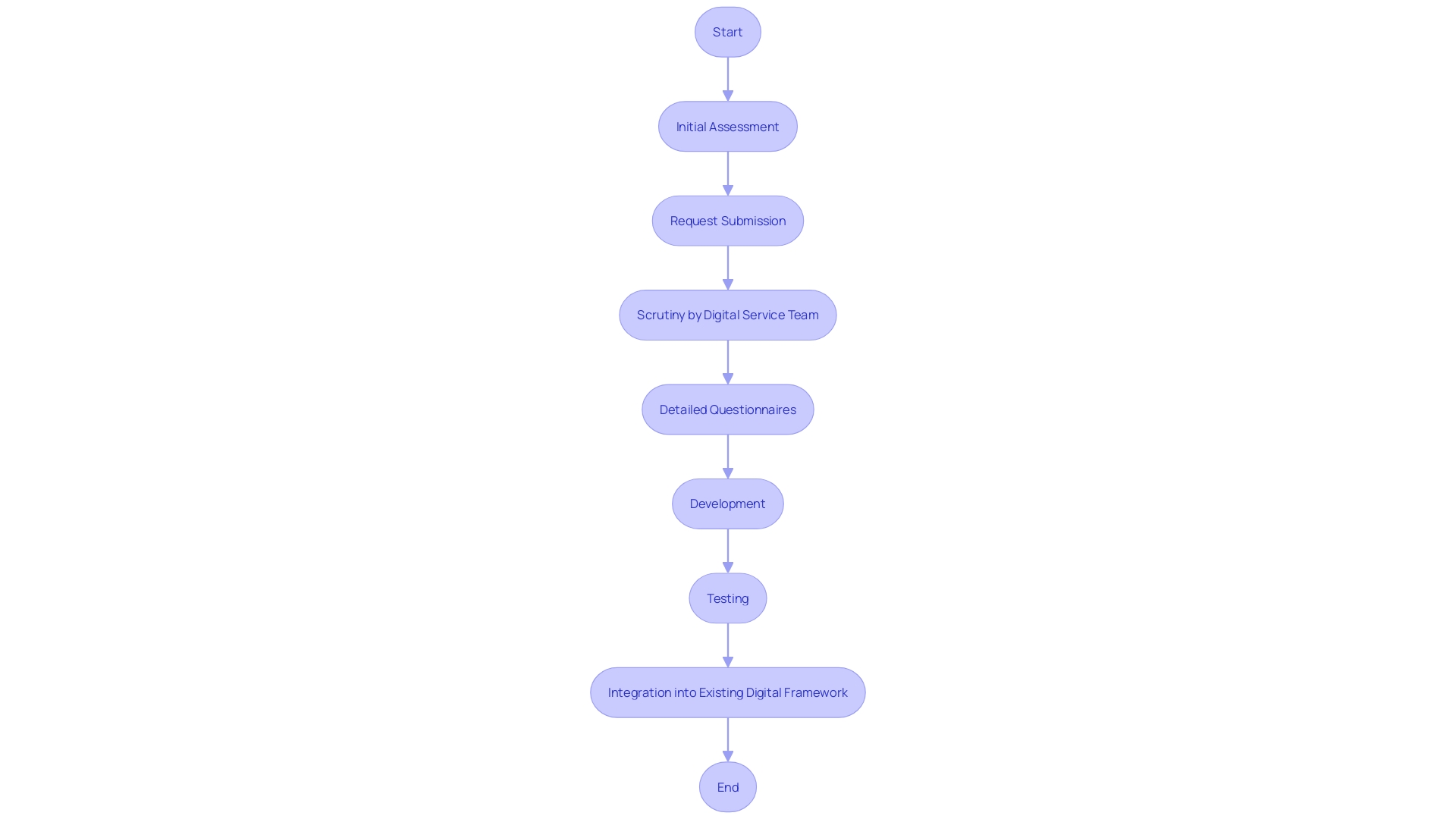
Automating Desktop Applications
Harnessing the transformative power of Robotic Process Automation (RPA), businesses can elevate their desktop applications to new heights of efficiency and accuracy. Imagine the leap in productivity by automating routine data entry in Excel or seamlessly interfacing with legacy systems—this is no longer the realm of imagination but a tangible reality with RPA.
Leveraging tools like .NET and Selenium, developers can craft robust applications that not only automate tasks but also incorporate the cutting-edge intelligence of AI, such as ChatGPT, to summarize content or facilitate interactions. For instance, establishing a project in. NET sets the foundation for a system that can automate and streamline intricate procedures, from initiating customer dialogues to capturing detailed invoice data.
A case study from the Department of Electronic & Electrical Engineering showcases a transformative approach to managing personal tutorials. By automating attendance recording and feedback collection, the department significantly enhanced its operational efficiency. Likewise, professionals in the field of automated systems, as emphasized in recent studies, experience great fulfillment in their professions, indicating the beneficial influence of RPA on the labor force.
Forward-thinking companies like Tungsten Automation offer a sneak peek into the future of operational procedures. By adopting their solutions, businesses can offer enhanced customer experiences and access services anytime, anywhere, fostering customer satisfaction and loyalty. As mechanization continues to evolve, it remains a collaboration between human oversight and technological prowess, ensuring that efficiency and productivity reach their maximum potential.

Integrating with Web Applications
Harnessing the synergy of Robotic Process Automation (RPA) with web applications heralds a new era of efficiency for businesses. Integrating RPA into web applications encompasses a range of methodologies, from traditional screen scraping to contemporary API-based integration. Each approach carries its unique advantages, with screen scraping offering a quick and easy solution to automate interactions with the user interface, while APIs enable a more stable and direct communication channel with the application’s backend, fostering seamless data exchange and automation.
An example of this is the innovative approach adopted by Delivery Hero, a worldwide delivery platform, which automated the account recovery procedure for their extensive workforce. By integrating RPA into their IT systems, they significantly reduced the time employees spent locked out of their accounts, turning a 35-minute process into a swift, automated one. This not only improved their operational efficiency but also enhanced employee productivity.
Similarly, the .NET framework, complemented by tools like Selenium and the intelligent capabilities of ChatGPT, creates a robust environment for developing and deploying systems. These systems are designed to perform tasks such as summarizing email content automatically, demonstrating the transformative potential of combining RPA with web applications.
Moreover, the importance of creating an effective library of tools is echoed by industry thought leaders. As the technology landscape evolves, the implementation of intelligent mechanization becomes a critical factor for companies seeking digital transformation. Using RPA and AI, businesses can enhance procedures and make well-informed choices. It’s important to start small, automating less complex tasks, and then scale up, continuously monitoring and documenting results to ensure goals are met.
To navigate the complexities of integration, it’s essential to stay abreast of the latest trends and best practices in the field. As RPA and AI continue to revolutionize the way we work, the shift from searching for solutions to directly querying AI systems has become a significant time saver for developers. This allows for a more focused approach to implementing solutions that drive business forward.
In conclusion, the integration of RPA with web applications is not just about automating tasks; it’s about reimagining business workflows to unlock unprecedented levels of productivity and innovation. By following the examples set by leading organizations and leveraging the right tools and strategies, businesses can achieve a competitive edge in today’s digital landscape.
Advanced RPA Techniques
Expanding your RPA toolkit to include advanced techniques can significantly enhance your automation capabilities. By incorporating exception handling, your bots can intelligently manage unexpected events during execution, ensuring smoother operations. Conditional logic enables bots to make real-time decisions based on predefined criteria, thereby handling varying scenarios with ease.
Error recovery mechanisms are crucial for maintaining process continuity. They allow bots to recognize when something goes wrong and to take corrective action without human intervention. These advanced techniques are especially beneficial when dealing with unstructured data, which lacks a predefined format, making it more challenging to automate. Advanced RPA can identify patterns and extract relevant information from such datasets.
Moreover, dynamic web pages, which present content that changes based on user interaction, can be navigated efficiently with RPA tools that adapt to these changes. By utilizing frameworks like. NET in conjunction with libraries such as Selenium WebDriver and AI technologies like OpenAI, you can create robust systems capable of complex tasks like summarizing email content automatically.
A real-world example comes from a food and beverage company using UiPath, which utilized an AI-powered tool to inspect product labels for accuracy, saving time and reducing errors. This reflects the transformative power of integrating AI with RPA, commonly referred to as hyperautomation. It’s about elevating the traditional RPA by adding layers of AI, making it possible to automate more complex activities.
As demonstrated by a UiPath survey carried out from March to May 2023, with 1,639 professionals and students in the field of automated processes participating, there is an increasing tendency in organizations embracing AI to improve their strategies for automating processes. The ongoing enhancement and integration of advanced RPA capabilities are essential for success in the future of work, and remaining competitive requires embracing these evolving tools.
Cognitive Automation and AI Integration
Combining RPA with AI, particularly through technologies such as natural language processing and machine learning, leads to cognitive integration. This powerful combination enables the handling of complex tasks that require intelligent decision-making, transcending RPA’s traditional rule-based capabilities. Cognitive systems are part of the range of intelligent systems, which are broadly classified into AI-augmented, autonomous, autonomic, and cognitive systems. These classifications signify the varying complexities of how AI systems interact with human actions and their environments.
For example, AI-augmented systems may under certain conditions demonstrate autonomous behavior, but cognitive technology is particularly notable for its advanced capabilities. It takes cues from its environment and learns as it operates, making it an invaluable asset in the realm of intelligent operations. As an example, Lindy, an AI assistant, has been developed to automate diverse tasks across different applications seamlessly. Accomplishing this necessitated complex integrations with multiple apps and services, underscoring the advanced nature of cognitive solutions.
Moreover, the strategic implementation of cognitive technology involves establishing distinct timelines and success criteria. A well-articulated vision, such as becoming an AI-enabled enterprise and applying AI agents to core business activities, is essential. This strategic approach, coupled with the continuous improvement philosophy of hyperautomation, positions organizations to fully harness the potential of AI and prepare for the future of work. As smart mechanization systems keep progressing, they will progressively become a strategic necessity for businesses aiming to enhance procedures and enable their workforce.
Process Discovery and Optimization
The start of RPA in an organization starts with a thorough examination of existing procedures to discover improvement possibilities. During this stage, referred to as discovery of the procedure, it examines the complexities of existing workflows and establishes the foundation for the effective incorporation of technological advancements. It’s a pivotal step akin to the meticulous preparations Azure undertakes to ensure its platform thrives across diverse hardware and software environments, as highlighted by Mark Russinovich, CTO of Azure, in discussing optimization challenges.
To completely grasp the potential of RPA, it’s essential to optimize procedures by removing inefficiencies, such as bottlenecks, and reimagining workflows. This approach mirrors the optimization algorithms employed in complex cloud computing environments, where seeking near-optimal solutions within reasonable timeframes and resource constraints is standard practice.
Indeed, the transformative impact of RPA is not limited to simple task mechanization; it extends to fostering a more robust, agile, and cost-effective operational framework. As Coding Crafts, a leading software development company, emphasizes, the breadth of services including Blockchain, reflects the commitment to cutting-edge, secure, and transparent solutions. These advancements in technology and methodology underscore the importance of process optimization as the bedrock upon which the success of RPA initiatives is built.
Bot Orchestration and Workflow Management
As organizations expand their use of Robotic Process Automation (RPA), the orchestration of multiple bots and management of their workflows become pivotal to success. Bot orchestration is the art of coordinating various automated tasks to work in harmony, ensuring that each bot’s activity is synchronized with others to achieve optimal performance and efficiency. By utilizing sophisticated tools and techniques, companies can schedule bot activities, track their effectiveness, and swiftly address any issues that arise.
For example, Delivery Hero, a leading global delivery platform, faced a challenge with frequent employee lockouts, requiring substantial IT intervention that resulted in significant downtime. By implementing an intelligent system, they reduced the average recovery time dramatically, from 35 minutes to mere minutes, saving around 200 hours per month and enhancing overall productivity.
In the realm of social media, tech giant Snap, known for its popular app Snapchat, has leveraged Airflow to manage complex workflows associated with augmented reality features and its AI-powered chatbot, MyAI, which serves 150 million users. Snap’s journey from an initial idea to a consistently working prototype exemplifies the critical role of orchestration in delivering AI applications efficiently.
The strategic implementation of intelligent technology involves setting clear goals, creating a robust library of tools, and starting with smaller tasks to build up to more complex workflows. Consistent monitoring and documentation of results are essential to this procedure, providing valuable insights and learnings for future projects.
Moreover, the collaboration between human expertise and digital efficiency is essential for stability and growth. As highlighted by the CTO and Co-Founder of Reveille Software, the human collaboration is crucial to leverage the complete capability of advanced technologies like AI, guaranteeing they operate smoothly to improve efficiency and convenience.
In summary, the successful management of RPA initiatives requires a keen understanding of bot orchestration and workflow management. By drawing lessons from real-world applications and maintaining a balance between human oversight and automated efficiency, organizations can scale their RPA efforts and reap the benefits of enhanced operational productivity.
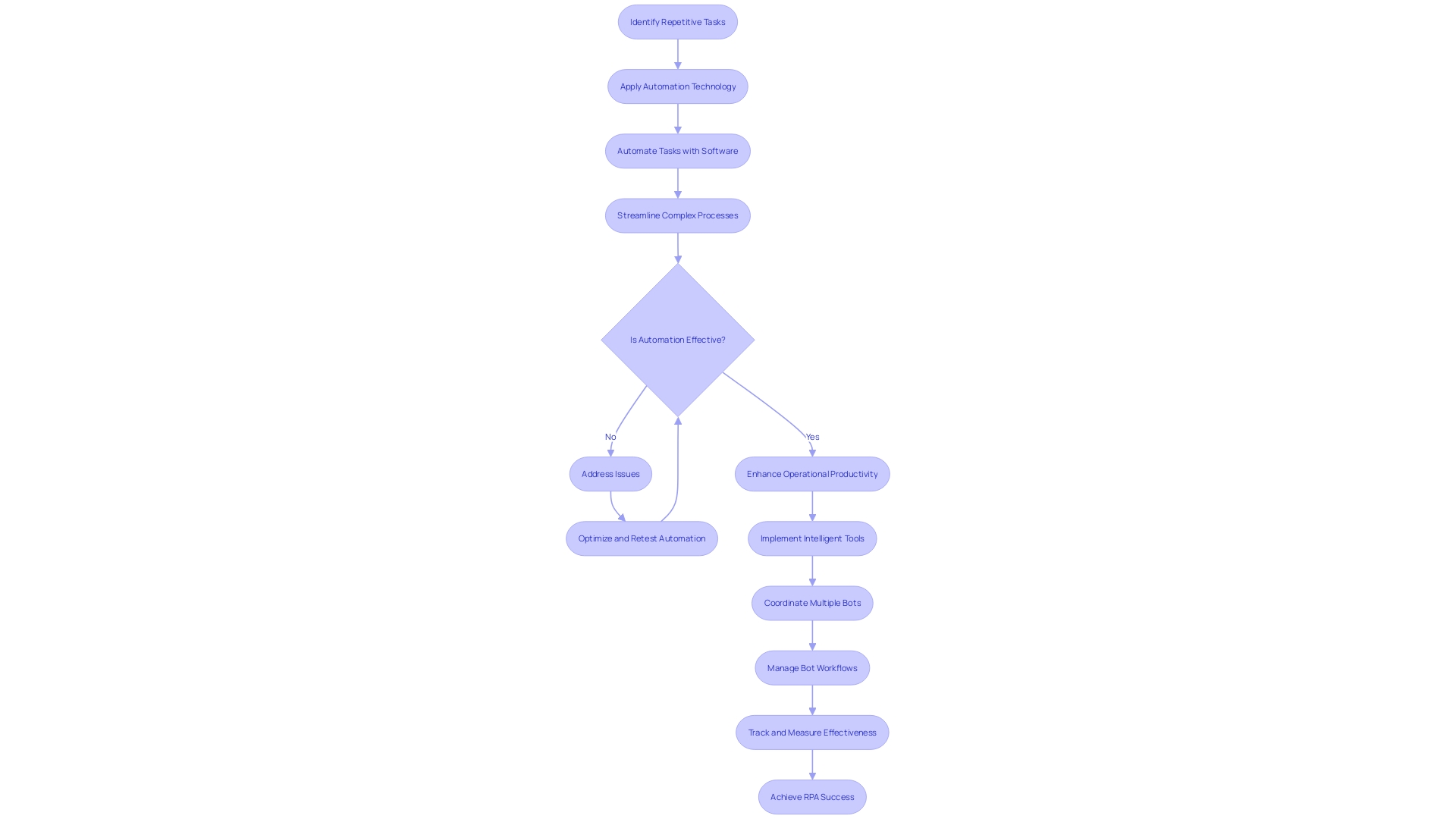
Debugging and Error Handling in RPA
Despite meticulous planning, Robotic Process Automation (RPA) implementation is not immune to challenges. Encountering errors in bot logic or system failures is common. However, the key to successful RPA lies in effective debugging and exception handling.
When a bot encounters an error, it’s essential to have a fail-safe mechanism in place. This might involve setting up actions that only execute upon failure, ensuring the process continues smoothly. An example from the Aspire framework illustrates this approach, where resources are orchestrated to manage failure points proactively.
Moreover, understanding the fundamental principles of debugging is crucial for resolving errors. Issues could range from logic errors to unexpected behaviors, and a systematic approach is necessary to tackle these head-on. Utilizing breakpoints for pausing code execution allows for thorough inspection and problem-solving.
It is also crucial to acknowledge that mechanization, including the use of AI, is not a ‘set and forget’ answer. Continuous monitoring, management, and upgrades are required to maintain stability and efficiency, as emphasized by experts in the field. This human collaboration with tools is critical in ensuring that RPA tools are not only efficient but also resilient.
In the modern business environment, it is crucial to identify manual tasks that can be automated and comprehend their inefficiencies before integration. It’s a strategic decision that involves considering the time and cost implications of deploying RPA solutions.
By incorporating these insights, one can navigate through the complexities of RPA implementation, turning potential stumbling blocks into stepping stones for operational success. The aim is not just to automate for the sake of it but to enhance accuracy and productivity by leveraging the synergy between human oversight and robotic precision.
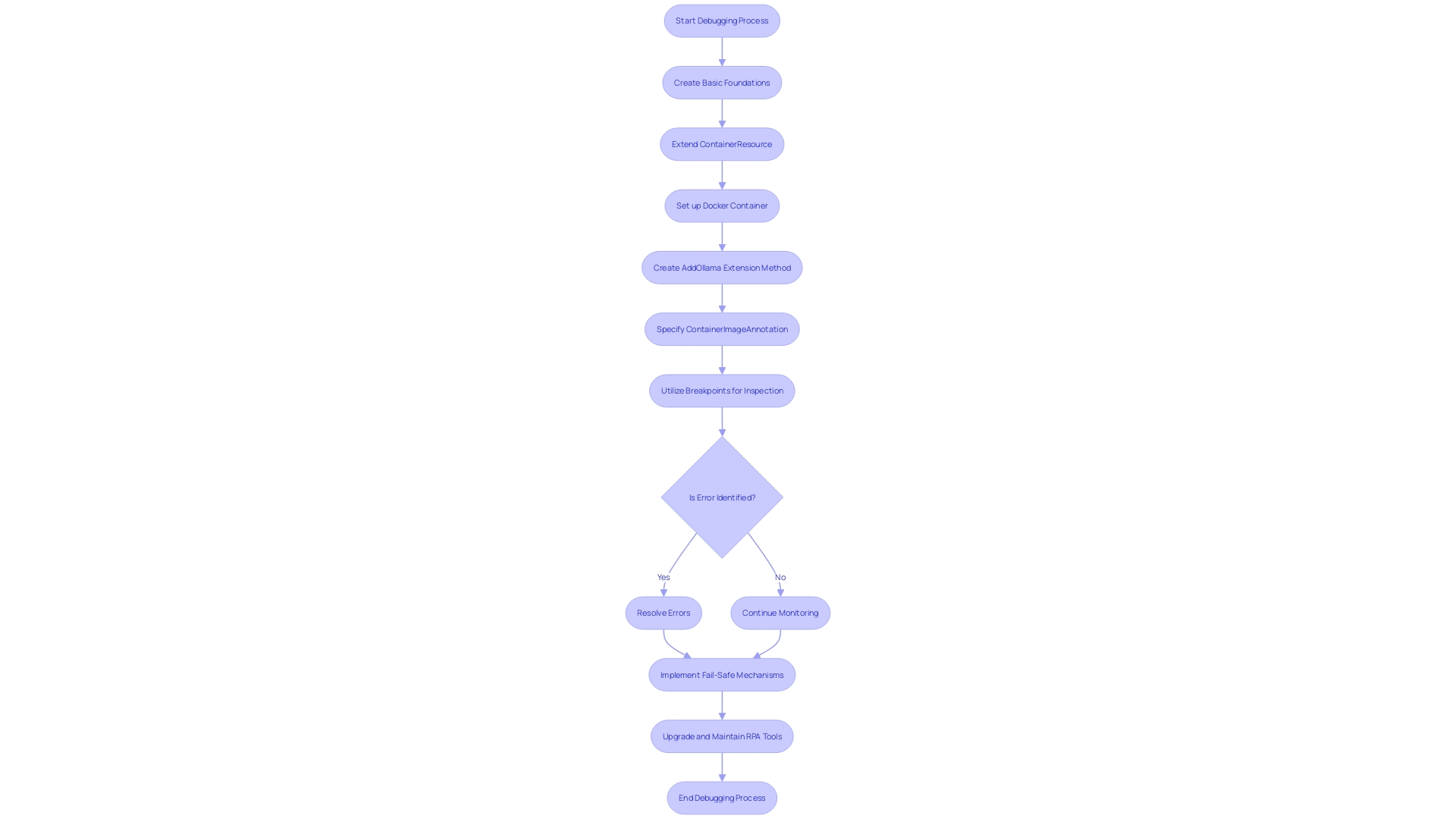
Best Practices for RPA Implementation
Best practices for Robotic Process Automation (RPA) implementation are fundamental to reap the full benefits of this technology. A strategic approach that starts with a thorough comprehension of the particular manual procedures appropriate for automation can lay the groundwork for success. By identifying inefficiencies in current processes, organizations can target their RPA efforts more effectively, ensuring that time and resources are invested wisely. Engaging stakeholders is critical, as their input can reveal existing solutions that may have been overlooked, akin to the NHS’s finding of pre-existing technologies within their trust.
Moreover, change management is pivotal in RPA adoption. As noted by the CTO and Co-Founder of Reveille Software, although automation aims to enhance efficiency and productivity, it is not a ‘set it and forget it’ solution. Continuous monitoring, management, and upgrades are necessary to maintain stability and performance. Governance is crucial in ensuring that RPA solutions adhere to high security and compliance standards, similar to the digital assurance employed by the NHS trust.
Lastly, the path to continuous improvement in RPA is akin to the ‘evaluation loop’ used in prompt engineering. This iterative approach of refining based on measurable success criteria ensures that RPA implementations evolve and improve over time, keeping pace with business needs and technological advancements. By integrating these best practices, organizations can ensure that their RPA initiatives deliver long-term, sustainable success.
Real-World Examples and Case Studies
Exploring real-world applications of RPA, we see organizations like M&T Bank, with its storied 165-year history, embracing the need for high-quality software standards to support its digital transformation amidst today’s tech-driven banking landscape. They’ve set a precedent in maintaining Clean Code standards, crucial for their software’s maintainability, efficiency, and security. Such measures are vital in an industry where introducing problematic software can result in dire consequences, such as security breaches and financial losses.
In healthcare, the integration of digital tools follows a rigorous process, as emphasized by the NHS’s approach where clinicians submit requests for new innovative solutions. These are then assessed for security, appropriateness, and compliance by the Digital Service Team. This rigorous scrutiny often reveals existing technological solutions within the organization, underscoring the value of thorough internal assessments.
Retail is another sector reaping the benefits of RPA, with innovations like the checkout-free store in Dublin Airport. Here, Zippin technology allows customers to enjoy a seamless shopping experience without the wait, proving that RPA can significantly enhance customer satisfaction and operational efficiency.
These cases are supported by intelligent strategies that propose beginning with smaller tasks, establishing a comprehensive tools library, and consistently monitoring and documenting results. This approach not only streamlines operations but also fosters digital transformation through the integration of RPA and AI. The intelligent digitalization lifecycle involves identifying digitization-worthy tasks, stakeholder involvement, and defining digitalization processes, showcasing the systematic progress from concept to reality.
Quotes from industry experts reveal that despite the revolutionary potential of AI and RPA, human oversight remains indispensable. As the study of automated systems has shown, advancements focused on improving effectiveness and output still necessitate collaboration with humans to guarantee steadfastness and applicability to real-life challenges.
The implementation of these advancements is not without its challenges, as companies often face hurdles in aligning the innovations with real problems. The key lies in understanding the underlying issues within an organization’s structure and goals. By prioritizing improvement of their operations, enhancing efficiency, and making informed decisions, companies are more likely to successfully achieve digital transformation with the help of intelligent and advanced technology.
Future of RPA: Trends and Predictions
The realm of robotics task automation (RPA) is rapidly advancing, with emerging technologies like AI-powered mechanization and hyper-automation at the forefront of shaping its future. While organizations contemplate the modernization via automation, it’s essential to assess which manual procedures are ready for automation, the inefficiencies they may contain, and the integration costs of RPA software.
Hyper-automation, which marries RPA with artificial intelligence (AI), is setting a new pace in the development of robotics. This transformative synergy is already making waves across industries, enabling the creation of more customized and optimized solutions. As generative AI continues to capture global attention, its application in businesses remains nascent, with the potential to accelerate the software development lifecycle and reinvent it as a real-time process.
In the realm of AI, the market size is anticipated to swell to US$305.90 billion by 2024, with an impressive CAGR of 15.83% from 2024 to 2030. This growth trajectory indicates a massive adoption curve, particularly in the United States, which is expected to lead with a market size of US$106.50 billion in 2024. The AI market, inclusive of software, hardware, and services, empowers organizations to craft and implement AI-driven applications across various domains such as speech recognition, image processing, and even autonomous vehicles.
Recent implementations of AI, like in UK train stations and the TSA’s facial recognition program, have highlighted both the capabilities and the ethical concerns of the field. These developments highlight the importance of responsible AI deployment, particularly with regards to privacy and bias.
Moreover, the Microsoft 365 Copilot business case, which forecasts a reach of 6.9 million US knowledge workers by 2024, illustrates the convergence of RPA and AI advancements. As Satya Nadella, CEO of Microsoft, notes, the next generation of AI is poised to unlock substantial productivity growth, freeing individuals from mundane tasks to engage in more creative endeavors.
For leaders in the automation space, it’s imperative to construct a robust business case for investment in emerging technologies like RPA and AI. Tools such as the Business Case Calculator For Microsoft 365 Copilot can serve as a starting point, helping to evaluate the potential returns on investment while also recognizing the intrinsic benefits that go beyond mere cost considerations.
As we look ahead, the convergence of past and future technological shifts, including agile, DevOps, low-code, and AI, continues to reshape the software development landscape. Generative AI, in particular, is disrupting traditional paradigms, empowering both seasoned and citizen developers, and heralding a new era of application generation platforms. The promise of AI in setting a new development cadence for robotics is not just a prediction—it’s rapidly becoming a reality.
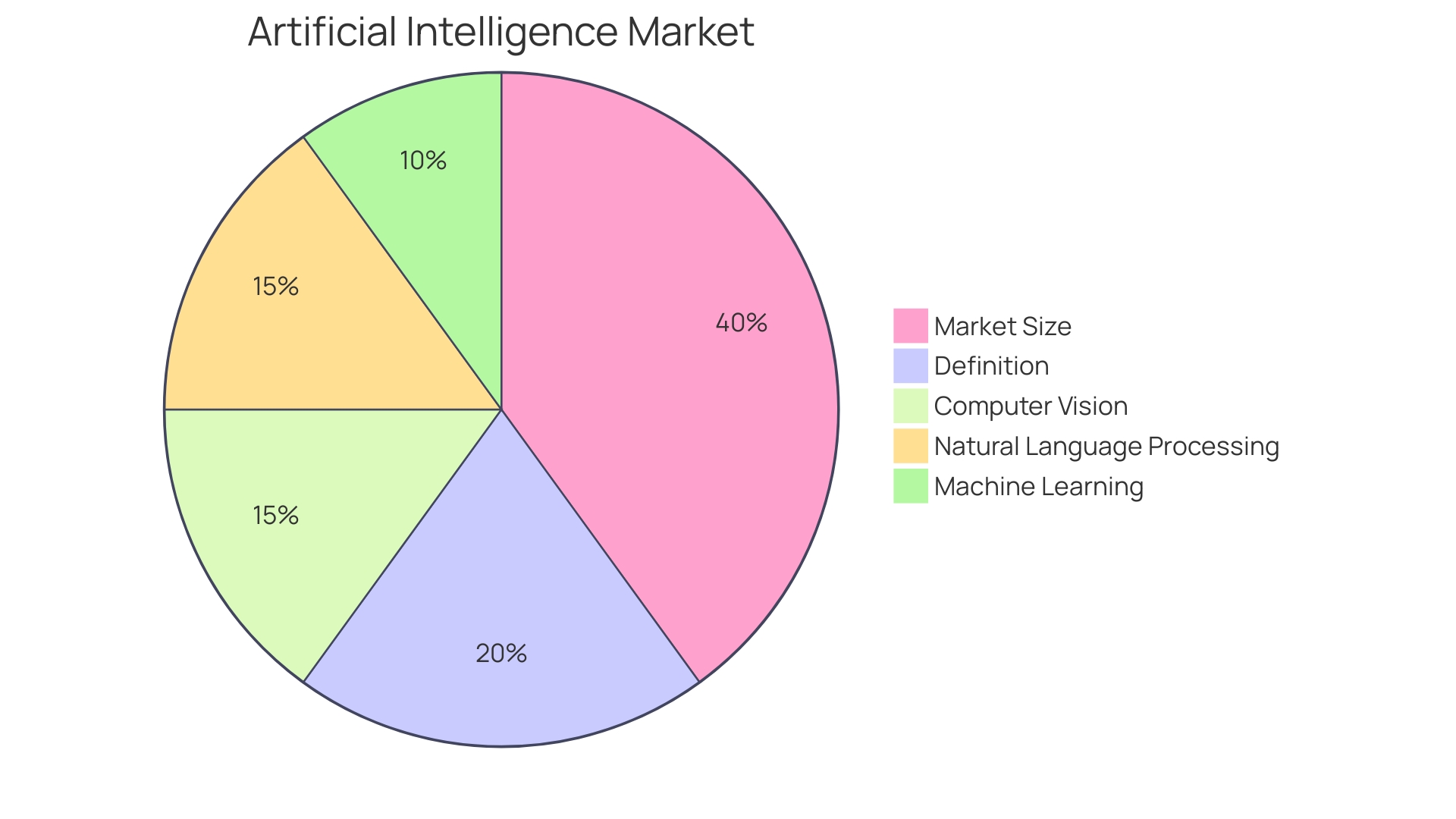
Conclusion
RPA is revolutionizing business operations by automating tasks and streamlining processes for enhanced efficiency. Successful implementation requires careful planning and ongoing monitoring. By leveraging RPA’s capabilities, organizations save time and resources while driving innovation and competitive advantage.
Integrating RPA offers benefits beyond cost savings, enhancing productivity and refining business processes. RPA’s versatility is evident in common applications across industries such as healthcare, customer service, retail, HR, and supply chain management.
Selecting the right tools and technologies is crucial. Advanced techniques like exception handling and error recovery mechanisms enhance automation capabilities. Cognitive automation through RPA and AI integration enables intelligent decision-making and process optimization.
Process discovery and optimization are fundamental, ensuring existing workflows are enhanced. Effective bot orchestration and workflow management ensure coordinated task execution and optimal performance. Best practices include identifying suitable processes, engaging stakeholders, managing change, and embracing continuous improvement.
The future of RPA lies in emerging technologies like AI-powered automation and hyper-automation. Hyper-automation combines RPA and AI for more customized solutions. The market for AI is expected to grow significantly, empowering organizations to implement AI-driven applications.
In conclusion, RPA is a strategic asset for modernizing business operations, saving time and resources, and driving innovation. By following best practices, leveraging advanced techniques, and integrating AI, organizations unlock the full potential of RPA and thrive in the future of work.
Unlock the potential of RPA and drive innovation in your organization today!
Introduction
Robotic Process Automation (RPA) is revolutionizing the way businesses operate by automating repetitive tasks and enhancing operational efficiency. RPA utilizes software robots, or ‘bots,’ to mimic human interactions with digital systems, performing functions such as data manipulation, report generation, and transaction processing. This technology significantly improves operational efficiency by reducing error rates, increasing throughput, and providing rapid and consistent customer service interactions.
To successfully implement RPA, organizations need to assess their internal processes, identify automation opportunities, and estimate integration costs. The transformative impact of RPA is widely acknowledged, with professionals in the field recognizing its growth potential and learning opportunities. As advancements in RPA technology continue, the prospects for business efficiency and innovation are substantial.
RPA will play a pivotal role in shaping the way organizations operate and embracing this wave of digital transformation is crucial.
What is RPA and How Does it Work?
Robotic Process Automation (RPA) stands at the forefront of business modernization, enabling the automation of repetitive, rule-bound tasks through software robots, or ‘bots’. These bots are designed to mimic human interactions with digital systems, facilitating a plethora of functions such as data manipulation, automated report generation, and transaction processing. By interacting with user interfaces of existing applications, RPA bots can navigate through systems, input data, and perform complex computations with ease and precision.
The incorporation of RPA into business operations can greatly improve operational efficiency. For instance, bots are capable of extracting and processing data across disparate systems without the need for manual intervention, thereby reducing error rates and increasing throughput. They can also handle customer service interactions, providing rapid and consistent responses, which helps in building customer loyalty and satisfaction.
To guarantee the smooth integration of RPA, organizations must carefully evaluate their internal procedures to identify which ones can be efficiently automated. This includes analyzing the inefficiencies that RPA can address and estimating the integration costs and time required. For example, within the healthcare sector, the digital assurance process is critical. As part of the initial assessment, a request form is submitted, and the Digital Service Team conducts a rigorous evaluation to ensure the proposed digital technology is secure, appropriate, and compliant with standards. It’s also essential to identify any existing solutions within the organization that may overlap with the new technology.
The transformative impact of RPA has been widely acknowledged, with professionals in the field acknowledging the growth potential and learning opportunities. According to a report, the majority of AI automation platform users, including those from the UiPath Community, express satisfaction with their roles and see a promising future in automation. This sentiment is shared across the industry, from seasoned experts to students aspiring to join the workforce.
With the continuous advancements in RPA technology, the prospects for business efficiency and innovation are substantial. As we look to the future, it’s evident that RPA will play a pivotal role in shaping the way organizations operate, highlighting the importance of embracing this wave of digital transformation.
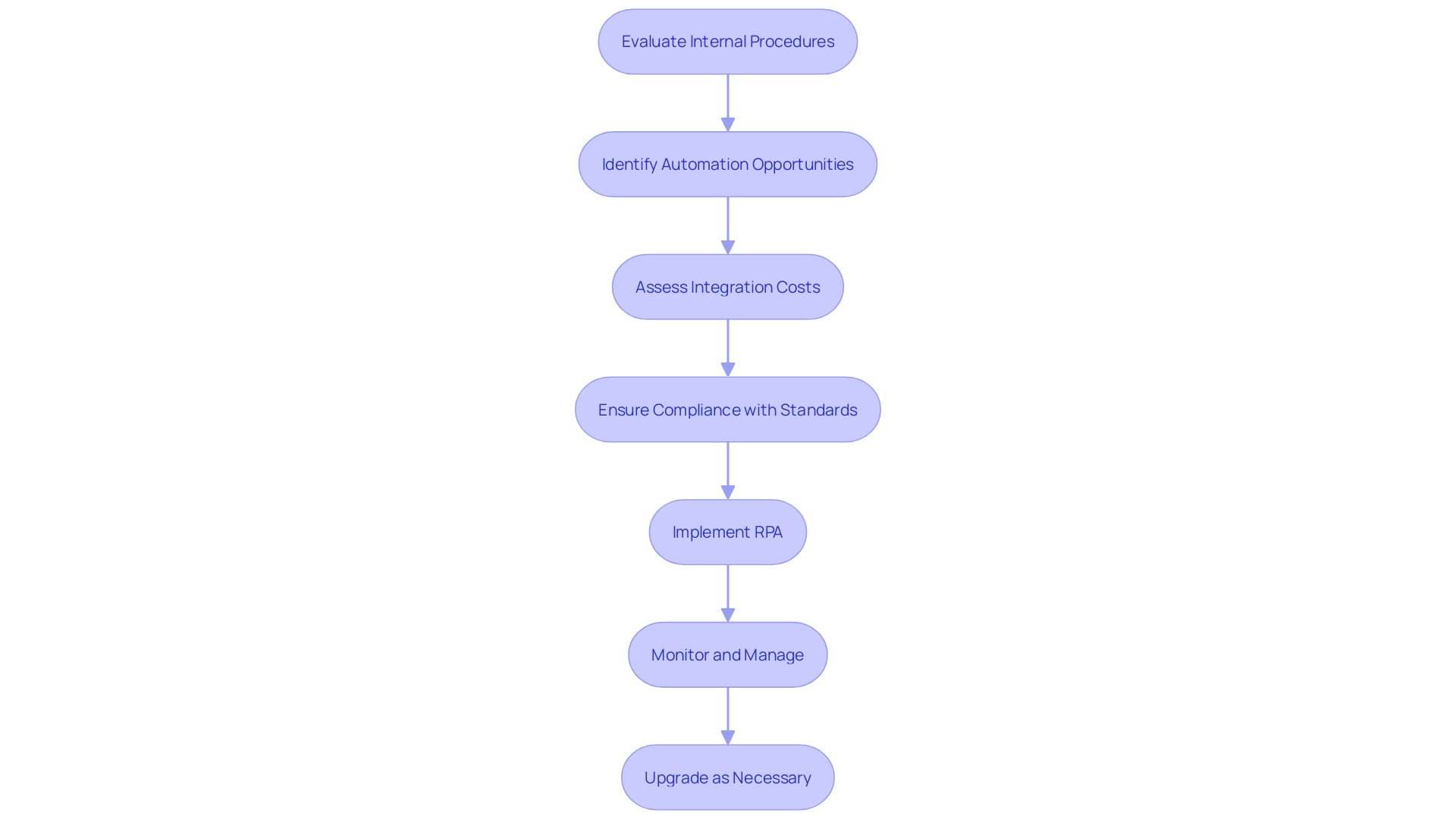
Key Benefits of RPA
Robotic Process Automation (RPA) transforms businesses by dramatically enhancing their operational efficiency. By automating mundane, repetitive activities, RPA frees up the workforce to engage in higher-value endeavors. This change not only enhances efficiency but also decreases the chance of human mistakes in activities like data input, resulting in improved precision in business operations.
Furthermore, RPA’s flexibility is a game-changer for business scalability. It allows for swift adjustments in automation levels to suit fluctuating business demands. For instance, Delivery Hero leveraged RPA to address the high volume of employee account lockouts, which previously resulted in significant downtime. By automating the account recovery process, the company reduced the time wasted and increased operational continuity.
Compliance and auditability are also enhanced through RPA, as it meticulously logs every action it performs. This detailed recording of operations promotes transparency and simplifies audits, as seen at St. James Winery, which capitalized on RPA to ensure consistent quality control, reinforcing its reputation as a top winery in the country.
Moreover, the integration of RPA and Artificial Intelligence (AI) leads to what is known as Intelligent Automation (IA). This combination extends the capabilities of RPA by adding layers of cognitive processing, allowing businesses to tackle more complex tasks.
In the wider framework of business modernization, it’s crucial to acknowledge that mechanization is not a set-and-forget solution. Ongoing monitoring and management are crucial for maintaining system efficacy. The future of business is in creating a collaborative ecosystem where humans and digital workforces enhance each other’s strengths, as advocated by thought leaders in technology and manufacturing.
For businesses considering RPA, it’s crucial to meticulously determine which manual operations to automate and evaluate the linked time and cost for integration. Beginning with smaller assignments, observing outcomes, and gaining knowledge from each project are crucial stages toward achieving success in the process of automating.
To summarize, RPA provides substantial advantages in terms of efficiency, accuracy, scalability, and compliance, but it’s the strategic fusion with AI that unleashes the complete potential of business automation.
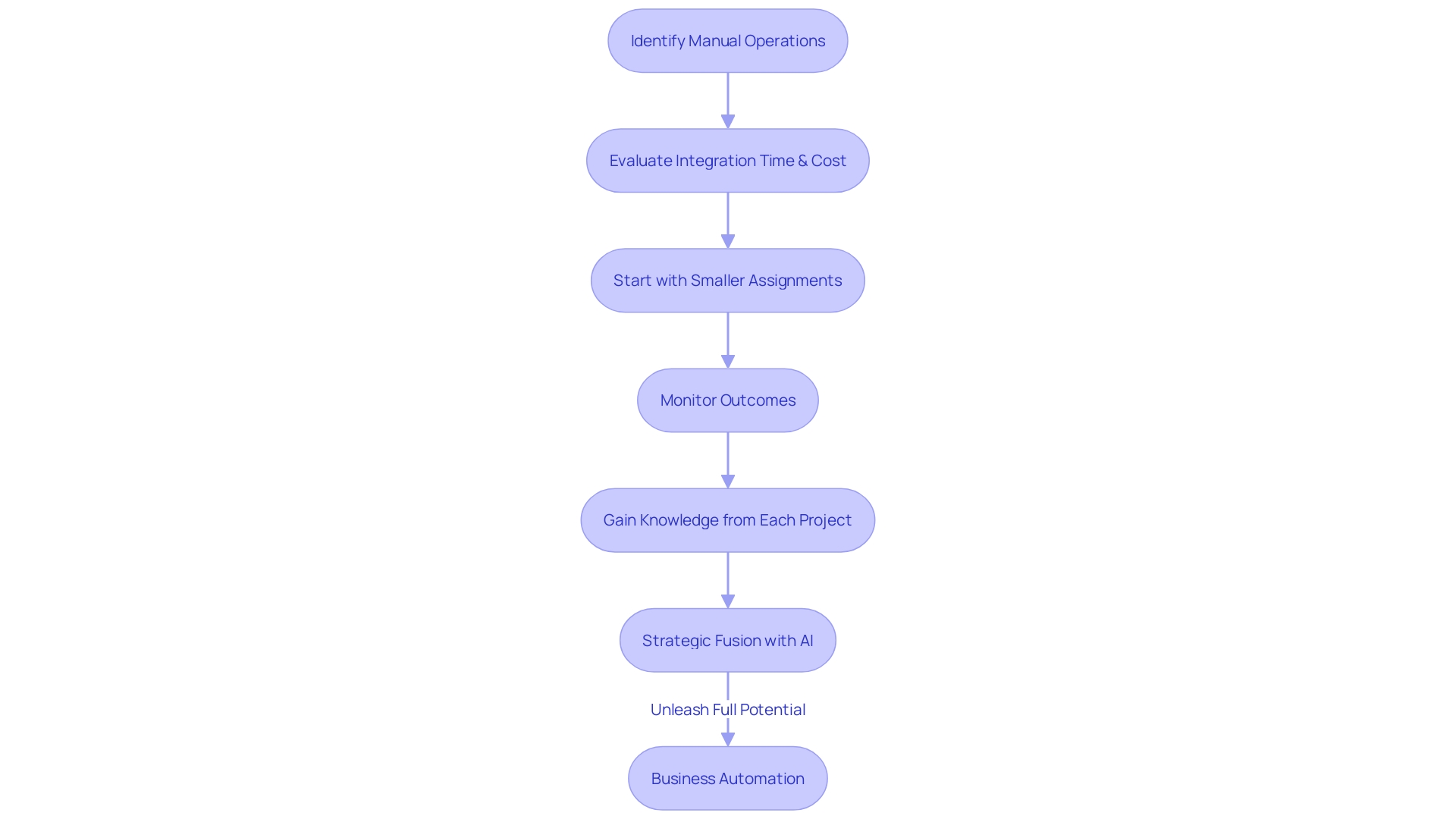
Industry Applications of RPA
Robotic Process Automation (RPA) has been adopted across various industries, leading to significant improvements in business process efficiency. For instance, in the banking and finance sector, institutions leverage RPA to streamline customer onboarding, account reconciliation, fraud detection, and compliance reporting. With the digital transformation of the banking industry, driven by consumer behavior and technological innovation, there is a heightened emphasis on security and compliance. Companies like M&T Bank have addressed these challenges by setting high standards for software quality, including establishing Clean Code standards across the organization to maintain efficient, secure software systems.
In the healthcare sector, RPA plays a critical role in managing patient data, processing insurance claims, scheduling appointments, and handling billing procedures. However, the reliance on outdated legacy systems poses a significant security threat. As reported by a 2022 HIMSS survey, approximately 73% of healthcare organizations continue to use such systems, which often lack the necessary updates and support to safeguard against security breaches.
The manufacturing industry benefits from RPA by automating inventory management, order processing, supply chain operations, and quality control activities. This process allows manufacturers to enhance productivity and decrease the time spent on manual, repetitive tasks.
Retail businesses are also utilizing RPA for inventory tracking, order fulfillment, and enhancing customer support services. Automation in retail not only optimizes operations but also provides a more personalized shopping experience for customers.
To successfully implement RPA, leaders must thoroughly evaluate the benefits and challenges of modernization. It is essential to determine which manual procedures are ready for mechanization and to evaluate the inefficiencies that RPA can tackle. Additionally, understanding the integration time and costs, as well as the potential ROI, are fundamental to making informed decisions about adopting RPA technologies.
As organizations strive for digital transformation, adopting intelligent mechanization, which merges RPA with AI, becomes essential for enhancing operations and formulating more strategic choices. Commencing with the process of automating minor tasks and progressively transitioning to more intricate workflows can establish a solid basis for wider-scale initiatives.
In summary, RPA is a transformative tool for industries looking to enhance operational efficiency, security, and compliance. By meticulously choosing procedures for mechanization and employing a systematic approach, organizations can unleash the complete potential of intelligent mechanization.

Difference Between RPA and AI
RPA (Robotic Process Automation) and AI (Artificial Intelligence) are both transformative forces in the realm of automation, but they serve distinct functions. RPA excels in automating routine, rule-based activities using software bots, which act as virtual workers carrying out pre-defined processes. This technology is especially skilled in managing structured assignments where predictability is crucial. Conversely, AI is the powerhouse behind intelligent systems capable of tasks that require cognitive skills, such as understanding language, recognizing images, and making informed decisions. These intelligent systems are designed to handle unstructured data and adapt to complex situations that are not as straightforward as those RPA handles.
The choice between these two technologies depends on a comprehensive comprehension of the procedures within an organization. Leaders must consider questions such as which manual tasks are suitable for mechanization and what are the inefficiencies that can be eliminated through such modernization. Evaluating the duration and expenses for RPA integration is vital for every procedure identified for mechanization.
A striking example comes from the healthcare sector, where adopting new digital technologies undergoes rigorous assessment. A clinician or department submits a request form, which then undergoes a ‘digital-assurance process’ to ensure the technology is secure, appropriate, and compliant. This evaluation also checks for redundancy to avoid duplication of existing technologies.
Leaders in operations must be aware of the requirement for such systematic evaluations before implementing technological advancements. It is not just about choosing between RPA and AI, but also about understanding the specific applications and benefits that each can bring to the table. For example, Ai’s potential is being utilized to transform industries with applications like predictive analytics in healthcare and customer service chatbots, suggesting a wider range of opportunities than RPA’s task-specific operations.
Ultimately, the knowledge of what RPA and AI can individually offer, paired with a strategic approach to assessing technological needs, can lead to significant enhancements in operational efficiency. The choice should be influenced by an assessment of the assignments in progress, their intricacy, and the intended results to guarantee the optimal execution of technological advancements.
RPA vs. Business Process Automation (BPA)
Robotic Process Automation (RPA) and Business Process Automation (BPA) represent distinct strategies within the sphere of organizational efficiency, each with their particular scope and application. RPA specializes in the automation of discrete, repetitive activities that follow clear-cut rules, thereby excelling in environments where precision and consistency are paramount. On the other hand, BPA offers a holistic method, aiming to automate end-to-end business procedures which may involve intricate decision-making, human interactions, and integration with multiple systems.
While RPA is adept at tasks like data entry and transaction processing, BPA takes on a systemic perspective, optimizing the workflow to enhance the overall effectiveness and efficiency of business operations. The decision between RPA and BPA should be guided by a comprehensive comprehension of the operational procedures, identification of inefficiencies, and a distinct vision of the mechanization objectives. Incorporating RPA, for example, necessitates evaluating the time and cost consequences for each process earmarked for mechanization.
With the advancement of automated technology, companies can now leverage the capabilities of software bots to carry out workflows across multiple applications, optimizing operations and liberating human resources for higher-level responsibilities. Choosing the appropriate system for streamlining processes, whether it’s a specialized DevOps platform or a flexible tool for various scenarios, depends on the intricacy of the tasks and the users involved.
Automation, as a concept, has roots stretching back millennia, with early inventions like water wheels and steam engines paving the way for today’s advanced automated systems, including AI. Despite this historical progression, mechanization has never been a ‘set-and-forget’ solution; it demands ongoing oversight and collaboration to ensure optimal performance. As we envision the future, the merging of RPA and AI is set to redefine the terrain of intelligent technology, empowering businesses to enhance efficiency, refine operations, and make more discerning judgments, ultimately propelling digital transformation.
Steps to Implement RPA
Embarking on the journey of Robotic Process Automation (RPA) involves a strategic approach to streamline operations. To begin the process of streamlining operations, identifying which processes are well-suited for mechanization is crucial. Usually, these activities are repetitive, rule-governed, and notably laborious. Once identifying these activities, it is essential to evaluate their potential for mechanization, considering the complexities, compatibility with current systems, and the expected advantages.
Once suitable processes are selected, designing the automation framework is the next step. This requires carefully mapping out workflows, actions, and the necessary inputs for each job. Following the design phase, it’s time to bring the bots to life. These software robots are crafted to execute the automated tasks and are rigorously tested to ensure flawless operation.
Deploying these bots into a live environment marks a significant milestone, but the journey doesn’t end there. Continuous monitoring is essential to refine their performance and to make data-driven improvements. With the initial achievements, organizations can then contemplate extending their RPA initiatives to cover additional procedures, thereby amplifying the advantages of mechanization throughout the enterprise.
As highlighted by industry experts, automation has always been a part of business innovation, serving to bolster efficiency and productivity. However, it demands ongoing human oversight to maintain and enhance its performance. In the contemporary setting, the merger of RPA and Artificial Intelligence (AI) is revolutionizing how companies accomplish their digital transformation objectives, facilitating smarter procedures and more strategic decision-making.
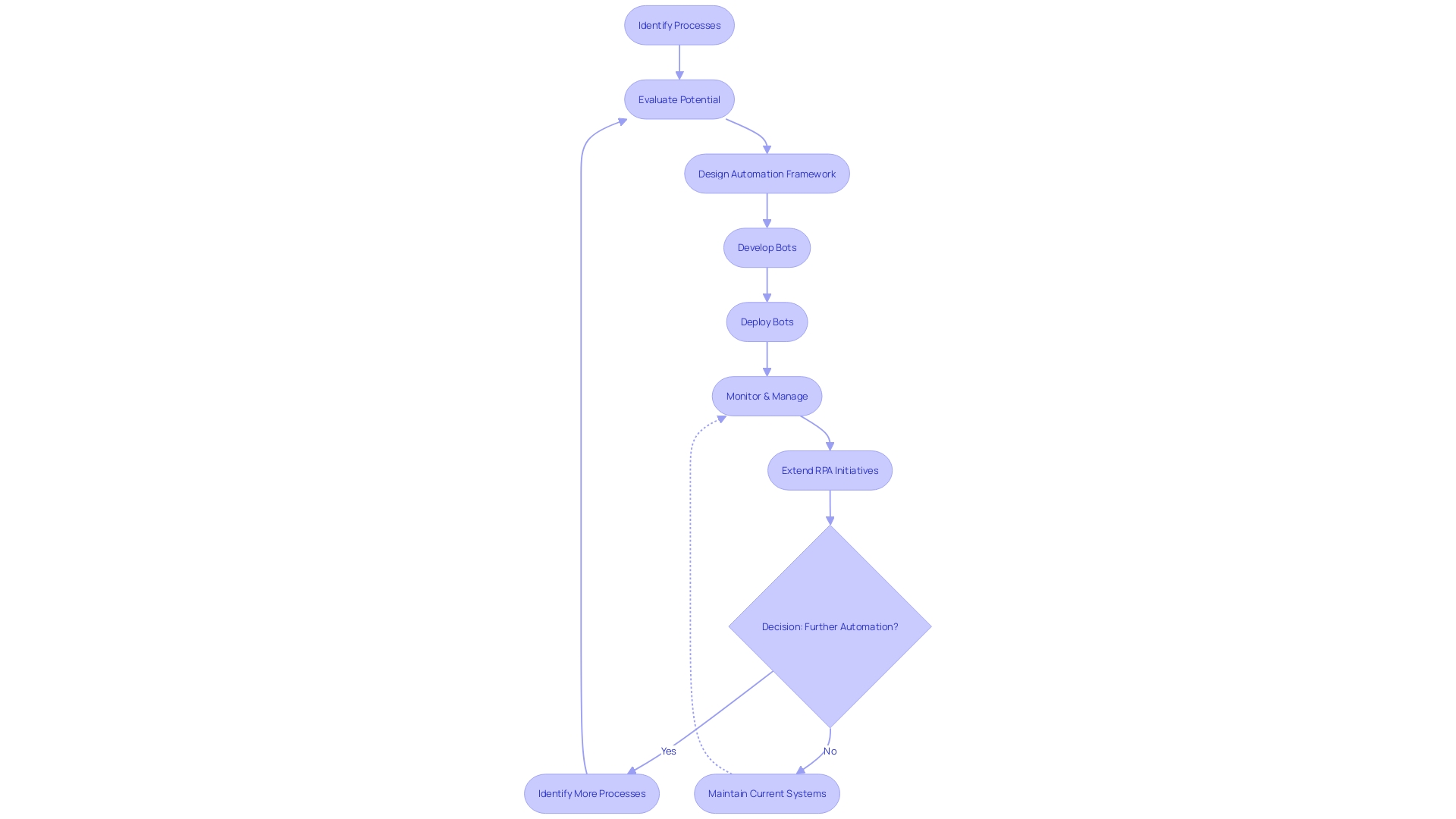
Common Use Cases for RPA
Robotic Process Automation (RPA) is transforming the way industries function by automating routine activities. Here are some impactful applications of RPA that are enhancing productivity across various sectors:
- Data Entry and Validation: RPA bots excel at transferring data between systems, ensuring both speed and accuracy. This reduces the manual effort and minimizes errors associated with human data entry.
- Report Generation: Compiling data from several sources into structured reports is a time-consuming task. RPA streamlines this by automating data extraction and report assembly.
- Invoice Processing: Processing invoices involves extracting key details and updating systems—a perfect task for RPA, which does this with precision and without fatigue.
- Customer Support: RPA aids in managing customer inquiries by providing automated responses to basic questions, allowing customer service representatives to focus on more complex issues.
- Order Handling: Starting from the time an order is placed until it is completed, RPA can automate the complete chain, thereby improving efficiency and reducing the possibility of mistake.
To optimize the advantages of RPA, it is essential to examine and identify particular manual procedures that are ready for automation. Consider the inefficiencies that RPA can address, and evaluate the time and cost implications for integrating RPA software. Begin with procedures that are done by hand, repetitive, and expensive, and strive for immediate successes with activities that are uncomplicated yet generate substantial returns on investment.
As you embark on this journey, remember to map out the processes, pinpoint stakeholders, and assess the systems involved, such as inventory management and online shop software. Starting automation with smaller activities allows for gradual adjustment, and monitoring outcomes ensures that goals are accomplished while providing valuable insights for future projects.
Embracing RPA means stepping into a transformative era where bots can seamlessly execute workflows, freeing up human workers to engage in more strategic tasks. As the synergy between RPA and artificial intelligence (AI) grows, businesses are poised to make more informed decisions, improve processes, and ultimately, realize digital transformation.
Future of RPA: Transition to Intelligent Automation
Robotic Process Automation (RPA) is evolving, poised to transform into intelligent operation. By incorporating Artificial Intelligence (AI) technologies, RPA surpasses its conventional limits of automating simple, rule-based activities. Intelligent merging combines RPA with advanced AI capabilities, including natural language processing, machine learning, and predictive analytics, enabling the mechanization of tasks that require the processing of unstructured data or complex decision-making. This synergy facilitates learning from patterns and making data-driven predictions, thereby enhancing the level of efficiency and productivity that businesses can achieve. As digital transformation progresses through its stagesâdigitization, digitalization, and ultimately, digital transformationâintelligent technology stands as a pivotal technology in reshaping operational models. It empowers organizations to not only digitize information but also to optimize and innovate processes. This is apparent as companies use IoT to link ‘things’ to the internet for data sharing, and as AI drives mechanization beyond monotonous jobs, as emphasized by SS&C Blue Prism’s document mechanization.
Embracing this advancement, small businesses can leverage RPA to fortify customer satisfaction, swiftly responding to inquiries with precision. Scaling operations becomes less daunting as intelligent technology aids in managing growth challenges. For companies embarking on this journey, a phased approach is recommended: initiating with simpler tasks, progressing to complex workflows, and meticulously documenting outcomes. This structured approach ensures that the transformative potential of intelligent technology is fully harnessed, improving processes and enabling more informed business decisions.
The convergence of next-generation technologies such as IoT, 5G, and AI with RPA signals the dissolution of traditional categories, birthing new technological families. This transformation is propelled by requests for sustainability, efficiency, and fair consumer experiences, and is shaping the landscape of automated processes. As businesses adopt AI, it’s crucial to consider data preparedness, the synergy of human talent with digital assistants, IT opportunities, and investment strategies. An 11-point action guide can serve as a blueprint for optimizing intelligent processes, ensuring that enterprises can navigate the journey towards digital transformation successfully.
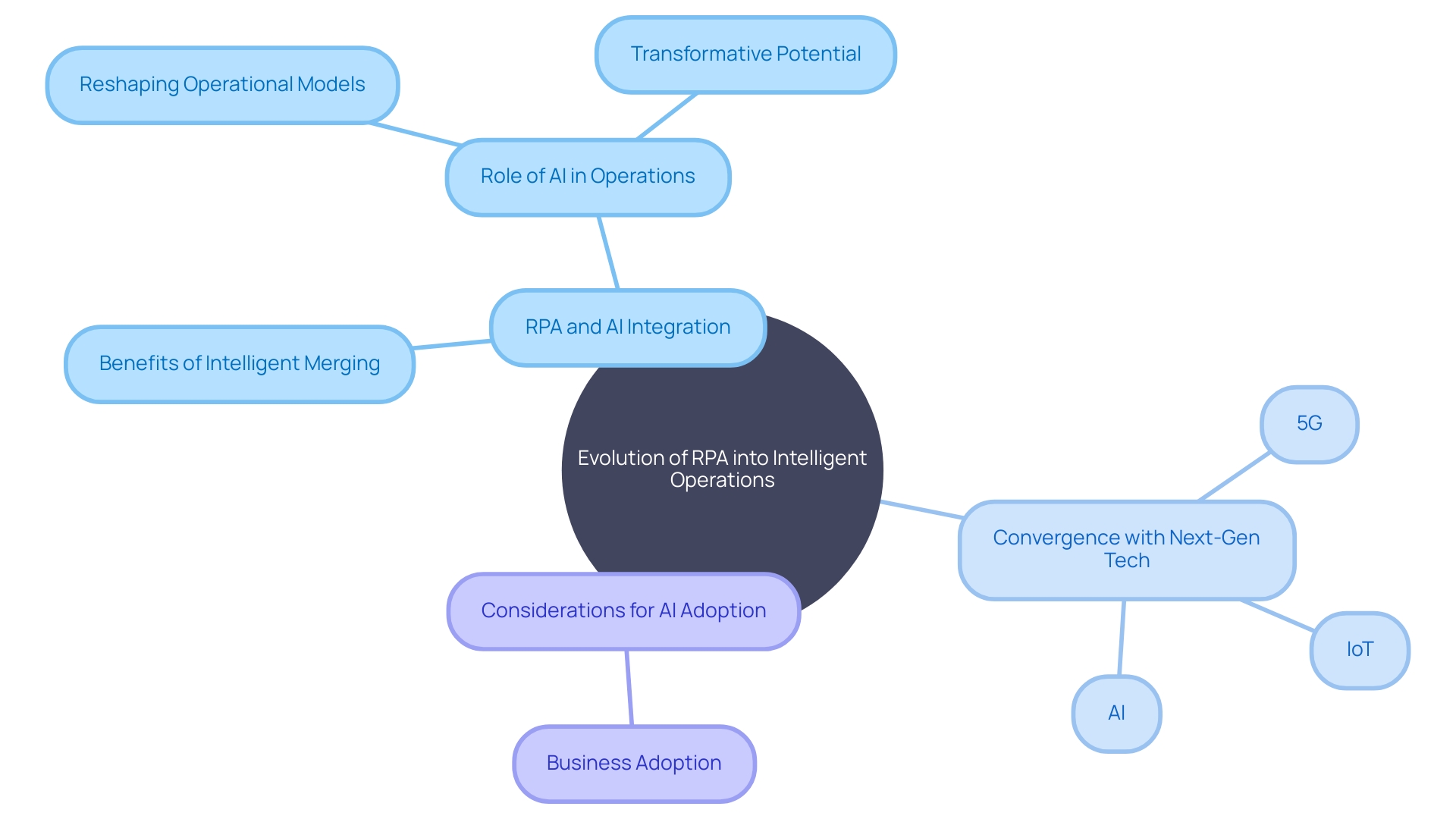
Best Practices for RPA Implementation
Robotic Process Automation (RPA) has become a game-changer in the way businesses operate. To ensure a successful RPA implementation, certain best practices must be observed. It begins with carefully identifying which manual processes are ready for mechanization and comprehending their current inefficiencies. A pilot project serves as an ideal launchpad, providing a clear picture of the potential challenges and benefits, thereby paving the way for a calibrated scale-up of the mechanization efforts.
Involvement of stakeholders is another cornerstone of RPA best practices. Business users and subject matter experts offer invaluable insights, helping to identify opportunities that align with business objectives and facilitate smoother adoption. This collaborative approach was demonstrated by the NHS trust’s ‘digital-assurance mechanism,’ ensuring new technologies met rigorous standards of security and compliance before they were adopted.
Security and compliance are not to be overlooked, as they are critical to protecting sensitive data and meeting regulatory obligations. Incorporating robust security measures such as user access controls, encryption, and detailed audit trails is imperative to maintain trust and integrity within automated systems.
An ongoing commitment to monitoring and optimization is also crucial. As the CTO and Co-Founder of Reveille Software reminds us, mechanization is never a ‘set it and forget it’ solution. Continuous performance monitoring and iterative improvements ensure that automated processes evolve in tandem with changing business needs, thereby sustaining efficiency and productivity gains.
By weaving together these best practices—starting small, engaging stakeholders, ensuring security and compliance, and continuously optimizing—organizations can harness the full potential of RPA, achieving not only immediate operational improvements but also long-term automation success.
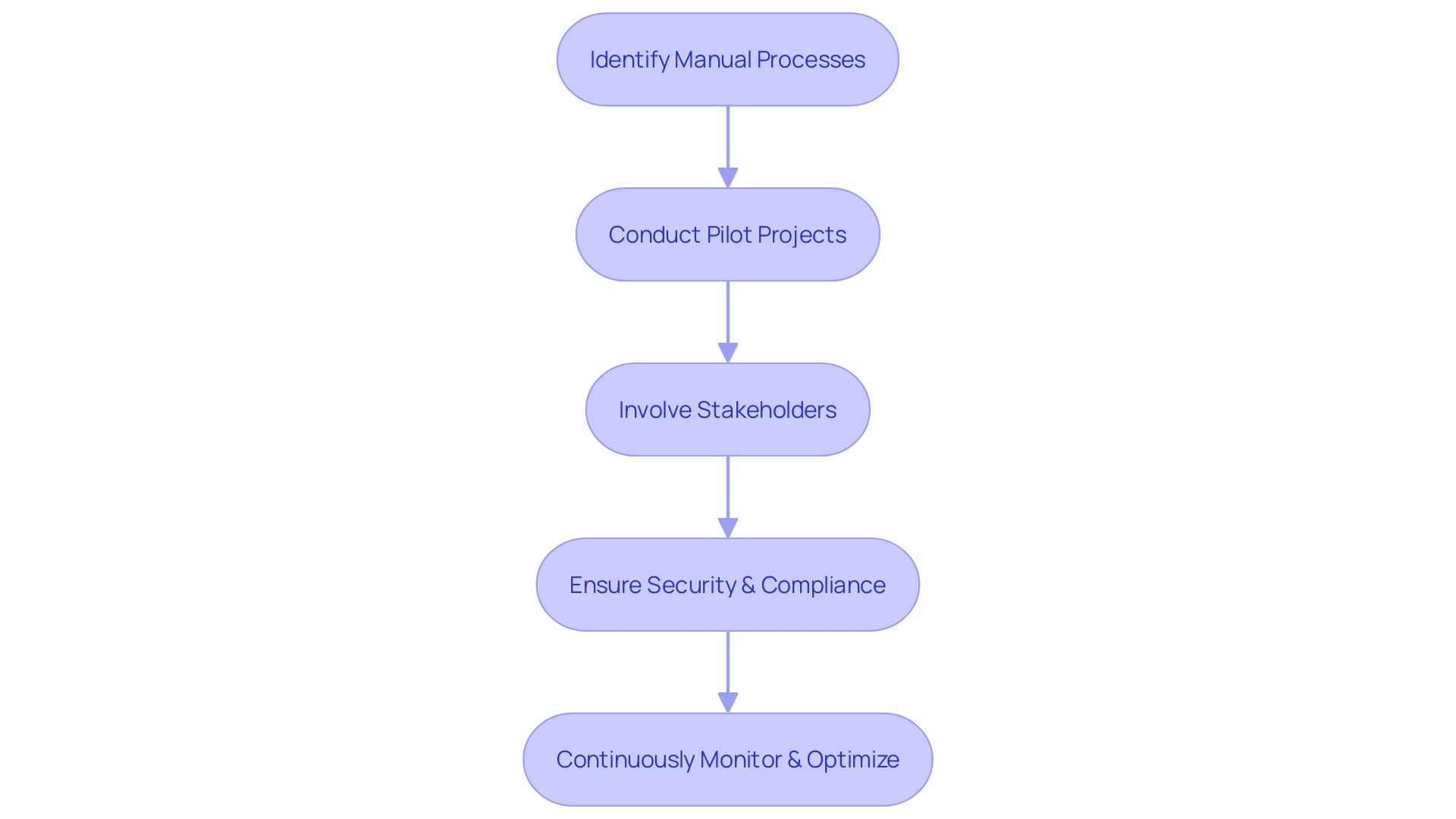
Conclusion
Robotic Process Automation (RPA) is revolutionizing businesses by automating tasks, improving efficiency, and providing consistent customer service. To successfully implement RPA, organizations must assess processes, identify automation opportunities, and estimate integration costs. Starting with smaller tasks and monitoring results are key to achieving quick wins and learning from each project.
RPA offers significant benefits, including increased efficiency, accuracy, scalability, and compliance. It frees up the workforce for higher-value activities, reduces human error, and provides flexibility to adjust automation levels based on business demands. RPA streamlines processes in various industries, enhancing operational efficiency, security, and compliance.
Implementing RPA involves a strategic approach, including identifying processes for automation, designing the framework, deploying bots, and continuous monitoring. Ongoing human oversight and the integration of RPA and AI are vital for successful automation and achieving digital transformation.
Following best practices, such as identifying automation opportunities, involving stakeholders, ensuring security and compliance, and continuous monitoring, can lead to immediate improvements and long-term success.
As RPA technology advances, its prospects for business efficiency and innovation are substantial. Embracing RPA and intelligent automation will shape the way organizations operate and drive digital transformation. By leveraging the capabilities of RPA and integrating AI, businesses can unlock the full potential of automation, making more informed decisions and achieving their operational objectives.
Introduction
Embracing a career as an RPA developer means stepping into a role that is not only in high demand but also deeply intertwined with the future of technology and business optimization. These experts are the architects behind automated systems that streamline operations and innovate how companies function across various industries. The market acknowledges this need, reflecting in the attractive salaries and comprehensive compensation packages offered to these professionals.
Moreover, the work involves solving complex challenges through the design and implementation of automated solutions, which is both intellectually stimulating and satisfying. A career in RPA development is not just about understanding the tools but mastering their application to make a significant impact on business efficiency and growth. With the right blend of technical skills and a vision for innovation, RPA developers are well-placed to be key players in the digital transformation of industries.
Benefits of Becoming an RPA Developer
Choosing a career as an RPA professional entails entering a position that is not only highly sought-after but also closely connected to the future of technology and business optimization. These experts are the architects behind automated systems that streamline operations and innovate how companies function across various industries.
One of the most compelling reasons to consider this path is the high demand for RPA expertise. Companies are constantly seeking methods to improve efficiency, and professionals specializing in RPA play a crucial role in advancing these enhancements. The market acknowledges this need, reflecting in the attractive salaries and comprehensive compensation packages offered to these professionals.
The role of an RPA professional is dynamic, requiring a commitment to continuous learning. As new technologies emerge, individuals involved in software engineering have the opportunity to stay at the forefront of innovation, mastering tools that shape the future of automation.
Career progression is another significant aspect, with potential advancements into roles such as RPA architects or consultants. This trajectory not only speaks to the profession’s robust growth prospects but also to the strategic importance of RPA in business development.
Moreover, the work involves solving complex challenges through the design and implementation of automated solutions, which is both intellectually stimulating and satisfying.
Take, for instance, the case of Lindy, an AI assistant that automates a wide array of tasks. The creation of such advanced systems necessitates a profound integration of apps and services, emphasizing the intricate problem-solving aspect of an RPA professional’s position.
Furthermore, the advancement of software development practices, as highlighted by Jason Beres, Sr. VP of Developer Tools at Infragistics, emphasizes the growing dependence on AI to accelerate development processes, an area where RPA specialists are crucial.
A career in RPA development is not just about understanding the tools but mastering their application to make a significant impact on business efficiency and growth. With the perfect combination of technical skills and a vision for innovation, RPA professionals are well-positioned to be significant contributors in the digital transformation of industries.
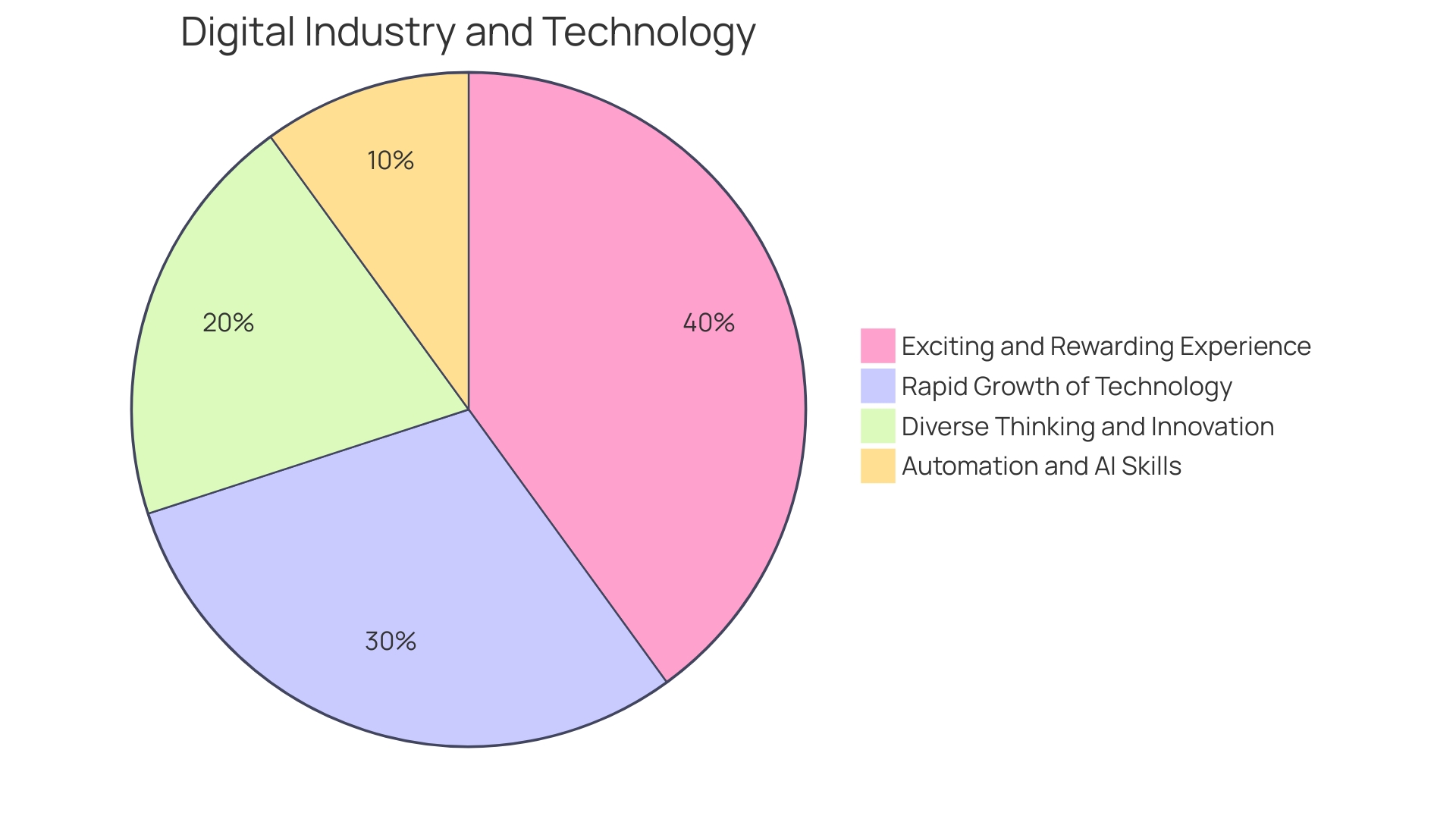
Key Roles in an RPA Team
In a Robotic Process Automation (RPA) team, each member plays a crucial role in ensuring the success of the initiatives without relying on automation. These roles include:
-
RPA Developer: Entrusted with the creation and implementation of automation workflows, the RPA developer utilizes RPA tools to transform manual processes into automated ones, thereby streamlining operations.
-
Business Analyst: This position entails working closely with stakeholders to identify and assess processes that are ready for technological streamlining. The business analyst collects detailed requirements to guide the RPA team’s development efforts.
-
RPA Architect: Tasked with building a strong framework, the RPA architect ensures that the solutions not only integrate seamlessly with the existing IT landscape but also support the organization’s strategic objectives.
-
Project Manager: The linchpin of the project, the project manager ensures that the initiative is executed within scope, budget, and time constraints, ultimately fulfilling the project’s intended benefits.
-
Quality Assurance (QA) Analyst: By rigorously testing the automated solutions, the QA analyst certifies that they function as intended and satisfy all predefined criteria.
-
Support Specialist: Post-deployment, the support specialist offers crucial technical assistance and troubleshooting, ensuring the lasting effectiveness of the solutions.
The dynamic interplay between these roles is akin to the ‘trifecta’ concept, where diverse skill sets from engineering, product, and UX converge to build scalable, valuable, and user-friendly products. Similarly, in RPA, the collective expertise of developers, analysts, architects, and managers is essential for crafting high-quality automation systems that are both reliable and efficient.
For example, the thorough ‘digital-assurance evaluation’ initiated by a trust to assess new technologies illustrates the meticulous approach an RPA team must adopt. This process involves preliminary assessments, detailed questionnaires, and a comprehensive evaluation of the technology’s security, appropriateness, and compliance with standards—a methodology that echoes the careful planning and systematic execution required in RPA projects.
Furthermore, embracing mechanization is a strategic move that has historically propelled business innovation. From the beginning of the water wheel to the advanced implementations of AI, mechanization has continually sought to enhance efficiency and productivity. Yet, it remains a collaborative effort between human insight and technological prowess, necessitating ongoing monitoring, management, and refinement.
As we venture into an era where Generative AI is reshaping technical writing and documentation, RPA teams must remain agile, adapting their skills to the evolving landscape. This shift requires a deep comprehension of both the existing systems and the innovative technologies that are shaping the future of mechanization in different industries.
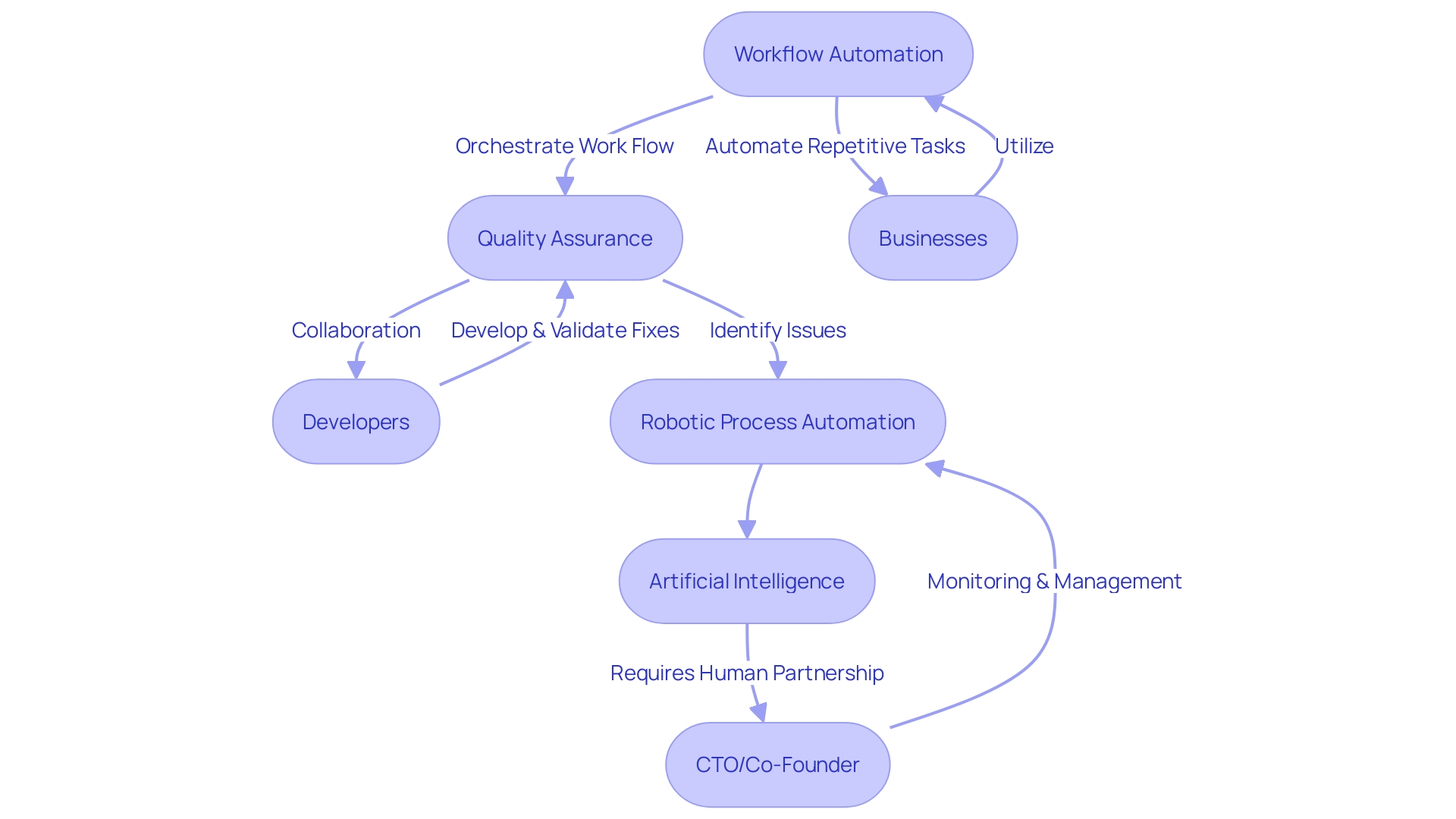
Essential Skills for RPA Developers
Mastery in languages like Python, Java, or C# is crucial for developing scripts and interfacing with RPA tools, much like the TotalEnergies Digital Factory creates customized digital solutions.
-
Problem-solving: Strong problem-solving skills are crucial for analyzing intricate business operations and creating solutions that are both efficient and effective, as demonstrated by Lindy’s approach to integrating a vast network of apps and services.
-
Attention to Detail: Meticulousness ensures the precision and dependability of scripts, addressing the same need for accuracy that drives pediatricians at Summer Health to translate medical shorthand into comprehensive visit summaries.
-
Analytical Thinking: The capacity for analytical thought allows RPA developers to deconstruct intricate processes into smaller, automatable tasks, reflecting the analytical skills data analysts use to extract insights from data sets.
-
Communication Skills: Clear and effective communication is essential to collaborate with various stakeholders, understand their needs, and keep them updated on project progress, much like cross-functional teams in data science projects must work together to align solutions with business goals.
Choosing the Right RPA Tools
Selecting the suitable RPA tool is crucial for the success of robotization endeavors. As you navigate the ample selection of RPA tools on the market, it’s crucial to weigh several factors to ensure a fitting choice:
-
Functionality: It’s imperative to scrutinize the features of RPA tools to match your specific automation needs. For instance, Specsavers faced unique challenges due to its niche in optometry and a global supply chain. Custom in-house technologies were developed to handle these specificities, showcasing the importance of tool features that align with business requirements.
-
Scalability: Anticipate your organization’s growth and opt for RPA tools that can expand their capabilities accordingly. A tool that scales effectively is essential, as demonstrated by Lindy, an AI assistant platform that integrates with a vast network of apps to perform various tasks. The ability to scale and integrate efficiently was crucial for their operation.
-
Ease of Use: A user-friendly interface simplifies the development and management of scripts for streamlining processes. This was a critical factor for the Department of Electronic & Electrical Engineering, which streamlined their personal tutorial session processes with intuitive systems.
Seamless integration with current systems promotes smooth workflow operation, much like the Zippin technology-enabled checkout-free store in Dublin Airport, which integrates cameras and weight-sensored shelving for a hassle-free shopping experience.
- Vendor Support: Ensure that the vendor offers robust support, including comprehensive documentation, training programs, and technical assistance. This support network is crucial, as the UiPath Community demonstrates through events and hackathons that enhance technological journeys.
In the rapidly evolving landscape of RPA, where technology advancements like AI are not fully autonomous and require human oversight for stability and management, selecting the right tool is more than a one-time decision. It’s a strategic investment in your organization’s future efficiency and productivity.

Step-by-Step Guide to Becoming an RPA Developer
Embarking on a career as an RPA developer is an exciting journey filled with opportunities for growth and innovation. To begin, immerse yourself in the foundational concepts and advantages of RPA, ensuring a robust base of knowledge. Programming expertise is crucial; sharpen your skills in languages like Python or Java, and delve into automation and scripting.
Hands-on practice is next: delve into RPA tools such as UiPath and Automation Anywhere, exploring their capabilities. UiPath’s Citizen Developer Foundation training, for example, provides an immersive learning experience with practical exercises spanning multiple industries. Certifications are a testament to your proficiency; obtaining them from esteemed bodies adds to your professional stature.
Real-world application of your skills comes from collaborating on RPA projects. Here, you can learn from seasoned experts and apply your knowledge in practical settings. For instance, consider how the team at Delivery Hero streamlined their IT processes, or how Lindy integrated a network of apps for their AI assistants, showcasing the transformative power of RPA in action.
Keeping abreast of industry trends is pivotal. The rapid technological advancements and the need for RPA professionals to stay informed underscore Epic and Cerner’s dominance in the electronic health records space. Engage with webinars and workshops, and network with peers through platforms like LinkedIn. Connections in this field can lead to insights and career advancement opportunities.
Remember, certifications, while debated, are still valued in the tech industry, as evidenced by software professionals often being encouraged to pursue them. They signify a commitment to your craft and can elevate your appeal to potential employers. As you develop your career, remember to look at big-picture industry trends, such as the job market data for tech and healthcare sectors, to gauge opportunities and align your skills accordingly.
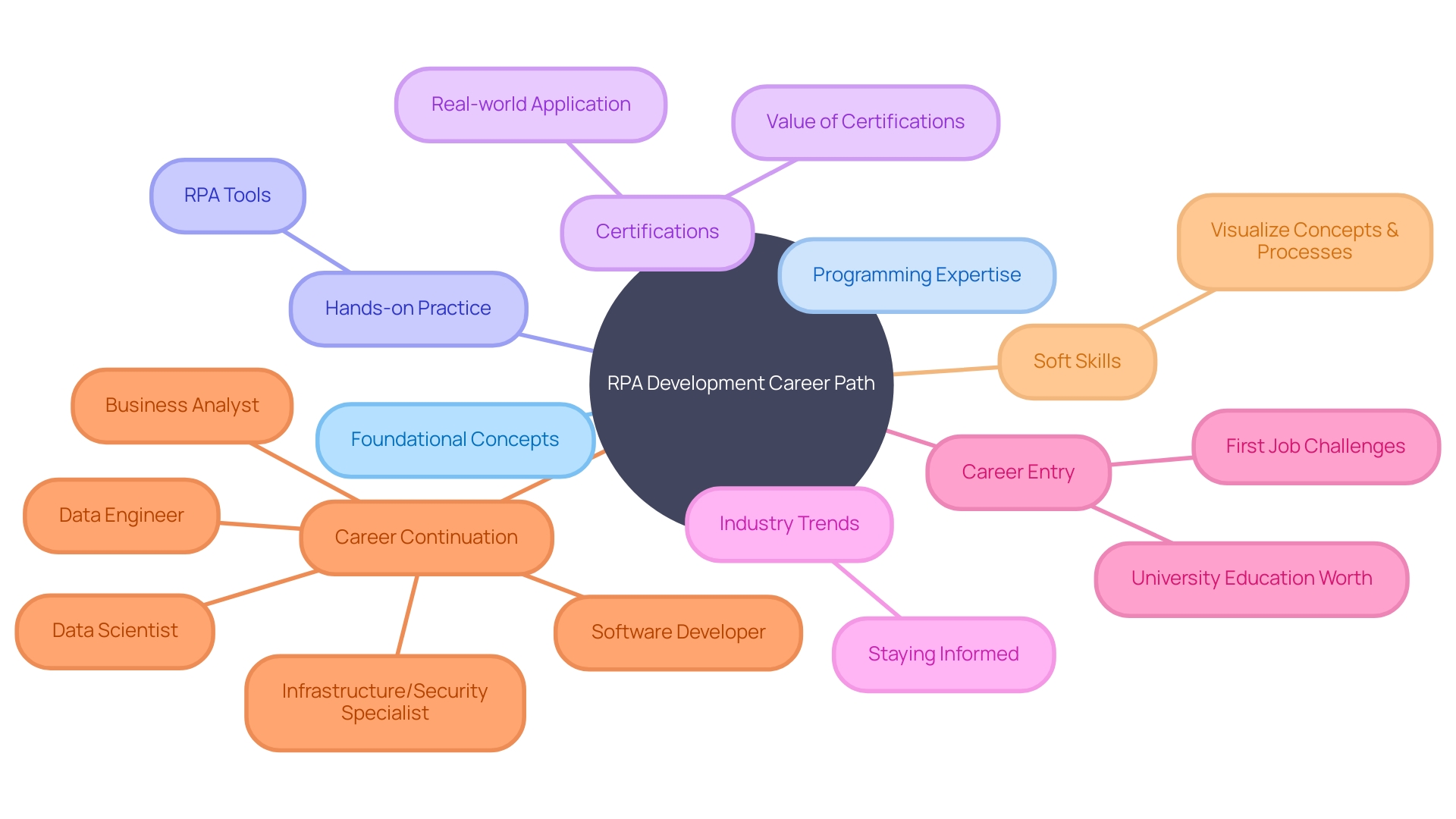
Understanding the Role of an RPA Developer
-
Analyzing Business Processes: An RPA professional must delve deeply into existing business processes, similar to how the Digital Service Team conducts initial assessments to ensure the requested technology aligns with security and compliance standards. By taking this approach, an RPA professional reveals areas ready for streamlining, aligning with stakeholders’ requirements and identifying potential that may already exist within the organization.
-
Designing Automation Solutions: The design phase is critical, akin to the NHS’s approach to assessing whether a technology is appropriate for its intended use. RPA experts create precise solutions, guaranteeing their resilience, precision, and achievement of the desired outcomes, similar to how healthcare facilities must ensure their technologies address specific issues.
-
Testing and Debugging: RPA professionals rigorously examine and debug the solutions to ensure they function properly and meet the specified criteria. Reflecting the feeling of the CTO of Reveille Software, it’s comprehended that automation is not a set-and-forget procedure; it necessitates continuous adjustments and troubleshooting to uphold stability.
-
Deployment and Maintenance: Once developed, RPA solutions are deployed and must be maintained to ensure their continued effectiveness. This mirrors the need for constant monitoring and management of automated systems throughout history, underscoring that RPA is not exempt from the need for human oversight.
-
Collaboration and Communication: Effective communication is paramount for RPA developers, as they must work in concert with various stakeholders. This is comparable to the collaborative nature of digital technology assessments, where multiple parties contribute to the decision-making procedure.
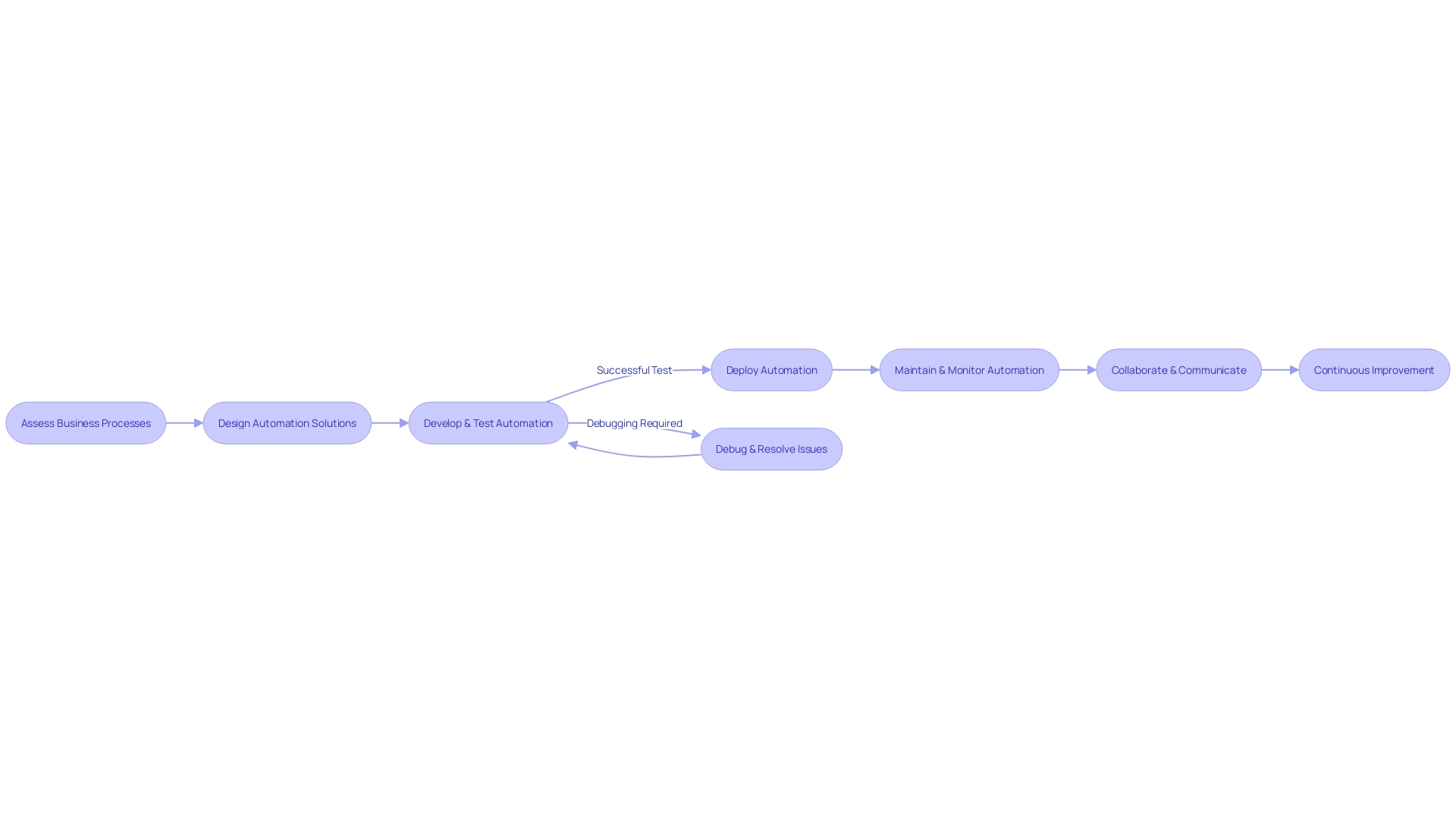
Best Practices in RPA Development
To enhance the success of projects, adhering to RPA development best practices is crucial. Establishing uniform procedures prior to implementing automated systems guarantees thorough documentation, resulting in enhanced efficiency during execution and upkeep. By designing RPA solutions to be modular, developers can facilitate easy updates and scalability, adapting to evolving business needs.
Incorporating robust error handling mechanisms is essential for smooth execution and handling exceptions. Version control systems, like Git, are essential for managing modifications in scripts, enabling smooth collaboration and the capability to roll back to previous versions when needed.
Ensuring security is of utmost importance when automating tasks that involve sensitive data. It is necessary to implement measures that protect this data and comply with privacy regulations. Moreover, continuous testing and maintenance are vital for addressing issues and improving performance, ensuring the RPA solutions function optimally.
Finally, thorough documentation of the mechanization solutions, including process flows, design decisions, and troubleshooting steps, is essential for future reference and knowledge transfer, making it easier for others to comprehend and operate with the system.
By adopting these proven methods, RPA developers can build more dependable, expandable, and protected solutions that endure and promote operational superiority.
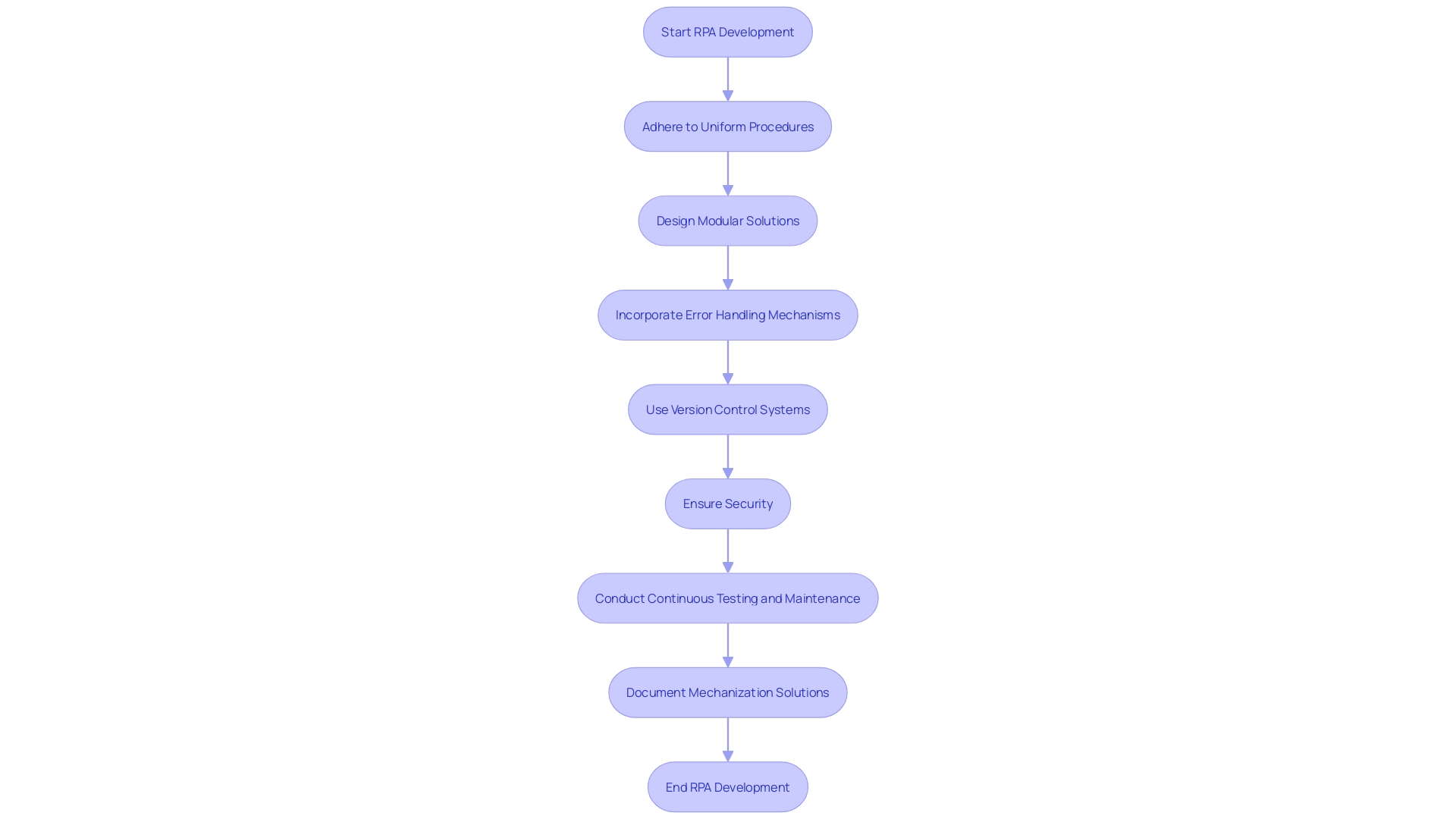
Advanced RPA Techniques
Exploring the advanced methods of RPA development can reveal new levels of efficiency and intelligence. Here’s a look at some of the sophisticated strategies that can take your automation capabilities to the next level:
-
Cognitive Automation: This approach elevates RPA by infusing it with AI capabilities like natural language processing and machine learning. The outcome is a system that can handle unstructured data and make intelligent decisions, similar to the Digital Service Team’s evaluation procedure for new technology requests, ensuring security, compliance, and appropriateness.
-
Intelligent Automation (IA): Through the integration of RPA with AI and machine learning, IA can manage intricate business procedures that necessitate decision-making and problem-solving. For example, Medien Hub Bremen-Nordwest experienced significant customer service improvements by implementing an AI platform, leading to faster complaint processing times.
-
Orchestrator: An RPA orchestrator acts as a nerve center for your efforts, offering features such as scheduling, logging, and analytics to manage and monitor your solutions effectively.
To improve your scripts, advanced scripting methods that involve variables, loops, conditionals, and exception handling can optimize and streamline your tasks.
Understanding the process of integrating APIs can enable smooth data exchange and streamline processes across various platforms, as demonstrated in the partnerships between technology partners and companies such as GrayMatter Robotics.
Utilize tools to analyze the performance and effectiveness of your automated solutions. This insight can identify improvement areas and lead to data-driven decisions, echoing the sentiments of professionals who contribute to the State of the automated industry report.
By embracing these advanced RPA techniques, organizations can not only improve their operational efficiency but also gain a competitive edge in the rapidly evolving technological landscape.
Managing Organizational Change with RPA
When considering the implementation of Robotic Process Automation (RPA) within your organization, it is crucial to address organizational change with a strategic approach. Engaging stakeholders early is vital. By involving key personnel from the outset, you can preemptively tackle concerns, ensuring RPA aligns with the organization’s goals and vision.
To foster acceptance, clear communication regarding RPA’s benefits and impact is essential. Training programs should be crafted to provide employees with skills necessary for adapting to automation-enhanced workflows.
Selecting change champions within the organization can be an effective tactic. These individuals advocate for RPA, helping to mitigate resistance and address employee apprehensions. Implementing RPA in phases allows for smoother adaptation and minimizes operational disruptions. This phased approach mirrors the journey of a leading Chilean retailer who, upon rapid expansion, faced challenges in managing their growing workforce. They acknowledged the necessity to develop their talent management methods in order to uphold their status as a leading employer for technologists.
Providing continuous support and guidance throughout the RPA transition is another key strategy. This ensures that any productivity impacts are addressed promptly, maintaining operational continuity.
Finally, assessing the effectiveness of RPA deployment and commemorating accomplishments act as strong affirmations of the positive impacts of the implementation. As per insights from industry experts, while the path to embracing new technologies like RPA can be challenging, particularly for large organizations with legacy systems, the journey is essential for staying competitive in a rapidly evolving market. In fact, research indicates that nearly 80% of enterprises need to adapt every two to five years to thrive, underlining the imperative of organizational agility. By following these strategic steps, your organization can effectively manage the change that comes with RPA, reaping its full benefits for enhanced efficiency and productivity.

Governance and Compliance in RPA
When integrating Robotic Process Automation (RPA) into your organization, it is crucial to ensure that your initiatives are in line with governance and compliance standards. To navigate this landscape effectively, consider the following strategies:
-
Data Privacy and Security: To comply with regulations like GDPR or HIPAA, deploy robust measures to safeguard sensitive information. This includes encryption, secure data storage, and regular security assessments.
-
Audit Trails: Keep a meticulous record of all RPA activities. Document interactions between users and systems, as well as any data modifications. These records are essential for compliance verification and operational oversight.
-
Change Management: Develop a structured method for documenting amendments to RPA scripts. This promotes transparency and helps maintain accountability throughout the automation lifecycle.
-
Access Controls: Leverage role-based access systems to regulate who can use certain RPA tools and scripts. This approach is key to preventing unauthorized access and protecting data integrity.
-
Documentation and Reporting: Maintain a thorough archive of RPA processes, including workflows, decision logic, and compliance obligations. Regular reporting can validate adherence to regulations and pinpoint opportunities for optimization.
Equip RPA professionals and stakeholders with knowledge of compliance standards and best practices. An informed team is your first defense against compliance risks.
These elements not only address regulatory demands but also reinforce the security and reliability of your RPA framework, making your journey towards digital transformation more secure and sustainable.
Continuous Learning and Staying Updated
To maintain a competitive edge as an RPA developer, it’s vital to regularly update your knowledge and skills in this dynamic field. Here’s how:
- Community Engagement: Dive into RPA forums and social media groups. Engaging with peers allows you to exchange insights and stay abreast of the latest industry developments.
- Educational Events: Seek out webinars and workshops led by RPA experts. Such events are a goldmine for learning about new advancements and established best practices.
- Online Courses: Embrace the wealth of RPA courses and certifications available online. These can help refine your skills at your own pace.
- Industry Literature: Keep up with RPA-related blogs and reports. They can be a source of new ideas, successful case studies, and industry benchmarks.
- Tool Exploration: Dedicate time to experiment with emerging RPA tools. Hands-on practice can enhance your understanding of the latest technologies.
When considering RPA implementation, thorough assessment is key. You should identify the specific manual tasks that are ready for streamlining, uncover areas of inefficiency, and evaluate the costs associated with integration. For instance, within healthcare settings such as the NHS, a rigorous ‘digital-assurance process’ ensures new technologies meet stringent standards before adoption, leading to more effective digitization.
Meanwhile, emerging AI applications in sectors like UK public transportation show promise in boosting safety and efficiency but also highlight the importance of addressing ethical and privacy concerns.
For those in the industry, the recent ‘State of the Automation Professional Report’ reveals insights into the experiences of professionals in this field, including their job satisfaction and the growing intersection of artificial intelligence with their work. This data underscores the importance of continuous learning and adaptability in the rapidly advancing landscape of RPA.
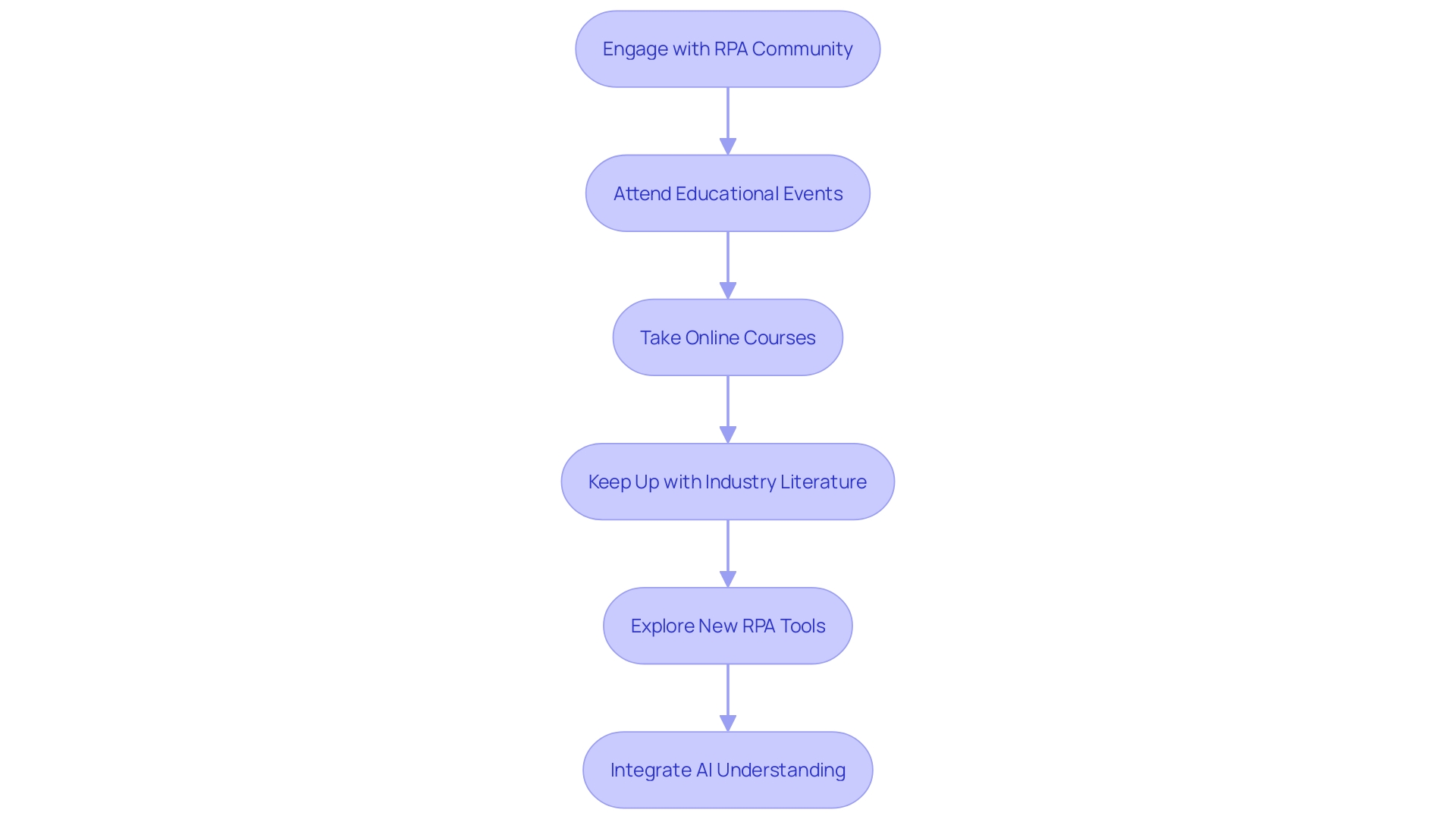
Building a Career as an RPA Developer
To establish yourself as a leading RPA developer, the key lies in blending technical prowess, industry knowledge, and a forward-thinking approach. Continuous self-improvement is critical; immerse yourself in the latest RPA tools and programming languages and commit to lifelong learning to keep your skills sharp and relevant.
Networking cannot be overstated; forge connections with fellow RPA experts, participate in industry gatherings, and engage in online forums. Such relationships can unlock new prospects and foster valuable collaborations.
Demonstrate your expertise through a well-crafted portfolio that displays your automation projects. Whether through case studies, live demos, or repositories on platforms like GitHub, let your work speak for itself.
Professional certifications are more than just accolades; they affirm your skills and bolster your presence in the competitive job market. Pursue certifications from esteemed organizations to stand out.
Adopt a philosophy of continuous improvement. Solicit feedback, learn from each project, and always aim to enhance your competencies. Staying adaptable and eager to learn will help you navigate the dynamic landscape of RPA.
RPA’s versatility across industries offers a unique opportunity to diversify your experience. Delve into various sectors to understand different business processes and how RPA can optimize them. Whether it’s using AI to manage a fleet of virtual digital assistants or employing Power Platform solutions to streamline data entry at mining sites, your ability to apply RPA creatively will set you apart.
As the robotics industry evolves, with a notable dip in sales following record highs, staying ahead means understanding the delicate balance between automating tasks and the irreplaceable value of human skills. Embrace the interplay between human and digital workforces to unleash full potential.
Remember, your career trajectory should not be left to chance. Start with the end in mind, mapping out the steps to your ultimate career goal. Analyze the paths of those who have succeeded before you, learning from their complete career narratives, including their trials and triumphs.
In this journey, data analysis skills are indispensable. Data analysts are the navigators of the tech world, their insights crucial to strategic decisions. The demand for these skills spans industries, with tech, healthcare, and retail leading the hiring trend.
In conclusion, your career as an RPA developer is a canvas. Paint it with continuous learning, professional networking, showcasing achievements, certifications, and an improvement-driven mindset. With this strategy, you will not only adapt to the industry’s currents but also steer your career towards success.
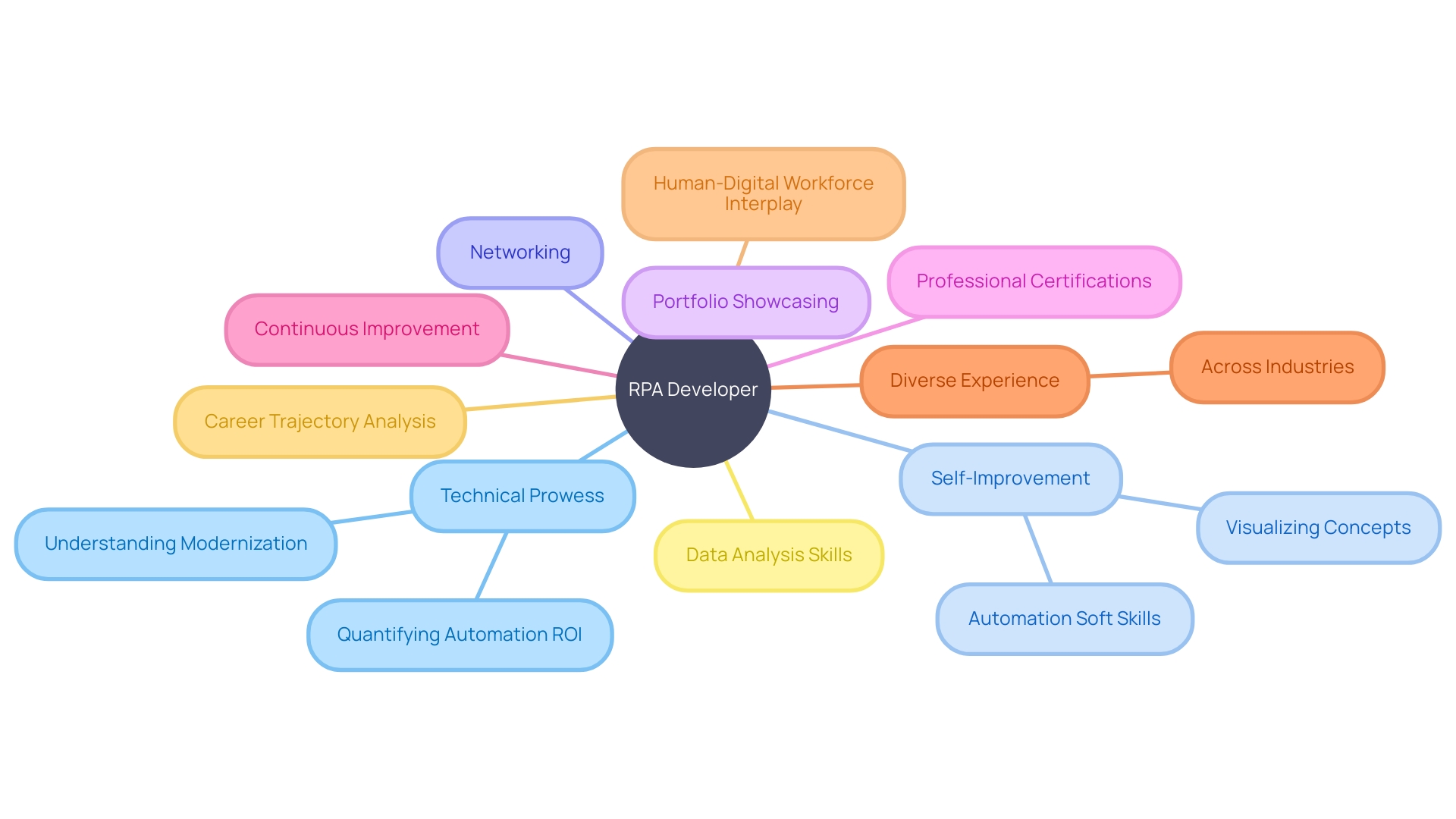
Conclusion
In conclusion, a career as an RPA developer offers numerous benefits and growth opportunities. RPA developers play a crucial role in driving business optimization and innovation through automated systems. With a commitment to continuous learning, RPA developers can master the tools that shape the future of automation.
Choosing the right RPA tools is essential for successful automation initiatives. Factors like functionality, scalability, ease of use, integration capabilities, and vendor support should be considered.
To become an RPA developer, focus on foundational concepts, programming languages, and hands-on practice. Collaboration on real-world projects and staying updated on industry trends through community engagement are crucial for professional growth.
Adhering to RPA development best practices, such as standardizing processes, designing modular solutions, and ensuring data privacy and security, can elevate the success of automation projects.
Advanced RPA techniques, such as cognitive automation and intelligent process automation, unlock new levels of efficiency and intelligence in automation, providing a competitive edge.
Managing organizational change with a strategic approach is crucial for successful RPA implementation. Engaging stakeholders, clear communication, and phased implementation are key strategies.
Ensuring governance and compliance in RPA initiatives is essential. Data privacy and security measures, audit trails, and documentation support compliance standards.
Continuous learning and staying updated through community engagement and educational events are vital for maintaining a competitive edge as an RPA developer.
Building a successful career involves continuous self-improvement, networking, showcasing achievements, and obtaining professional certifications.
In conclusion, a career as an RPA developer offers immense potential for growth and innovation. By embracing continuous learning, adhering to best practices, and staying updated on industry trends, RPA developers can navigate the dynamic landscape and steer their careers towards success.
Introduction
Robotic Process Automation (RPA) is an innovative technology that has revolutionized the way businesses streamline their operations. By automating repetitive and structured tasks, RPA enables organizations to optimize their time and resources, redirecting them towards more strategic initiatives. This article explores the power of RPA and its transformative impact in various industries.
From finance and accounting to human resources and customer service, RPA has proven to be a game-changer in enhancing operational efficiency. The article also delves into the different types of RPA bots and their unique capabilities, as well as the challenges and limitations that organizations may face during implementation. Additionally, it highlights the best practices for successfully implementing RPA and emphasizes the importance of ongoing human oversight.
Looking ahead, the article explores the integration of RPA with Artificial Intelligence (AI) and machine learning, envisioning a future where intelligent automation takes center stage in driving business success. By harnessing the power of RPA and embracing technological advancements, organizations can unlock a new era of operational excellence.
What is Robotic Process Automation (RPA)?
Harnessing the power of Robotic Process Automation (RPA), businesses can effectively automate a myriad of repetitive and structured tasks that once required manual effort. By deploying RPA software agents, organizations can entrust these digital assistants with functions such as data entry, extraction, and meticulous transaction processing. Capable of bridging disparate systems, these bots not only work tirelessly across various applications but also mirror human interactions with computer interfaces, thereby optimizing the time and resources that can be redirected to more strategic initiatives.
A study conducted by the Korea Institute of Machinery and Materials sheds light on the state-of-the-art AI technology that enables robots to understand user commands and independently perform actions in manufacturing environments. This progressive approach, leveraging Large Language Models and virtual environments, underscores the sophistication that RPA technology has achieved.
In practice, the transformative impact of RPA is demonstrated in case studies like that of Louvre Hotels Group. By implementing innovative RPA solutions, the group has realized significant operational efficiencies, notably saving hundreds of hours monthly by automating rate code maintenance tasks. Similarly, observations from professionals in the field of mechanization in a worldwide survey emphasize the simplicity with which RPA can be integrated into workflows, positioning it as a crucial tool in the modernization of business practices.
Beyond the technical capabilities, the strategic deployment of RPA requires due diligence. It is crucial to distinguish which processes are ready for mechanization and to recognize the inefficiencies that RPA can tackle. Leaders who meticulously choose workflows for RPA integration can unlock significant value, as demonstrated by the Department of Electronic & Electrical Engineering’s personal tutor system overhaul, which utilized automation to streamline administrative activities.
By embracing RPA, companies are not merely adopting a new technology; they are fostering a synergy between the human workforce and digital operatives. This harmonious collaboration enhances the strengths of each, ensuring that creativity and emotional intelligence are complemented by the precision and consistency of RPA robots, as advocated by experts in the field.
Key Benefits of RPA
Robotic Process Automation (RPA) has been a game changer for companies of all sizes, delivering impactful benefits that revolutionize operational efficiency. By strategically employing RPA, monotonous and recurring activities are shifted from human employees to automated systems, which can perform these functions with consistent accuracy and without getting tired. This shift not only curbs the incidence of errors that are typically associated with manual data handling but also paves the way for employees to engage in more complex, strategic roles that add significant value to the organization.
A compelling example of RPA’s transformative power can be seen at Delivery Hero, a global leader in local delivery services. The company grappled with a recurring issue of employees being locked out of their accounts—an obstacle that consumed roughly 35 minutes per incident to resolve. With an average of 800 such cases monthly, this translated into a considerable loss of productive work time. By harnessing RPA, the IT service delivery team effectively removed this bottleneck, allowing employees to maintain uninterrupted access to essential work tools and sustain productivity.
Similarly, St. James Winery, Missouri’s premier winery, recognized the potential of RPA to sustain its reputation for excellence. As the winery grew, the need for scaling operations became increasingly apparent. RPA provided a solution that could seamlessly evolve with the business, ensuring that customer inquiries were addressed swiftly and accurately, thereby bolstering customer satisfaction and loyalty.
When contemplating the integration of RPA into business processes, it is crucial to conduct a comprehensive analysis of the particular manual activities that are ready for automation. This pre-emptive approach ensures that the selected processes are optimized to yield the highest efficiency gains. Moreover, the introduction of RPA is not a one-off event but a progressive journey that requires continuous assessment and refinement to fully harness its capabilities.
The healthcare industry, too, has witnessed the profound impact of RPA. Leaders like Epic and Cerner have utilized RPA to manage vast troves of electronic health records, serving hundreds of millions of patients worldwide. This technological adoption has not only streamlined record-keeping but also contributed significantly to the companies’ growth and global reach.
In the current landscape, where operational agility and efficiency are paramount, RPA stands out as a critical tool that can elevate an organization’s productivity while concurrently reducing operational costs. The uninterrupted 24/7 work cycle that automation tools provide is unmatched, and when synchronized with strategic organizational goals, RPA can unlock a new horizon of operational excellence.
Types of RPA Bots
Robotic Process Automation (RPA) is revolutionizing the way organizations manage repetitive and time-consuming activities. With three main varieties of RPA robots, organizations can streamline their operations to achieve higher efficiency and productivity.
Unattended RPA bots are the workhorses of automation, designed to carry out activities without human intervention. They can be programmed to perform actions at predetermined times or in response to specific events. This kind of bot is especially efficient for managing high-volume assignments that are crucial yet repetitive, guaranteeing they are accomplished with accuracy and swiftness.
Attended RPA robots, conversely, act as digital aides to human employees. They are activated by user commands or can work in tandem with employees, providing on-demand support to enhance productivity and reduce the workload. These automated systems excel at aiding with responsibilities that necessitate a level of human judgment or involvement.
The third kind, Hybrid RPA robots, merges the independence of unattended robots with the interactive abilities of attended robots. They offer the flexibility to work independently or alongside humans, adapting to the varying needs of complex processes. This versatility makes them suitable for a wide range of tasks, allowing organizations to customize their strategies effectively.
Incorporating these bots into operational workflows can significantly impact efficiency. For instance, the Digital Service Team’s ‘digital-assurance process’ demonstrates how the use of technology can be implemented to streamline the evaluation of new technology requests, ensuring secure and compliant technology adoption. Likewise, OnCall Health by Qualifacts demonstrates the utilization of technology to oversee a variety of client forms, saving hours of manual effort.
Recent developments in technology, such as Ai’s role in UK train stations and the discussion around facial recognition at airports in the US, signal the growing integration of intelligent systems in various sectors. These advancements raise important discussions on ethical implications, privacy rights, and the need for human oversight in automated processes.
To stay competitive and future-proof their operations, organizations must consider collaborating with technology experts who can navigate the evolving landscape of business process streamlining. As the field of RPA continues to grow, it is essential for professionals to stay informed about the latest trends and tools. Reports like the State of the automation professional provide valuable insights into the experiences of experts in this field, highlighting the importance of continuous learning and development in this domain. Engaging with automation communities, such as the UiPath Community, can also offer support and opportunities for those looking to advance in the field of RPA.
As we harness the capabilities of RPA bots, it is crucial to understand their unique functions and applications to leverage their full potential. By doing this, organizations can optimize their processes, freeing up valuable human resources to concentrate on more strategic and creative activities.

How RPA Works
Robotic Process Automation (RPA) is a transformative technology that deploys software robots, or ‘bots’, to automate routine tasks within digital systems, mimicking actions that human users would perform. These bots are adept at navigating through systems, executing functions such as data entry, extracting and transferring information, auto-filling forms, and applying predefined logic to make decisions. The strength of RPA lies in its capacity to learn and replicate specific workflows, leading to its integration across various platforms and applications, optimizing operations that were once complex and manual.
When contemplating the adoption of RPA, it’s crucial to perform a comprehensive assessment to identify manual processes that are suitable for streamlining and to pinpoint inefficiencies that RPA could resolve. This strategic planning should include an evaluation of the time and financial investment needed for integrating RPA solutions for each process earmarked for implementation. In the healthcare sector, for example, the adoption of digital technologies, such as RPA, begins with a meticulous initial assessment to ensure that the technology aligns with the institution’s security, compliance, and functional criteria. This diligence in planning and assessing the viability of new technologies is critical to ensuring a successful RPA adoption.
The advancement of technological systems has brought about significant efficiency and productivity gains in various industries. However, it is crucial to remember that automation requires ongoing human oversight for monitoring, managing, and upgrading systems, including those powered by AI. As we utilize the capabilities of RPA, it is crucial to establish distinct goals, define measures of success, and acknowledge that, while RPA can manage a variety of activities, it still necessitates human direction to guarantee optimal performance and alignment with business objectives.
Recent advancements in blockchain technology offer an added layer of data integrity, allowing for the creation of an immutable audit trail. This ensures that the information processed by RPA bots is accurate, confidential, and backed by detailed metadata. Such technological synergy enhances RPA’s reliability and effectiveness, further solidifying its role as a critical component in modern-day business operations.
Applications of RPA
Robotic Process Automation (RPA) is transforming the way businesses operate across various sectors. In finance and accounting, RPA is revolutionizing the efficiency of tasks like processing invoices and compiling financial reports, addressing bottlenecks that have traditionally slowed down the financial cycle. Within human resources, the onboarding and offboarding of employees, along with payroll and benefits administration, are being streamlined through mechanization, allowing HR professionals to focus on more strategic initiatives.
In the realm of customer service, RPA stands as a powerful ally, handling routine inquiries and updates, thus freeing customer service representatives to tackle more complex issues that require a human touch. The supply chain and logistics sector is also reaping the benefits of RPA, with inventory management, order processing, and shipping operations becoming more accurate and less labor-intensive.
Healthcare, a critical industry with a dire need for efficiency and accuracy, is employing RPA for patient registration, claims processing, and managing medical records. The impact of RPA in healthcare is significant, with potential to reduce errors and improve patient care delivery.
These examples are a snapshot of RPA’s potential. For a successful RPA implementation, it is crucial to first identify processes that are ready for streamlining, consider the integration costs and time, and address the inefficiencies head-on. As showcased by M&T Bank’s adoption of Clean Code standards to ensure their software quality, and the NHS’s rigorous digital-assurance process, careful planning and compliance are essential to harness the full benefits of RPA while maintaining security and operational excellence.
Innovations in AI and automation are not just about efficiency but also about creating partnerships that enhance human capabilities. As the technological landscape continues to evolve, the strategic integration of RPA will be a cornerstone of successful and adaptable operations, as emphasized by industry leaders and affirmed by recent research.
Challenges and Limitations of RPA
Robotic Process Automation (RPA) is transforming the way businesses function by providing a pathway to automate routine and repetitive activities. However, it’s essential to recognize that not every task is a candidate for RPA. Tasks that hinge on human judgment, creativity, or subjective decision-making often fall outside the scope of RPA’s capabilities. For successful RPA adoption, organizations must critically evaluate their processes to identify which are most suitable for automation, focusing on those with inefficiencies that RPA can address effectively.
Ensuring that RPA robots operate within the bounds of data security and compliance is another vital aspect of governance. This requires a proactive approach to oversee the bots’ interactions with sensitive data. A blend of strategic planning and vigilant oversight can help mitigate risks, safeguarding both the integrity and security of an organization’s data ecosystem.
Integrating RPA into existing workflows may also necessitate alterations to current systems, which can be a complex endeavor. The experience of healthcare organizations implementing digital solutions serves as a valuable lesson. For instance, a ‘digital-assurance process’ is often employed to evaluate whether new technologies align with security standards and offer the needed functionality, preventing redundancies and ensuring compliance.
In the world of healthcare records management, for instance, companies like Epic EHR and Cerner have demonstrated how wide-reaching and impactful such digital modernization can be, with Epic managing over 60% of electronic health records in the United States and Cerner’s systems being utilized in over 27,000 healthcare facilities globally.
The journey toward embracing RPA and Intelligent Automation (IA) is a continuous one, marked by the evolution of technology. As pointed out by industry professionals, it’s not just about the implementation of mechanization, but also about the continuous management, monitoring, and improvement of these systems. Collaborating with innovative technology companies that provide comprehensive services, such as blockchain development, can enhance security and transparency, guaranteeing that the journey towards efficiency is also focused on strategic innovation and resilience.
Best Practices for Implementing RPA
For those looking to harness the transformative power of Robotic Process Automation (RPA), certain best practices can position your organization for success.
Start by pinpointing processes that are prime for RPA—those that are repetitive, rule-based, and involve high transaction volumes. This foundational step is crucial for targeting the areas where mechanization can have the most significant impact.
The synergy between departments is key. Engaging stakeholders from various teams ensures a more holistic understanding of the processes and promotes a smoother implementation. Their input can be invaluable in improving the strategy for automated processes.
Setting clear objectives and quantifiable targets is another critical component. Specify your objectives with RPA and set measurements to monitor the achievement and influence of your RPA endeavors. This clarity will guide your journey and help gauge your progress.
A pilot project can serve as a valuable testing ground. Begin with a small-scale implementation to test the waters and collect feedback. This feedback loop is essential for refining your approach and enhancing the RPA solution.
Lastly, it’s important to support your workforce through this change. Sufficient training and support are essential to aid employees in adjusting to and accepting RPA, decreasing opposition and unleashing the complete potential of technological automations.
With careful planning and adherence to these best practices, your RPA initiatives can lead to increased accuracy, efficiency, and productivity, much like the digital-assurance process adopted by the NHS’s Digital Service Team, ensuring security, appropriateness, and compliance.
According to the CTO and Co-Founder of Reveille Software, while RPA can significantly boost business operations, it requires ongoing human oversight for stability. This viewpoint is reflected by industry reports, which highlight that career advancement opportunities within the field of technology are expanding, with communities like UiPath’s playing a crucial role in this growth.
In conclusion, adopting RPA is not just about the technology—it’s about thoughtful preparation, collaboration, and continuous learning. These practices will help organizations not only implement RPA successfully but also maintain and evolve their technological capabilities over time.

Future of RPA: Integration with AI and Machine Learning
Intelligent automation represents the next frontier in the business landscape, combining Robotic Process Automation (RPA) with Artificial Intelligence (AI) to elevate operational capabilities. Organizations that harness this potent synergy can automate intricate cognitive activities and processes that exceed mere rule-based actions. With a focus on enhancing customer relationships, RPA can expedite responses and ensure accurate information delivery, fostering satisfaction and loyalty among clients. By adopting a strategic approach that starts with smaller, manageable tasks, businesses can gradually tackle more intricate workflows, enhancing scalability and efficiency. Continuous monitoring and documentation of results not only help in meeting objectives but also provide valuable insights for future initiatives. As technology progresses, building a comprehensive collection of tools becomes essential for supporting intelligent processes, enabling businesses to navigate the digital transformation journey successfully. Furthermore, the incorporation of AI with automated platforms brings context to decision-making, empowering knowledge workers with the ability to execute purposeful actions and produce noteworthy results. This fusion of technologies is not just theoretical; real-world applications have demonstrated the transformative impact of intelligent automation, such as the streamlined content summarization process using AI features in Adobe Acrobat Pro. As we look to the future, the convergence of RPA, AI, and machine learning is poised to revolutionize industry practices, making businesses more agile, informed, and customer-centric.
Conclusion
In conclusion, RPA has revolutionized business operations by automating repetitive tasks and optimizing resources. It has proven to be a game-changer in enhancing operational efficiency across industries like finance, accounting, HR, and customer service.
Different types of RPA bots, including unattended, attended, and hybrid bots, offer unique capabilities to handle high-volume tasks, provide on-demand support, and adapt to complex processes. This streamlines operations and improves efficiency.
While RPA offers numerous benefits, there are challenges to consider. Not every task is suitable for automation, and careful evaluation is necessary. Data security and compliance require proactive oversight.
To successfully implement RPA, organizations should follow best practices such as targeting processes ripe for automation, engaging stakeholders, setting clear objectives and metrics, conducting pilot projects, and supporting the workforce through change.
The integration of RPA with AI and machine learning holds great potential. This intelligent automation can automate complex cognitive tasks and enhance customer relationships. Creating a comprehensive library of tools becomes crucial for successful automation and navigating the digital transformation journey.
In conclusion, by harnessing the power of RPA and embracing technological advancements, organizations can unlock operational excellence. The strategic integration of RPA, AI, and machine learning will revolutionize industry practices, making businesses agile, informed, and customer-centric. With thoughtful preparation, collaboration, and continuous learning, organizations can successfully implement and evolve their automation capabilities.
Introduction
AI consulting services are playing a crucial role in today’s rapidly evolving business landscape, where companies must adapt to stay competitive. From optimizing marketing across multiple languages to enhancing guest satisfaction through automated communication channels, businesses are turning to AI consultants to address their unique challenges. These consultants meticulously analyze existing operations, identifying pain points and opportunities where AI can make the most impact.
By developing customized strategies and fostering an engineering culture of innovation, AI consultants empower organizations to leverage AI for operational efficiency and growth. The goal is to position AI as a cornerstone of a company’s excellence and customer satisfaction. In this article, we will explore the role of AI consultants, the importance of designing an AI strategy, the implementation of AI solutions, successful case studies, overcoming challenges, and future trends in AI consulting.
Understanding the Business Landscape
AI consulting services play a pivotal role in the modern commercial environment, where companies must adapt to rapidly evolving technologies to stay competitive. A prime example of this is the integration of AI into various operational sectors. For instance, at Holiday Extras, a European travel extras provider, the challenge was to manage marketing across multiple languages and ensure data literacy among non-technical employees. Similarly, Leonardo Hotels needed to enhance guest satisfaction by optimizing communication channels and automating responses to frequently asked questions.
To tackle these operational challenges, AI consultants start by carefully examining the organization’s current operations and identifying areas suitable for AI intervention. This deep dive into the company’s processes is critical for uncovering specific pain points and opportunities where AI can deliver the most impact. For instance, generative AI, which has made significant progress in public awareness in the past few years, has the potential to transform how companies like Holiday Extras and Leonardo Hotels engage with customers and handle internal operations.
The roadmap to AI success involves developing customized strategies that resonate with the company’s unique challenges and objectives. In 2023 alone, the landscape witnessed a surge in AI adoption across multiple functions, such as document processing and customer self-service, highlighting the trend towards automation. Moreover, Ipsos’s research indicates the significance of building a robust AI roadmap based on evidence-based best practices, which is essential for realizing value from AI investments.
The journey towards AI transformation is not just about technology implementation; it’s about building an engineering culture that fosters innovation and creates a competitive advantage. CEOs are increasingly recognizing the significance of using software to establish new avenues that go beyond mere commodities. As such, AI consulting services must empower organizations to leverage AI in ways that truly enhance operational efficiency and drive growth, as underscored by the AI and automation action guide with its 11-point blueprint for optimizing intelligent automation.
In summary, the role of AI consultants is to guarantee that AI initiatives are not only in line with the organization’s vision but also establish the organization as a dominant force in markets effectively. By doing so, AI can transcend being a buzzword and become a cornerstone of an organization’s operational excellence and customer satisfaction.
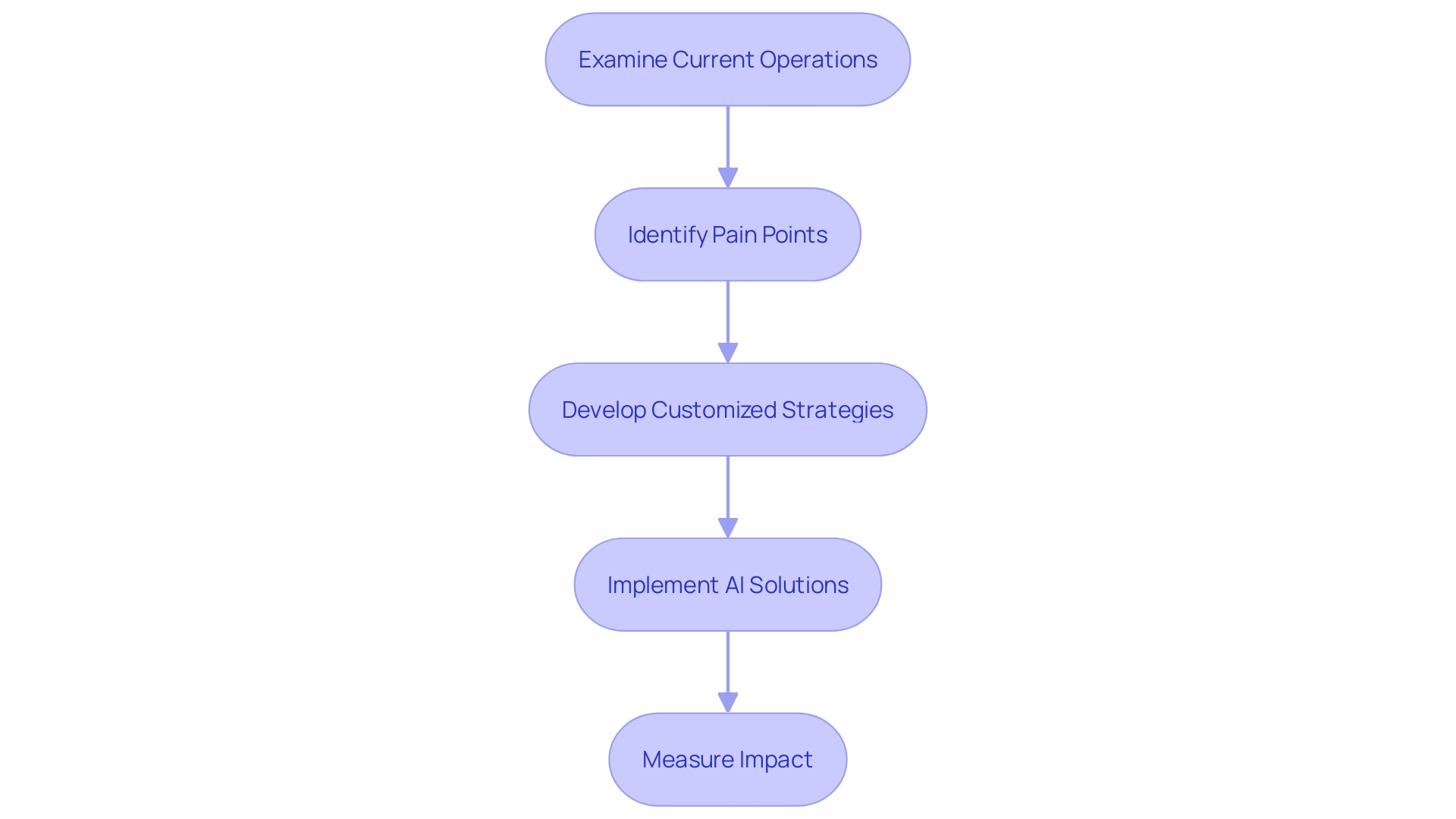
Designing an AI Strategy
To leverage the transformative power of Artificial Intelligence (AI), it is crucial for organizations to build a strategic roadmap tailored to their distinct objectives. AI consultants play an integral role in this endeavor, meticulously aligning AI initiatives with a company’s vision to unlock maximum potential. This procedure starts with a specific identification of sectors within the organization that have the potential to benefit greatly from AI integration. Subsequently, the prioritization of AI use cases is methodically based on their projected impact, ensuring that the most significant areas are addressed first.
In the pursuit of AI excellence, it’s not just about having cutting-edge technology; it’s about having the right technology that speaks to the specific needs of the business. As indicated by recent industry surveys, the primary determinant for AI success is a well-defined strategy that’s informed by a comprehensive understanding of the information availableâencompassing everything from internal communications to customer interactions.
Furthermore, having a transparent set of objectives and key milestones paves the way for measurable progress and quantifiable achievements in the AI journey. It’s about feeding the ‘AI beast’ the appropriate information and knowing how to harness it effectively. This requires a critical assessment and, if necessary, an enhancement of the existing data infrastructure to ensure it’s ready for the sophisticated demands of machine learning and deep learning models.
As we stand at the crossroads of technological innovation, it’s also essential to recognize the distinction between general-purpose AI models and specialized AI models. While the former offers versatility, the latter provides in-depth insights within specific domains, allowing organizations to maintain tighter control and bolster security. This differentiation underscores the importance of selecting AI solutions that not only advance current operational capabilities but are also scalable and flexible enough to evolve with the company’s growth.
By working together with AI experts who have a thorough grasp of industry-specific obstacles and a dedication to creativity, enterprises can confidently navigate the AI terrain. Such a collaboration guarantees the smooth incorporation of AI into the fabric of the organization, revolutionizing operations and fostering unparalleled efficiency and productivity.
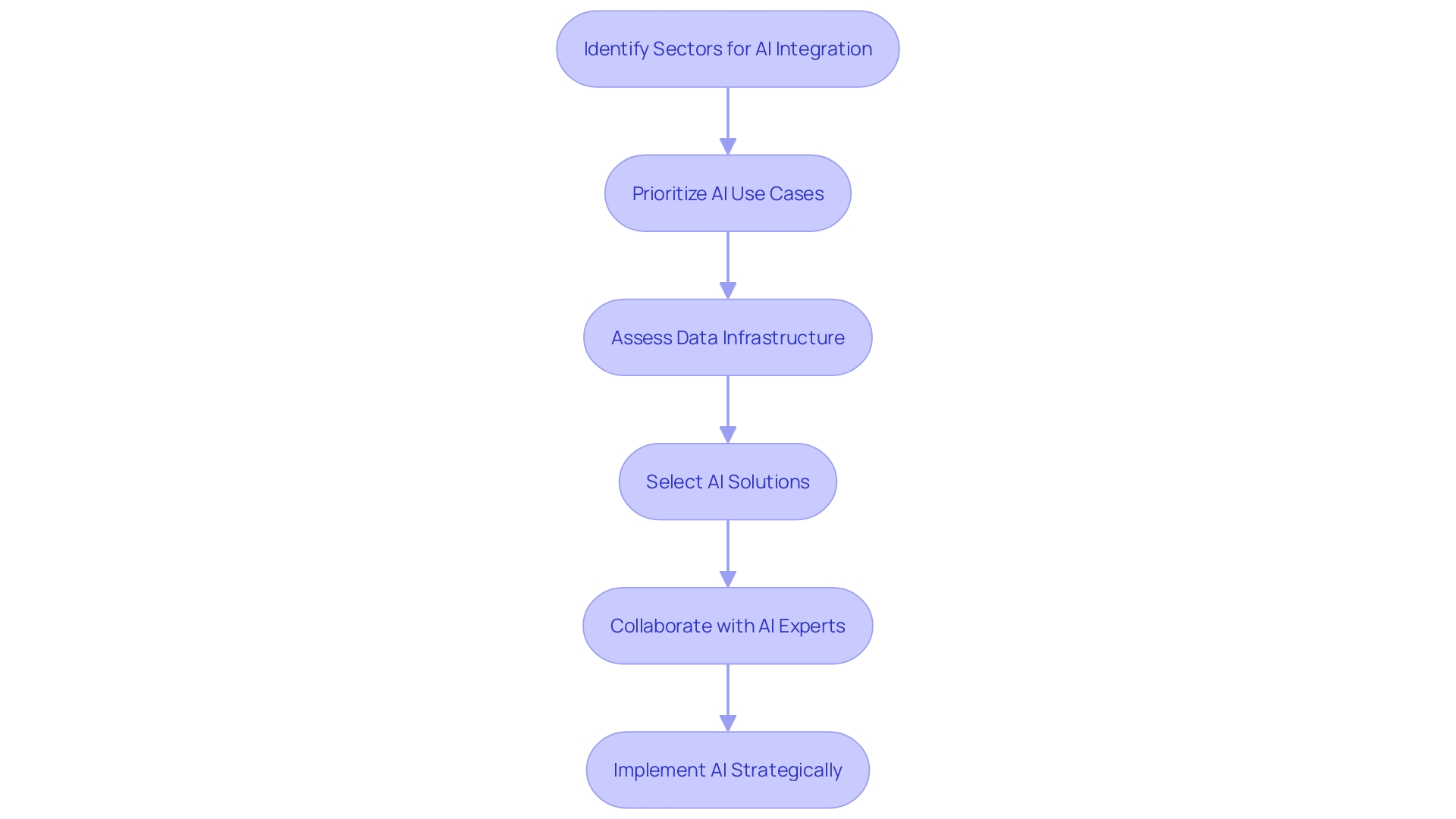
Implementing AI Solutions
AI advisors act as guides for enterprises exploring the domain of artificial intelligence, directing them through the intricacies of adoption and integration. This journey starts with a comprehensive analysis of the organization’s current operations, market conditions, and existing technological infrastructure, as outlined in our in-depth assessments. During this procedure, AI experts recognize strategic chances where AI can enhance growth and effectiveness, particularly in domains like automating customer interactions or streamlining order processing systems.
After identifying the strategic areas, the role of the specialist transforms into developing a customized AI strategy that is in line with the organization’s long-term goals. The strategy encompasses a detailed roadmap, complete with key milestones, resource planning, and performance indicators, ensuring that the AI initiatives are not only successfully launched but also sustainable in driving business value.
The hands-on support from AI experts is crucial during the implementation phase, where they assist in selecting the suitable AI tools and technologies customized to the company’s needs. They provide guidance in sourcing relevant data sets and constructing robust AI models that yield precise and actionable insights. A case in point is the integration of AI in a restaurant’s drive-through service, which showcases how voice assistants can enhance operational efficiency and customer satisfaction.
Moreover, AI advisors play a crucial part in promoting an AI-focused culture within the organization. They facilitate the transition to AI-powered processes by offering training and ongoing support to employees, helping them adapt to new workflows and embrace the technological shift.
Through vigilant monitoring and optimization of AI systems, AI consultants ensure that organizations not only embrace AI but also harness its full potential to achieve tangible results. Their expertise is instrumental in transforming traditional business processes and catalyzing an era of smarter, AI-driven operations.

Case Studies: Successful AI Transformations
Exploring the transformative power of AI in healthcare, we delve into an innovative algorithm designed to predict patient deterioration. This AI model continuously monitors a plethora of information points, including vital signs and lab results, to calculate a risk score indicating the likelihood of a patient’s health decline. The system operates discreetly in the background, issuing alerts to the care team if a potential issue arises. This predictive capacity has profound implications, fostering stronger communication channels and contributing to a more resilient healthcare system in high-pressure scenarios.
One such success story involves a multidisciplinary team including Lisa Shieh, MD, PhD, clinical professor of medicine; Margaret Smith, director of operations for primary care and population health; and Jerri Westphal, nursing informatics manager, who led the deployment of this AI system. Their efforts underscore the critical role AI plays in enhancing patient care and safety.
In the broader industry context, companies like Rejoy Health and Anterior are making strides with AI-driven healthcare solutions. Rejoy Health’s use of proprietary large language models (LLMs) exemplifies how AI can streamline medical information processing, saving healthcare professionals up to 14 hours per month in information searches. Anterior stands out for integrating clinicians into its AI development teams, addressing staffing shortages and reducing administrative burdens.
Furthermore, the emergence of platforms employing large language models to assist with health insurance appeals demonstrates Ai’s potential to demystify complex processes, empowering patients to advocate for their rights.
The integration of AI technologies, including big information and machine learning, is revolutionizing digital health, signaling a shift towards a more efficient, intuitive, and resilient healthcare system. As evidenced by an 88 percent potential impact recognition among health system executives, AI remains a critical investment priority, despite a current investment gap. The ongoing research and development in this field continue to pave the way for improved healthcare services, as the industry strives to meet the evolving needs of clinicians, patients, and their families.
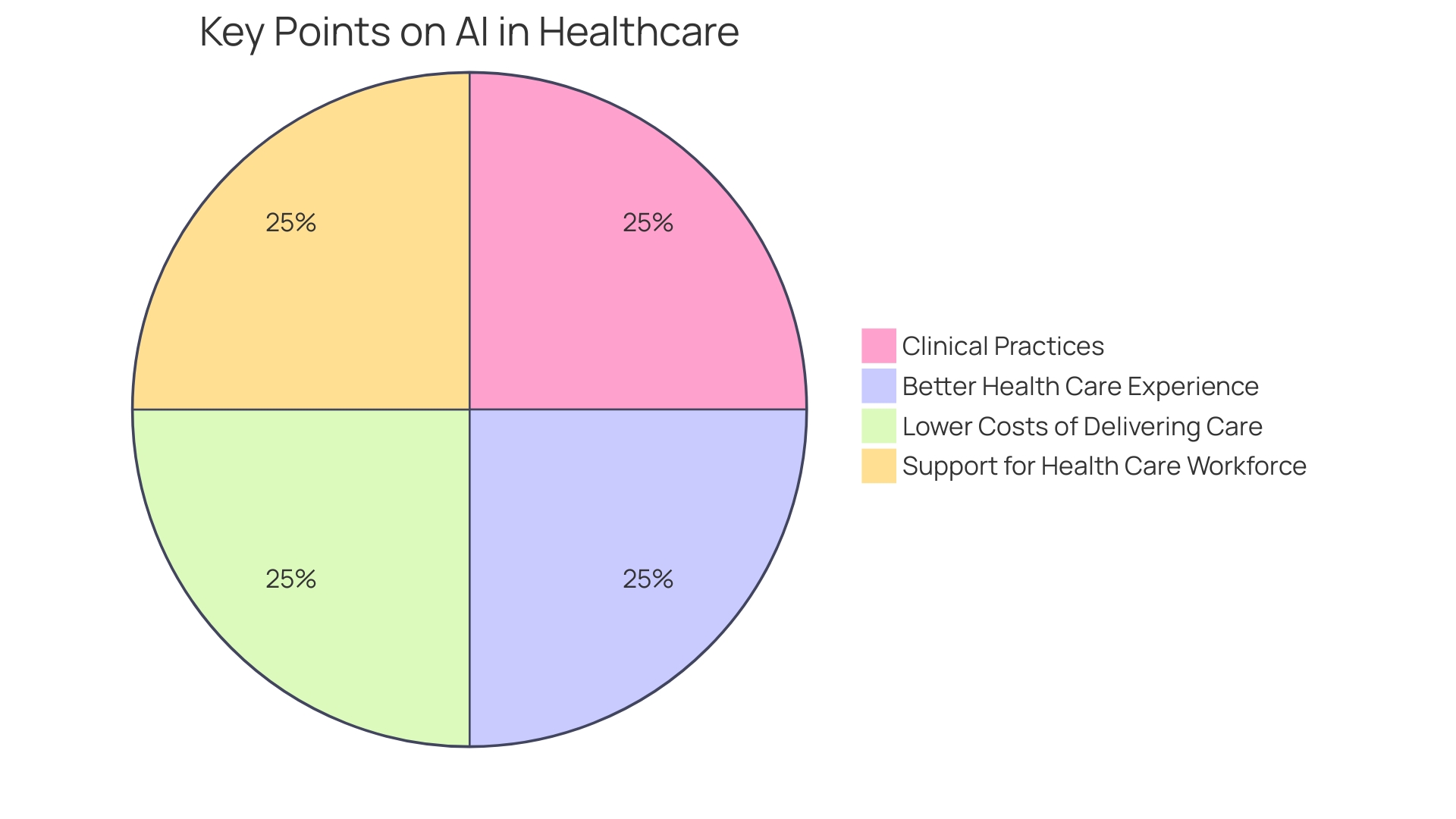
Overcoming Challenges
Navigating the complexities of AI implementation can be daunting, but experts in AI have developed a toolkit of strategies to address these challenges head-on. Issues such as ensuring information accuracy and availability are common roadblocks. AI experts frequently employ data augmentation methods and synthetic data generation to enhance datasets where information might be scarce due to collection costs or rarity of events. Ethical considerations also play a critical role, as AI applications should be developed with a keen awareness of their potential societal impact.
A case in point is the innovative use of AI by an elite athlete with a vision impairment, where technology not only aids in personal navigation but also expands possibilities for competitive sports. This underscores the importance of incorporating AI ethics and user-centric design from the outset. Furthermore, the exponential expansion of AI research, with publications in the domain increasing twofold about every 23 months, emphasizes the necessity for AI experts to uphold a comprehensive understanding and forecast forthcoming patterns, as demonstrated by tools like Science4Cast.
Resistance to change is another significant hurdle, but by drawing on successful case studies, such as health systems that have reduced inpatient mortality through innovation competitions, AI experts can demonstrate tangible benefits and foster a culture of acceptance. They provide insights into Ai’s diverse applications, from advancing scientific research to optimizing organizational operations, and guide organizations in embracing AI not as a threat, but as a catalyst for innovation and efficiency. By utilizing their expertise, AI consultants help organizations overcome these challenges and effectively utilize the power of AI.
Future Trends in AI Consulting
AI consulting services are increasingly vital, especially as AI technology matures and integrates seamlessly with other disruptive technologies like blockchain and IoT. Notably, the emergence of generative AI models, such as OpenAI’s ChatGPT, marks a significant shift in the industry. These models have the extraordinary ability to produce new, intelligent content and analyze vast datasets efficiently, thereby transforming how consulting services are delivered. For instance, Leonardo Hotels leveraged AI to enhance guest experiences and streamline communications, showing the potential of AI to drive operational excellence in the hospitality sector. Similarly, businesses can utilize AI consulting to address complex issues, ranging from predictive maintenance to fraud detection, and to develop ethical, privacy-conscious AI strategies. With the Asia-Pacific region rapidly adopting AI, fueled by industrial growth and supportive policies, and as digital transformation becomes a necessity post-pandemic, staying informed about AI trends is crucial for maintaining a competitive edge and embracing innovation.
Conclusion
AI consulting services are essential for businesses in today’s rapidly evolving landscape. These services enable companies to leverage AI for operational efficiency and growth. By analyzing current operations, AI consultants identify pain points and opportunities where AI can make the most impact.
They develop customized strategies and foster an innovative engineering culture to position AI as a cornerstone of excellence and customer satisfaction.
Designing an AI strategy is crucial for businesses to harness the transformative power of AI. AI consultants align AI initiatives with the company’s vision and prioritize use cases based on their projected impact. A clearly defined strategy, informed by a robust understanding of data, is essential for AI success.
Transparent objectives and key milestones ensure measurable progress.
Implementing AI solutions requires the guidance of AI consultants who navigate the complexities of artificial intelligence. They analyze current operations, market conditions, and technological infrastructure to identify strategic opportunities for AI integration. AI consultants craft bespoke strategies and assist in choosing the appropriate AI tools and technologies.
They also foster an AI-centric culture within the organization.
Successful case studies highlight the transformative power of AI in various industries. AI algorithms predict patient deterioration in healthcare, contributing to a more resilient healthcare system. Companies like Rejoy Health and Anterior streamline processes and integrate clinicians into AI development teams.
AI consultants overcome challenges in AI implementation by addressing data quality and availability through techniques like data augmentation. Ethical considerations are crucial, and AI applications should be developed with awareness of their societal impact. Demonstrating tangible benefits and drawing on successful case studies helps overcome resistance to change.
Future trends in AI consulting are driven by the maturing AI technology and its integration with disruptive technologies like blockchain and IoT. Generative AI models transform how consulting services are delivered. AI consulting services remain vital as the Asia-Pacific region adopts AI rapidly and digital transformation becomes a necessity.
In conclusion, AI consulting services empower businesses to leverage AI for operational efficiency and growth. Partnering with AI consultants positions AI as a cornerstone of excellence and customer satisfaction.
Introduction
The lending industry is undergoing a significant transformation with the adoption of automated loan and mortgage solutions. These innovative systems leverage artificial intelligence and machine learning to streamline processes and enhance operational efficiency. From loan origination to borrower management, these solutions offer practical and empowering solutions to the challenges faced by the Director of Operations Efficiency.
By automating tasks such as data collection, document management, and payment processing, lenders can reduce manual errors, expedite loan processing, and improve customer experience. Furthermore, the integration of advanced analytics and seamless integrations with other systems empower lenders to make informed decisions, manage risks effectively, and stay competitive in a dynamic financial landscape. With the potential to automate up to 80% of financial operations, embracing these automated solutions is not just a technological upgrade but a strategic move towards inclusivity, efficiency, and a better customer experience in the lending process.
Understanding Loan Boarding and Origination
The lending initiation process is a crucial stage in lending, involving the thorough gathering and examination of borrower data to initiate a loan. This procedure, traditionally fraught with manual tasks like verifying personal details, collating financial documents, and assessing creditworthiness, is now being revolutionized by automated systems. These systems employ artificial intelligence and sophisticated algorithms to automate the data collection, validation, and analysis steps, ensuring an efficient and accurate handling of voluminous loan applications. This automation not only curtails manual errors but also expedites the entire origination process.
Cutting-edge companies like Moody’s Analytics and Numerated are leading the way, providing their expertise in risk management and technology to streamline operations. These industry leaders provide sophisticated tools that enhance customer experience and bolster the confidence of organizations across the globe. Numerated’s digital business lending solutions, for instance, have been instrumental in redefining the lending landscape, facilitating convenience for borrowers and efficiency for banks and credit unions alike.
Despite the perception that monetary departments are already automated, Shagun, an ex-Fortune 100 auditor and CEO of System, highlights a different reality. Citing a study by Accenture, Shagun points out that an astonishing 80% of financial operations could be automated. This transformation has the potential to release a substantial chunk of employee time from routine tasks, redirecting focus towards strategic initiatives and customer satisfaction.
The lending industry is currently addressing biases and intricacies within its operations. Augmented intelligence, which combines AI technology with human expertise, is a critical approach to enhance decision-making and improve inclusivity. By simplifying the intimidating procedures and documentation requirements, these technologies are edging the industry closer to fairness and efficiency.
Furthermore, workflow automation is gaining traction within businesses seeking to gain better visibility and control over their operations. Data indicates that a majority of companies are advancing their automation procedures, with more than half anticipating a ROI within one year of execution.
Essentially, the implementation of automated lending and mortgage systems is not only a technological enhancement but also a strategic shift towards inclusiveness, effectiveness, and an improved customer journey in the lending procedure.
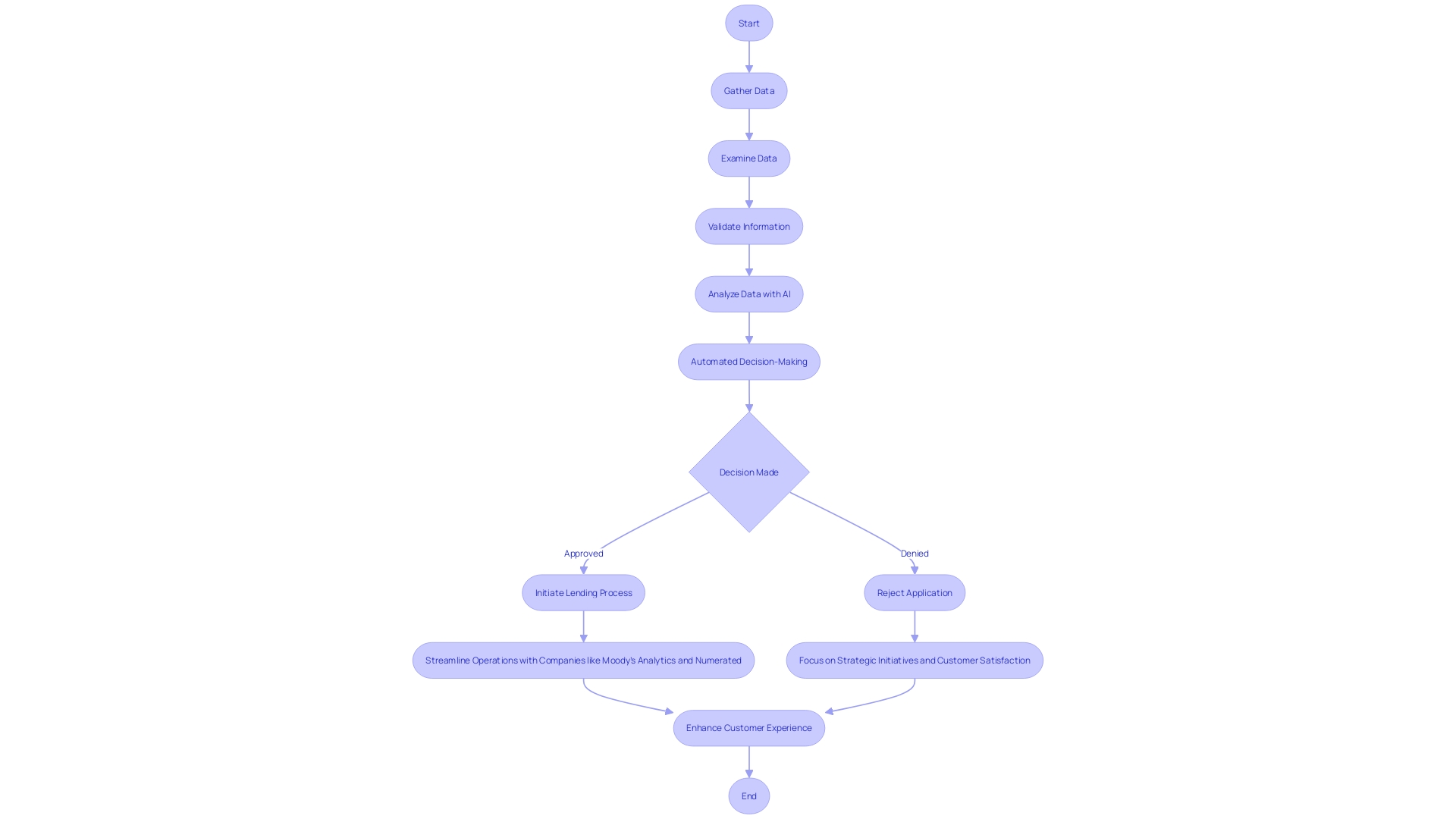
Document Management and Electronic Storage
The lending landscape has witnessed a remarkable transformation, reminiscent of the historical evolution of record management. From the meticulous papyrus scrolls of ancient Egyptians to the organized tabularia of the Romans, the preservation of documents has been crucial across eras. In modern times, the surge in document volumes has led organizations to seek the expertise of third-party archival services for secure record management, a trend yet to fully take root in markets like China.
As we delve into the realm of document automation, the narrative unfolds a technological metamorphosis. It began with the inception of word processors in the late 20th century, rudimentary yet groundbreaking in introducing digital document creation. The rise of personal computers further propelled the movement, with software such as Microsoft Word revolutionizing document editing and creation capabilities.
The 1990s and 2000s brought the advent of templates and macros, tools that enabled the creation of standardized documents and the automation of repetitive tasks. These innovations significantly minimized manual efforts and paved the way for enhanced operational workflows.
Document automation now stands as a pivotal tool in various industries, including legal, banking, and government sectors. It offers a plethora of functionalities such as Optical Character Recognition (OCR) for converting text images into machine-readable formats, data extraction for pinpointing relevant information, and document classification to organize documents efficiently. These capabilities, powered by artificial intelligence (AI), machine learning (ML), and natural language processing (NLP), are reshaping the way organizations manage their documents.
The impact of document automation is particularly evident in the case of Europris, Norway’s leading discount retail chain. By automating their central warehouse, they have not only consolidated their operations but have also set a precedent for future growth and efficiency.
Automated lending solutions are leading the way in this revolution in the lending process, providing secure document management and electronic storage. They allow for fast access and retrieval of documentations, significantly reducing delays and the risks associated with physical paperwork. As such, lenders can now enjoy an operational efficiency that mirrors the historical significance of meticulous record management, fueling a new era of precision and productivity in the lending industry.

Automating the Handoff and Approval Process
In the core of the lending sector, the collaboration between underwriters, appraisers, and officers is crucial during the application review and approval stages. Traditionally inundated with manual processes, this phase has often been bogged down by inefficiencies, susceptibility to human error, and a glaring lack of transparency. However, the arrival of automated mortgage and lending options has completely transformed this field. These innovative systems are designed to automate the workflow, enabling stakeholders to collaborate effortlessly. Task assignments become automated, document sharing is facilitated with ease, and stakeholders are kept informed with real-time status updates of the processing stages.
Utilizing Intelligent Document Processing (IDP), these solutions harness artificial intelligence and machine learning to process and extract critical information from a myriad of documents—structured, semi-structured, or unstructured. This not only accelerates the decision-making cycles but also curtails the ongoing expenses tied to manual workflows. The result is a substantial uptick in productivity and responsiveness, empowering organizations to harness the power of data analytics for innovation.
Moreover, the automation of such systems transcends beyond mere efficiency. As exemplified by Dark Matter Technologies, the integration of cutting-edge AI technology in loan origination is setting a new industry standard, ensuring that monetary operations are not left behind in the automation revolution. Accenture has emphasized that around 80% of monetary operations can be automated, potentially freeing up a substantial portion of employee time to be redirected towards strategic initiatives and improving customer satisfaction.
Fundamentally, the modernization of the approval mechanism through automation is not only a privilege—it’s a strategic necessity for lending institutions aiming to improve their operations and remain competitive in a dynamic economic environment.

Borrower Management and Communication
Establishing enduring connections with clients and streamlining the lending process are vital elements in the industry. Automated mortgage and lending systems are changing the manner in which lenders engage with borrowers by providing centralized platforms that combine essential data such as contact information, previous borrowing experiences, and detailed communication records. These innovative systems facilitate consistent and personalized communication by utilizing templates for emails, setting up automatic reminders, and sending tailored notifications, which not only boosts engagement but also significantly cuts down the response time—a crucial factor that can make or break customer retention, as evidenced by Hiscox’s experience where rapid responses were linked to higher customer satisfaction and retention.
Moreover, the adoption of automation in financial operations, as highlighted by Shagun of SkyStem, presents an untapped potential to revolutionize the sector with an estimated 80% of financial tasks being automatable. This transition frees up valuable time for teams to concentrate on strategic initiatives and enhancing customer experiences. Artificial intelligence and machine learning are spearheading this change by offering actionable insights and identifying patterns and risks in consumer data that were previously overlooked, thus enabling more informed and agile credit decisions.
Borrowers too are empowered through these automated solutions; they’re provided with user-friendly online portals where they can effortlessly access loan details, make payments, and upload necessary documents. This reflects a shift towards a more self-sufficient and informed borrower experience, as noted by industry experts like Sandra Madigan, who emphasize the importance of a streamlined yet connected journey in the home buying process. The digital tools are designed to educate and provide a holistic view of homeownership costs, supporting borrowers in making better financial decisions.
In an era where a single negative customer service experience can deter potential business, it’s essential to recognize the impact of automation in maintaining high service standards. As Guilherme Batista from Hiscox points out, sustainable growth and operational efficiency are achievable goals through the integration of automation strategies, which not only enhance the customer experience but also alleviate the workload on service agents, setting a path for businesses to thrive without proportionally increasing operating expenses.
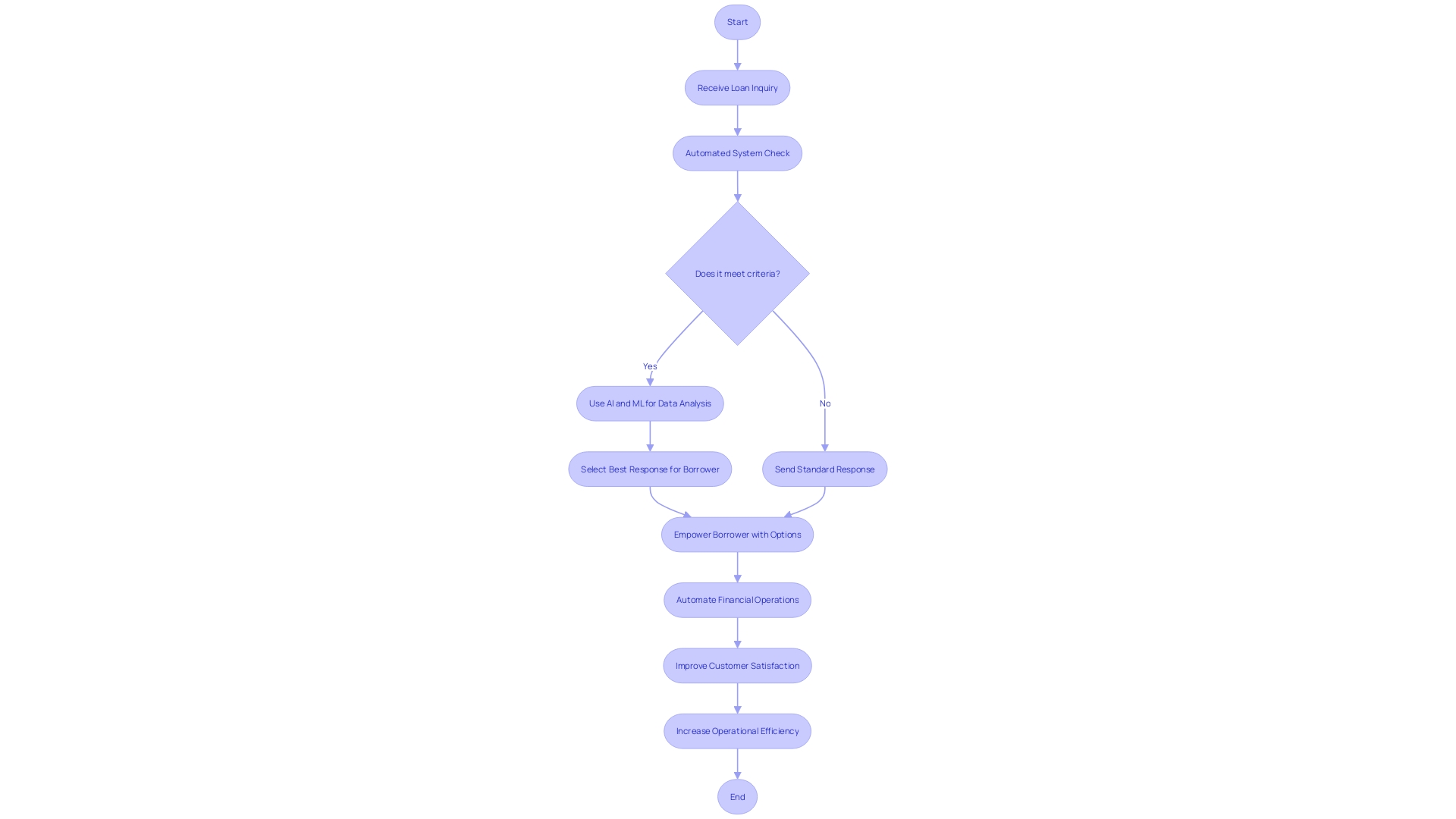
Performance and Risk Ratings through Analytics
Lenders today face the critical challenge of evaluating lending performance and managing risk with speed and accuracy. Traditional risk assessment methods, often hinged on manual analysis, are not only slow but also prone to errors. Modern automated loan systems, however, are transforming this landscape by utilizing the power of analytics and artificial intelligence. These advanced systems provide real-time insights by analyzing a multitude of data points such as credit scores, payment histories, and market trends, delivering precise risk assessments and predictive performance models.
One standout example is the nCino platform, which offers a cloud-based commercial banking offering that enhances customer engagement whilst driving efficiency, transparency, and compliance. Endorsements from industry leaders like the Global Head of the Corporate and Investment Bank underscore its ability to simplify workflows and bolster operational resilience. Similarly, Moody’s Analytics has been recognized for its comprehensive solutions that ensure customer confidence and meet organizational needs.
The transformative impact of artificial intelligence in the lending space is further evidenced by Numerated’s digital business lending platform. It utilizes data analytics for streamlined loan originations and underwriting, greatly expediting the lending procedure for financial institutions and their clients. Such technology not only accelerates operations but also offers a more personalized customer experience, as noted by MIT’s publication on machine learning’s role in enabling computers to learn and make informed decisions over time.
Furthermore, the integration of AI in various sectors, including UK public transport and the TSA’s facial recognition program in the US, indicates a growing trend in operational efficiency. Despite potential concerns around privacy and ethical implications, the successful application of AI in these areas hints at its vast potential in streamlining processes and managing risks effectively.
In the lending sector, adopting these cutting-edge automated systems results in making better-informed choices, decreasing the chances of nonpayment, and optimizing lending portfolios. With the added assurance of robust data privacy measures, lenders can confidently move towards a future where business growth and customer satisfaction are both achieved with remarkable efficiency.
Fee Automation and Invoicing
Automating loan and mortgage solutions transforms the traditionally labor-intensive tasks of fee management and invoicing. By utilizing technology, these platforms can effectively handle various fee structures such as origination fees, late fees, and prepayment penalties with accuracy and minimized risk of human error. This not only streamlines the lending process but also ensures timely and accurate billing, enhancing customer satisfaction—a critical factor given that half of customers may shy away from businesses that are slow to respond, as noted in Hiscox’s service model revamp. Furthermore, an automated system is capable of monitoring payment statuses, thus facilitating a more seamless monetary experience. As expressed by Shagun, CEO of System, while automation has become commonplace in consumer monetary transactions, its application within organizational finance departments remains restricted. Nevertheless, with 80% of financial operations ripe for automation according to Accenture, adopting AI and ML can profoundly free up resources for strategic initiatives. This shift is particularly pertinent in the face of a contracting European SME financing landscape, where automation can significantly bridge the widening funding gap for asset-light and cash conversion-challenged businesses.
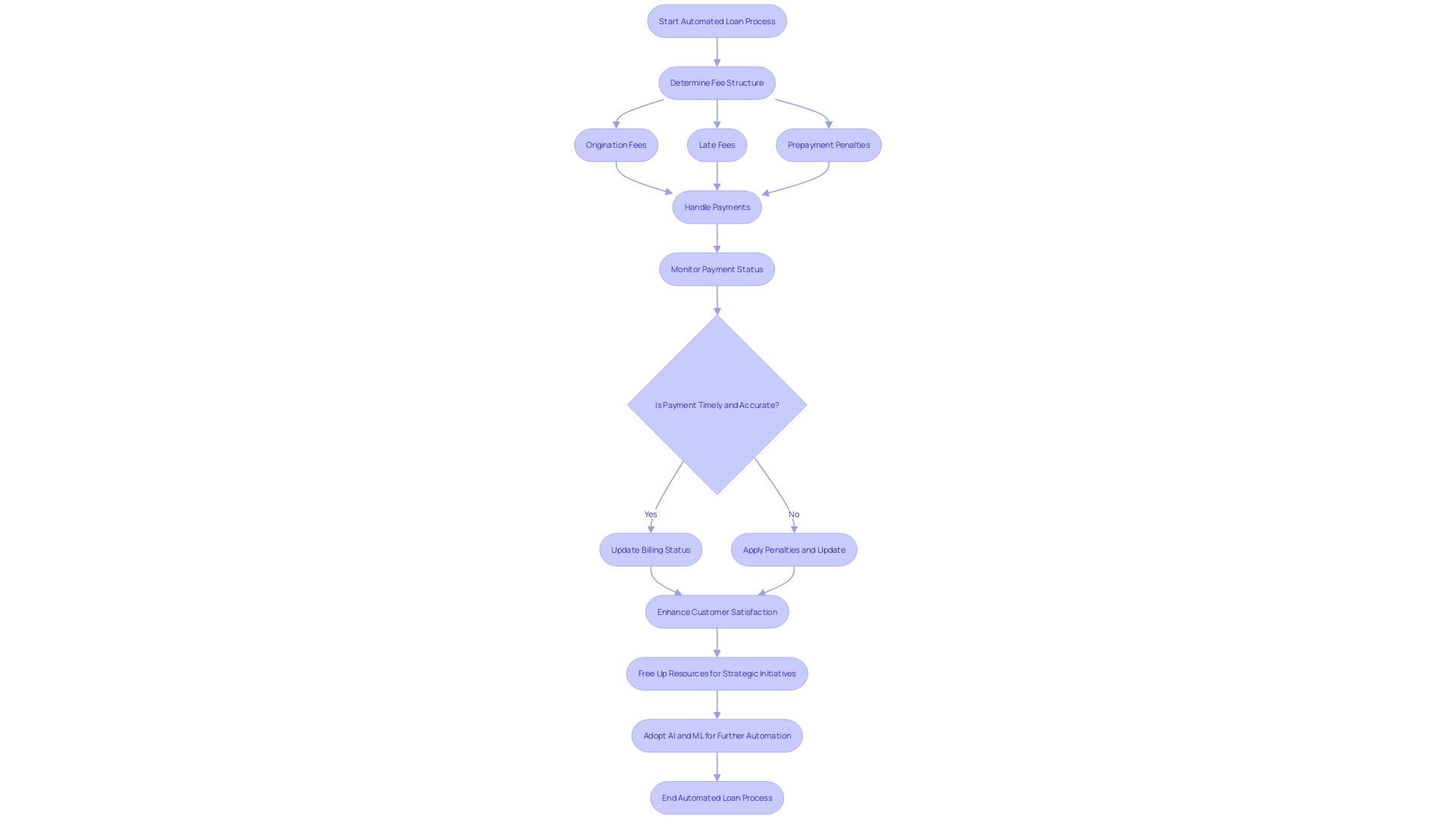
Payments and Waterfalls Management
Lending institutions face the intricate task of managing payments and navigating complex payment structures. Luckily, progress in automated loan and mortgage technology has revolutionized this landscape. These innovative systems provide a suite of tools that automate payment scheduling, escrow account maintenance, and intricate payment waterfalls, ensuring both accuracy and timeliness in payment processing.
By embracing Robotic Process Automation (RPA) technology, these solutions employ software bots that can perform a variety of tasksâfrom handling data to processing transactionsâacross different software platforms. This seamless integration across systems not only mitigates the risk of human error but also bolsters cash flow management.
Moreover, machine learning, a subset of artificial intelligence, enhances these automation platforms by enabling them to adapt and improve over time, providing tailored responses to borrower inquiries based on data analysis. The result is a heightened level of customer service that contributes to improved borrower satisfaction.
The effectiveness of automation in monetary operations is emphasized by a notable statistic from Accenture, unveiling that an astounding 80% of economic tasks hold the potential for automation. By capitalizing on this opportunity, lenders can redirect valuable employee time towards strategic initiatives and customer service excellence.
In the present economic situation, where consumer and corporate debt is increasingâas indicated by a national consumer debt reaching $17.29 trillion in the third quarter of 2023âautomated alternatives are more vital than ever. These systems not only streamline operations but also keep lending institutions competitive in a digital world where consumers expect personalized and technologically advanced interactions.
Seamless Integrations with Other Systems
As the industry of finance embraces the digital era, automated borrowing and mortgage solutions are becoming essential tools for lenders to maintain competitiveness and efficiency. These advanced systems, leveraging the latest in AI and machine learning, are revolutionizing how data is managed and processed. They provide smooth integration with essential third-party services such as credit bureaus and origination platforms, as well as financial management software. Such integrations are more than just a luxury; they are a strategic necessity, as evidenced by forward-thinking institutions like M&T Bank, which has recognized the importance of maintaining high-quality, streamlined code standards to ensure operational excellence.
The approach of centralized data management and the use of data orchestration create a more holistic customer profile by combining diverse data sources. This nonlinear analysis allows lenders to avoid rejecting potentially creditworthy applicants based on outdated or incomplete information. It’s an evolution from the traditional, linear data evaluation, which could create unnecessary barriers to loan approval. For example, Numerated’s platform leverages real-time data to improve the underwriting procedure for business lending, thus greatly enhancing efficiency from application to close.
The industry is also witnessing a shift towards Open APIs, allowing for more flexible, cost-effective integrations without the need for extensive customizations. This shift is anticipated to reduce the manual choke points that have historically slowed down the mortgage process. Dark Matter Technologies, along with other lenders, are pioneering a fresh approach by leveraging technology-driven innovations, with a specific emphasis on enhancing the experience of lending origination and establishing a higher benchmark for operational efficiency in the market.
These innovative approaches are not only streamlining operations but also enhancing the customer experience. By establishing a cohesive and effective processing ecosystem, lenders can minimize manual labor, enhance data accuracy, and deliver a quicker, more dependable service to their clients. While progressing, the incorporation of these automated methods in the lending procedure is not only about staying current with the times; it’s about establishing the foundation for the future of finance.
Benefits of Automated Loan Workflows
Optimizing the borrowing system through automated credit solutions is a game-changer for financial institutions. By leveraging technology to automate workflows, lenders can experience a substantial reduction in manual tasks. This shift not only speeds up the origination but also enhances operational efficiency to new heights. Moreover, the precision of automated systems diminishes the likelihood of human errors, fostering a more dependable decision-making process and mitigating risks associated with compliance.
The benefits extend to borrowers as well, who now enjoy a more seamless experience thanks to self-service options, diverse communication methods, and quicker loan approvals. On the flip side, lenders gain access to advanced analytics and insights, empowering them to make informed, data-driven decisions. Such abilities are vital for identifying trends and adjusting lending strategies to remain competitive in a market where, as per industry expert Shagun from SkyStem, an astounding 80% of operations can benefit from automation, including AI and ML technologies.
These advancements are not just theoretical. Real-world applications are manifest, as demonstrated by Delivery Hero’s approach to handling account recovery requests, which previously consumed 35 minutes per incident. By automating the process, the company saw a significant drop in both resolution time and the downtime employees faced when locked out of their accounts.
With the sector of money matters evolving and even big tech companies like Amazon and Apple inching their way into services related to money, traditional institutions must embrace automation to maintain their competitive edge and ensure compliance, as underscored by the FDIC’s recent actions against First Fed Bank. The incorporation of automated lending processes is, therefore, a strategic necessity for contemporary lenders seeking to excel in an ever-changing and regulated financial environment.
Implementation Steps for Loan Automation
To effectively execute automated lending alternatives, it’s crucial to commence with a thorough evaluation of your current procedures. Take a cue from industry leaders like M&T Bank, which, after 165 years of operation, has taken on the challenge of setting organization-wide Clean Code standards to enhance software maintainability and performance. Like them, evaluate your loan processes to pinpoint any inefficiencies or areas ripe for automation, and clearly articulate your objectives, such as increased efficiency or a better borrower experience.
When choosing the appropriate option, take into account the complete range of your organization’s requirements and ensure that the software not only corresponds to them but also complies with the highest security and regulatory standards. After all, the introduction of problematic software could lead to severe financial and reputational repercussions. Customization is essential; adapt the answer to suit your business model and ensure it integrates smoothly with your current systems.
Data integrity cannot be overstated during migration, and validation is crucial to prevent any inconsistencies that could affect operations or compliance. Training and managing change is also vital; employees need to understand how to leverage the new system effectively, which can be achieved by highlighting the benefits and providing robust support.
Before full deployment, pilot testing is essential to iron out any kinks and optimize the system based on user feedback. Once implemented, ongoing monitoring and evaluation will help you stay on top of performance and ensure your approach adapts to the evolving market. For example, with the rise of Proptech, the real estate sector is experiencing a transformation towards more transparent and efficient digital lending platforms, underlining the importance of staying current with industry trends.
Remember, Accenture’s research suggests a staggering 80% of financial operations could be automated, potentially revolutionizing efficiency and freeing up employees to focus on strategic initiatives. Embrace this potential and ensure your automated lending offerings contribute to a more dynamic, secure, and customer-centric lending environment.
Continuous Improvement in Loan Servicing Operations
Automated lending solutions are transforming the lending landscape, providing unprecedented efficiency gains and customer satisfaction improvements. For instance, consider M&T Bank, a long-standing institution with a history of innovation, which has embraced digital transformation to uphold rigorous security standards while meeting modern consumer expectations. Similarly, Hiscox’s adoption of automation reduced email response burdens by 28% and enhanced both customer and employee contentment, showcasing the operational benefits of such technologies.
The industry is shifting towards an all-digital customer journey, necessitating the rapid incorporation of new technologies. Companies such as Dark Matter Technologies are leading the way, offering tools for financial officers to better assess income and examine borrower documents. These advancements are crucial as they pave the way for more seamless origination processes and a competitive edge in the market.
Furthermore, resources like Floify’s ‘Drafting a Dream Team’ eBook, derived from insights of 150 top producers, offer guidance on leveraging technology to retain top talent and stay ahead of market cycles. And with over 60% of lenders concerned about market performance, an automated, tailored approach becomes even more vital for scaling businesses and supporting lending officers through market fluctuations.
As the lending industry evolves, it’s essential to recognize the transformative power of data. As noted by industry experts, consolidating vast data sources remains a challenge, yet it’s critical for developing a coherent end-to-end servicing strategy. Rocket Mortgage, a leader in the retail mortgage space, exemplifies this potential, having closed over $1.6 trillion in mortgage volume since its inception by consistently prioritizing a digital-first client experience.
In summary, embracing advanced automated loan solutions and ensuring clean, compliant code standards are not just operational enhancements—they’re essential strategies to thrive in the rapidly evolving, competitive mortgage landscape.
Conclusion
In conclusion, automated loan and mortgage solutions are transforming the lending industry. By leveraging artificial intelligence and machine learning, these systems streamline processes, reduce errors, expedite loan processing, and enhance customer experience. From loan origination to borrower management, these solutions offer practical and empowering solutions to the challenges faced by the Director of Operations Efficiency.
Automated loan solutions automate data collection, validation, and analysis, ensuring an efficient and accurate handling of loan applications. They provide secure document management and electronic storage, reducing delays and risks associated with physical paperwork. These solutions also automate the handoff and approval process, enabling effortless collaboration and accelerating decision-making cycles.
Borrower management and communication are enhanced through centralized platforms, facilitating personalized and timely interactions. Advanced analytics empower lenders to make informed decisions, manage risks effectively, and stay competitive in the financial landscape. These solutions bring numerous benefits, including reduced manual tasks, elevated operational efficiency, and a more dependable decision-making process.
Implementing automated loan solutions requires a critical assessment of existing processes, clear objectives, and selecting the right solution that aligns with security and regulatory standards. Customization, data integrity, training, and pilot testing are crucial steps in the implementation process. Continuous monitoring and evaluation ensure optimal performance and adaptability to market trends.
In summary, automated loan solutions revolutionize the lending industry by streamlining processes, improving efficiency, and enhancing customer experience. By embracing these solutions and implementing them effectively, lending institutions can thrive in a competitive financial landscape, providing a seamless and customer-centric lending experience.
Streamline your loan application process with automated loan solutions.
Introduction
The lending landscape is undergoing a transformative shift towards automation, revolutionizing the traditionally burdensome loan processing and mortgage management tasks. Cutting-edge technologies such as artificial intelligence (AI) and robotic process automation (RPA) are empowering lenders with efficient solutions that minimize manual labor and enhance accuracy. Automation is not just about speed; it’s about strategic financial management.
From back-office automation to agile credit policies, businesses can now offer tailored financial products and services. As we witness a surge in demand for more efficient, data-driven financial services, the integration of AI and RPA is proving to be more than just a trend—it’s a strategic necessity. This evolution presents an exciting opportunity for those ready to embrace automation and harness its benefits for improved operational efficiency, customer satisfaction, and ultimately, profitability.
The Need for Automation in Lending Processes
The lending landscape is undergoing a transformative shift towards automation, offering lenders a beacon of efficiency in the traditionally cumbersome loan processing and mortgage management tasks. Leveraging the power of cutting-edge technologies such as artificial intelligence (AI) and robotic process automation (RPA), today’s automated loan solutions are redefining operational efficiency by minimizing manual labor and enhancing accuracy.
For instance, the insurance industry, as shown by Hiscox’s application of automation, has seen a notable enhancement in their customer service’s responsiveness. By automating repetitive tasks, Hiscox managed to slash its workload by 28%, which not only improved customer satisfaction rates but also alleviated the stress on service teams. Guilherme Batista, Hiscox’s Process and Operations Manager, emphasizes how automation is pivotal in achieving sustainable growth without proportionally increasing operating expenses.
In the realm of finance, AI’s potential is being tapped to expedite services while ensuring fairness in the lending process. Startups are utilizing AI to accurately assess borrower risk profiles, reducing the incidence of loan delinquency. This is bolstered by the insight that a considerable 80% of financial operations, as noted by Accenture, could be automated, freeing employees to concentrate on strategic initiatives and customer satisfaction.
The deployment of these technologies is not just about speed; it’s about strategic financial management. From back-office automation to agile credit policies, businesses are now able to offer tailored financial products and services. This is especially crucial in light of current economic developments, such as the contraction in loan supply and demand for European SMEs, which is exacerbated by increasing interest rates, underscoring a widening SME funding gap.
As we witness a surge in demand for more efficient, data-driven financial services, the integration of AI and RPA is proving to be more than just a trend—it’s a strategic necessity. This evolution presents an exciting opportunity for those ready to embrace automation and harness its benefits for improved operational efficiency, customer satisfaction, and ultimately, profitability.
Consolidating Data for Efficiency and Security
Automated loan and mortgage solutions are revolutionizing the lending process by integrating data from various sources into one centralized system. This innovation is crucial for lenders who seek to avoid the pitfalls of manual data handling, such as errors and inconsistencies. With a unified data repository, lenders gain real-time access to accurate and complete loan information, empowering them to make swift and well-informed decisions.
This consolidation is not only a stride toward operational efficiency but also fortifies data privacy and meets the ever-stringent regulatory compliance standards.
To illustrate, consider the approach of Numerated, which harnesses data to expedite the lending process for businesses, thereby enhancing the customer experience. Similarly, MX’s data enhancement services aim to refine financial data to bolster decision-making and unlock new growth avenues. These examples underscore the transformative impact of aggregating data—a principle echoed by Gayathri Rajan from Adyen, who emphasizes the necessity of creating a single source of truth for customer transactions to mitigate the challenges posed by data silos.
Furthermore, Shagun Malhotra, CEO of SkyStem, highlights a surprising revelation: despite the widespread consumer use of automated financial services, a vast majority of financial operations within organizations remain untouched by automation. This disconnect presents a significant opportunity for leveraging AI and ML to automate key financial tasks, thereby freeing up valuable resources to focus on strategic initiatives.
Embracing a data-driven approach in the lending sector can yield profound operational benefits, as evidenced by a senior data scientist’s insights into the power of Python in connecting to diverse data ecosystems. By integrating multiple data sources, lenders can orchestrate a more nuanced and comprehensive analysis of customer profiles, thereby enhancing their decision-making process and avoiding the oversight of creditworthy applicants.
In conclusion, the adoption of automated loan and mortgage solutions represents a leap forward for the lending industry, promising increased efficiency, accuracy, and compliance, while also ensuring that customer needs are met with unparalleled precision and care.
Enhancing Customer Experience through Faster Lending Processes
Harnessing the power of artificial intelligence (AI) and machine learning, modern automated loan solutions are revolutionizing the lending experience for both borrowers and lenders. These cutting-edge technologies are adept at streamlining the tedious processes of document collection, verification, and underwriting, thereby slashing the time it takes to process a loan. The efficiency brought about by automation doesn’t just stop at quicker loan processing; it also plays a pivotal role in boosting customer satisfaction.
The significance of rapid lending procedures cannot be overstated, as it directly correlates with a borrower’s access to much-needed funds without unnecessary delays, fulfilling their financial requirements expediently. For lenders, this acceleration in the lending process means they are more likely to retain existing clients and attract new borrowers seeking swift financial solutions.
In practice, companies like Allianz Trade are integrating AI to complement the expertise of their professionals, enhancing customer service without compromising on the personalized attention that is crucial in the financial sector. Meanwhile, Hiscox’s implementation of automation has successfully reduced response times and unburdened service teams, fostering both customer and employee satisfaction—a testament to the transformative impact of automation on operational efficiency.
Furthermore, a glimpse into the future of lending is revealed by the Chief Technology Officer at Aro, who emphasizes the combination of open banking data with machine learning. This fusion is set to redefine customer engagement, as it allows for an unprecedented level of personalization in financial products by tapping into extensive insights from customer data.
To sum up, the adoption of AI and machine learning in lending is not just a trend; it’s a strategic shift that enables lenders to meet the contemporary demands for personalized, rapid, and efficient financial services.
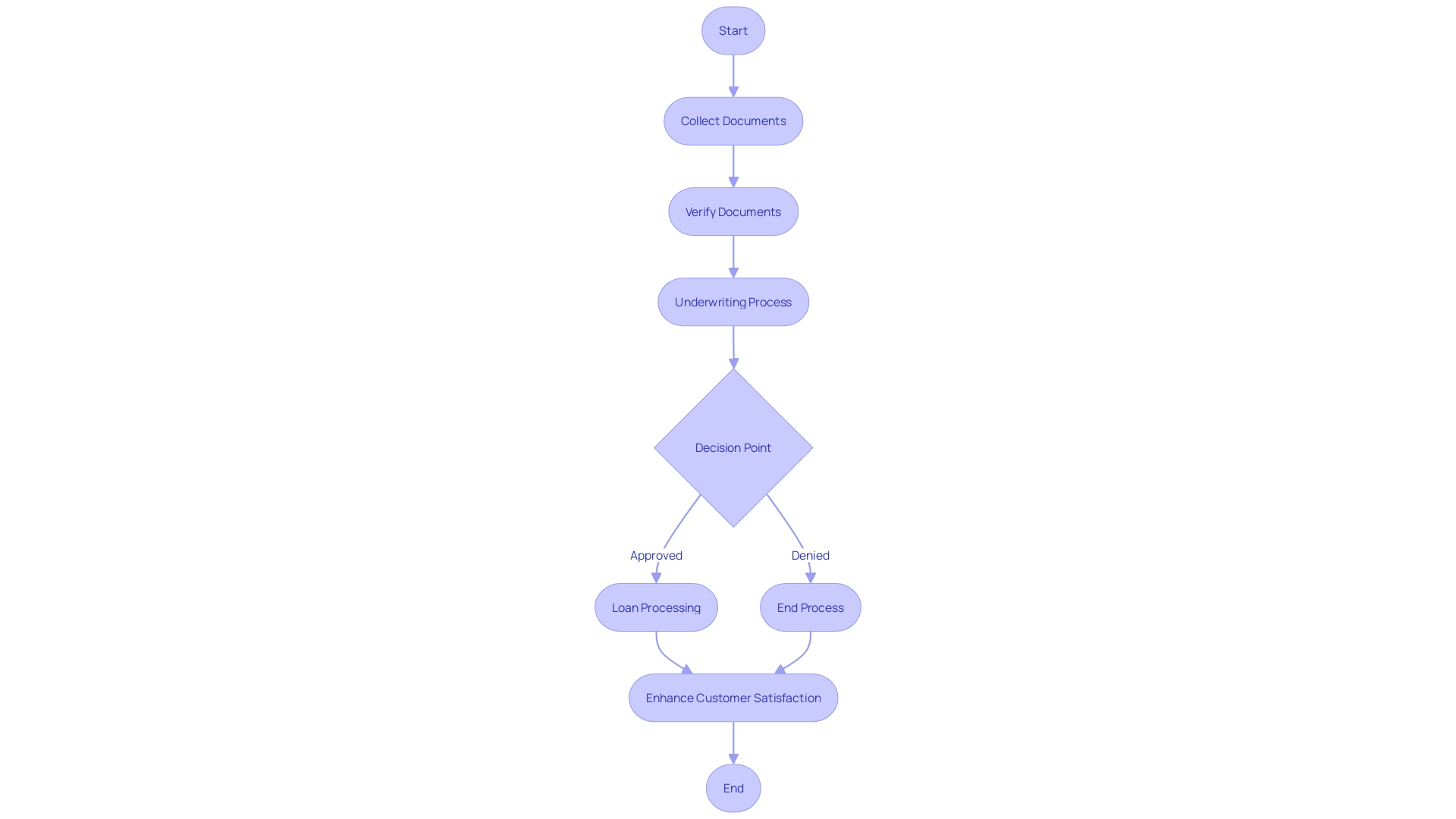
The Role of Automation in Loan Underwriting
Automated loan and mortgage solutions are revolutionizing the lending process, employing advanced AI-powered algorithms to assess borrower creditworthiness quickly and accurately. By aggregating and analyzing extensive data sets, including credit scores, income statements, and payment histories, these innovative tools offer a high degree of precision and consistency in underwriting decisions. In practice, this means a reduction in manual review, leading to a faster underwriting process that upholds fairness and objectivity.
For instance, Hiscox’s implementation of automation reduced their workload by 28% and significantly improved response times, a critical factor in customer and employee satisfaction. Moreover, aligning with industry trends, companies like Hiscox have seen sustainable growth by increasing revenue without proportionally increasing operating expenses. The integration of AI and machine learning in financial operations, such as those designed by System CEO Shagun, underscores the potential for automation, with Accenture reporting an 80% potential for automation in financial operations.
This shift towards automated systems not only enhances efficiency but also frees up valuable employee time for strategic initiatives and customer engagement. As machine learning continues to evolve, these systems are expected to become even more adept at providing tailored responses, further streamlining processes and potentially leading to faster decisions and earlier closings for borrowers, as suggested by the Mortgage Lender Sentiment Survey by Fannie Mae.
Conclusion
In conclusion, the integration of AI and RPA in the lending industry is revolutionizing loan processing and mortgage management. It offers efficient solutions that minimize manual labor and enhance accuracy, improving operational efficiency, customer satisfaction, and profitability.
Automation is not just a trend; it has become a strategic necessity. The surge in demand for more efficient, data-driven financial services has made the integration of AI and RPA crucial. Lenders can now offer tailored financial products and services, from back-office automation to agile credit policies.
Automated loan and mortgage solutions consolidate data into one centralized system, improving operational efficiency, data privacy, and compliance. Lenders gain real-time access to accurate loan information, making well-informed decisions and enhancing the customer experience.
AI and machine learning streamline lending processes, expediting document collection, verification, and underwriting. This leads to quicker loan processing times and increased customer satisfaction. The combination of AI and open banking data allows for personalized financial products.
Automated loan solutions employ AI-powered algorithms to assess borrower creditworthiness, reducing the need for manual review. This speeds up the underwriting process, ensuring fairness and objectivity.
In conclusion, the adoption of AI and RPA brings increased efficiency, accuracy, and compliance to the lending industry. Embracing automation allows lenders to meet the demands for personalized, efficient financial services. It improves operational efficiency, customer satisfaction, and ultimately drives profitability.
In an era where data is essential, Power BI is revolutionizing how businesses leverage their data for success. This article explores 10 outstanding Power BI dashboard examples, showcasing their transformative impact across diverse industries. Discover how Power BI’s dynamic features, from seamless data integration to real-time updates, offer unmatched flexibility and customization options, enabling your business to fully exploit the power of data.
Empowering Decision-Making with Data
In today’s rapidly changing market, data-driven decision-making is crucial. Power BI shines as a vital tool for businesses, especially small to medium-sized ones, by offering a platform to unlock the vast potential of their data with minimal resources. Its user-friendly interface and potent analytical tools allow businesses of all sizes to convert complex data into meaningful insights, leveling the competitive field.
Explore the Versatility of Power BI Dashboards
We’ve selected 10 high-impact Power BI dashboards that illustrate the tool’s versatility and how various sectors can use it for better decision-making. These examples demonstrate Power BI’s capabilities in transforming raw data into strategic assets.
The Game-Changing Power of Power BI Dashboards
Power BI stands out in the data visualization and business intelligence landscape. It converts large volumes of raw data into visually striking and intuitive dashboards, changing how businesses interpret and act on their data.
Key Features of Power BI Dashboards:
- Interactive Visualizations: Create charts, graphs, and maps that allow users to interact with data for deeper insights.
- Real-time Data Refresh: Stay updated with the latest information in a fast-paced business world.
- Data Integration: Combine data from various sources for a comprehensive analysis.
- Customization and Flexibility: Tailor dashboards with drag-and-drop functionality, advanced data modeling, custom visuals, and theming to fit specific business needs.
- Security: Implement role-based views to protect sensitive data.
10 Impactful Power BI Dashboard Examples
- Sales Performance Dashboard:
- Track sales trends
- Identify top-performing products and regions
- Compare sales target vs. actual sales
- Customer Service Analysis Dashboard:
- Analyze customer satisfaction scores
- Monitor average ticket resolution times
- Examine frequency of customer complaints
- Financial Overview Dashboard:
- Visualize profit and loss statements
- Break down monthly and yearly expenses
- Assess revenue streams
- Marketing Campaign Analysis Dashboard:
- Evaluate campaign ROI (return on investment)
- Measure lead conversion rates
- Calculate customer acquisition costs
- Inventory Management Dashboard:
- Monitor current stock levels
- Determine reorder points and times
- Analyze inventory turnover rate
- HR and Employee Performance Dashboard:
- Gauge employee satisfaction scores
- Assess turnover rates
- Track training and development metrics
- Project Management Dashboard:
- Oversee project timelines and milestones
- Monitor task completion rates
- Manage resource allocation
- E-commerce Insights Dashboard:
- Analyze website traffic and user behavior
- Measure sales conversion rates
- Examine cart abandonment rates
- Social Media Analytics Dashboard:
- Track engagement rates
- Understand follower growth and demographics
- Identify most popular content
- Production and Manufacturing Dashboard:
- Monitor production rates and quotas
- Track machine downtimes and maintenance schedules
- Evaluate quality control metrics
Conclusion
Power BI dashboards are indispensable for businesses in various sectors, helping them derive deep insights, make informed decisions, and propel growth. With Power BI, every domain – from sales and marketing to finance – can access a tailored dashboard, driving businesses to new heights of success.
